

Traveling to Japan pregnant (tips and information)
By: Author Wandermust Daddy
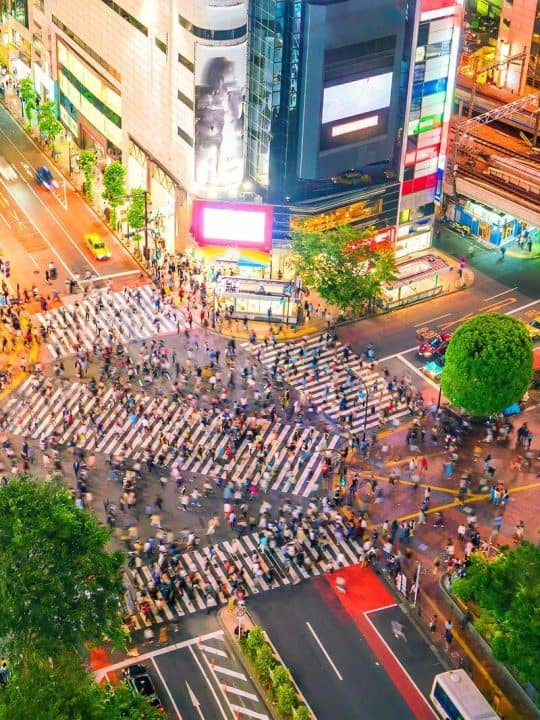
Are you considering traveling to Japan pregnant? In this guide we will round up everything you need to know about visiting Japan when pregnant, from where to stay, best time to visit and tips such as what you can and can’t eat in Japan when pregnant so you can have a safe and enjoyable babymoon in Japan.
Important Note : This post may contain affiliate links which means if you click through and make a purchase I will make a small commission at no extra cost to you!
Table of Contents
Traveling to Japan Pregnant Tips and tricks
Speak to your doctor before you travel.
Whenever and wherever you are traveling when pregnant you should always consult with your doctor first to get the ok and to get information and advice.
Prepare for a long flight

Flying with Morning sickness
Unless you are based in Asia, you are facing a pretty long flight to get to Japan. The best thing to do when flying when pregnant is to prepare for your flight.
For instance we always recommend wearing compression socks and booking an aisle seat so you can get out easily for regular walks and to get to the bathroom.
Also we recommend bringing some food on the flight with you, especially if you are f lying with morning sickness.
Prepare for Jet Lag
Now if you are coming from Europe or North America for your Japan vacation then it is best to be prepared for jet lag. Our biggest tip is to make sure you have plenty of snacks with you, keep to the correct meal time at the correct time and most of all make sure you get outside and into the sunshine to help reset your body clock.
Move Around but not too much
Japan has an amazing rail system and we recommend using it to get around and see more of this amazing country. However we recommend not moving around too much.
It can be tiring when traveling pregnant, therefore we recommend picking two places in Japan and sticking to staying to accommodation in these places and do day trips out if you want to see another city.
Avoid Rush Hour if you can
Although the Japanese rail system is amazing, the subway can get extremely busy at peak times. Although people will give us seats for a pregnant lady it can be hard to see and get near seats. Therefore my advice is try and avoid the Tokyo rush hour on the subway if you can.
Does Japan have Zika
When we were looking at where to do our babymoons we wanted to do a zika free babymoon. At time of writing the CDC classifies Japan as having no zika risk. However we always recommend checking up to date information on the CDC website to make sure you have the most up to date info.
Can you use an Onsen when pregnant?

can you use an onsen when pregnant
Onsens are a very popular pastime in Japan and again are something that a lot of people want to do in Japan. Hakone, is a a day trip from Tokyo and is very popular amongst people who want to have a true and authentic onsen experience.
Onsens are natural hot spring baths but the problem with these when pregnant is the temperature of the water. As any pregnant lady will tell you you are not supposed to have hot baths so hot onsens are a big no no.
There are some onsens that are cooler however these are hard to come by and temperatures can fluctuate therefore we would advise skipping the onsen when pregnant.
There are some foot onsens in Japan also, which providing your doctor is happy with you could use to say you have had at least some form of onsen experience.
Best Time to Visit Japan when Pregnant
When considering the best time to do a visit Japan pregnant or to do an Japan Babymoon there are actually two timeframes you need to consider:
- the trimester you wish to travel and best time in pregnancy to travel for a babymoon,
- the best time to visit Japan in terms of crowds and weather.
So firstly let us consider the best time to travel to Japan while pregnant.
The second trimester is often considered the golden month to travel to pregnant. That is because:
- during the first trimester you are more prone to morning sickness (unless you are like me and are unlucky enough to suffer throughout your pregnancy).
- you tend to, though not guaranteed, have more energy during your second trimester
- you aren’t as big as you will be in your third trimester when you might be more uncomfortable traveling.
Note : Obviously you should always check with your doctor before travel wherever you are going, and follow all their advice about pregnancy travel.
Personally I think the most important consideration for traveling when pregnant is the trimester but given the climate of Japan in the different areas it is worth considering how the time of year can affect your trip.
Japan in summer is very hot. In particular if you are visiting the Southern parts of Honshu island i.e. Osaka, Kyoto and Tokyo, you will find that it is very hot and humid in the summer.
The Northern Island of Hokkaido is much cooler in Summer but few people tend to venture North especially when pregnant. Conversely, in the Winter Hokkaido gets extremely cold and snowy so you will need to pack lots of layers if you are visiting at this time.
Therefore we recommend trying to visit Japan in the shoulder seasons of Spring or Fall. The climate is much more pleasant and will be easier to travel Japan when pregnant at this time.
What to Pack Traveling Japan Pregnant
Firstly the most important things to take whenever you travel pregnant are medication and ointments that you require such as:
- Medicines, Folic Acid and PreNatal Vitamins that you take – no one wants to have to dash to a pharmacy to stock up on essentials
- Medical Notes and Documents – no one wants to need these when traveling but it is always worth carrying them with you.
- bio oil / Coconut Butter – or any ointments or lotions you use on your tummy to try and prevent stretch marks
- sunscreen – you skin is more sensitive when pregnant so be sure to pack plenty of sunscreen with a high SPF factor.
- Anti-Chafe Balm – for your thighs in the heat
- Panty Liners for sweat
If you forget anything from the above list, your best chance of finding them in Japan is at a pharmacy.
We also recommend packing a reusable water bottle if you are visiting Italy at any time of year.
So now you know what you should pack, what should you wear to Japan pregnant?
At a minimum we recommend:
- Comfy shoes – for walking
- Maternity Swimwear – if your Japanese accommodation has a pool or you are heading to a beach in somewhere like Okinawa then you will want swimwear with you. Also many people have visiting a Japanese onsen on their Japan bucket list, however this might not be practical when pregnant – more on this later.
- Maternity dress – for cute pictures and also if you plan to eat out at some of the high end eateries in Japan.
- compression socks – to help deal with that long flight to Japan.
Also please remember if you want to visit an Italian church that there is a conservative dress code that applies even to pregnant travelers.
For more information for what to pack when traveling pregnant check out this post.
Eating in Japan while Pregnant
Can you eat sushi in japan while pregnant.
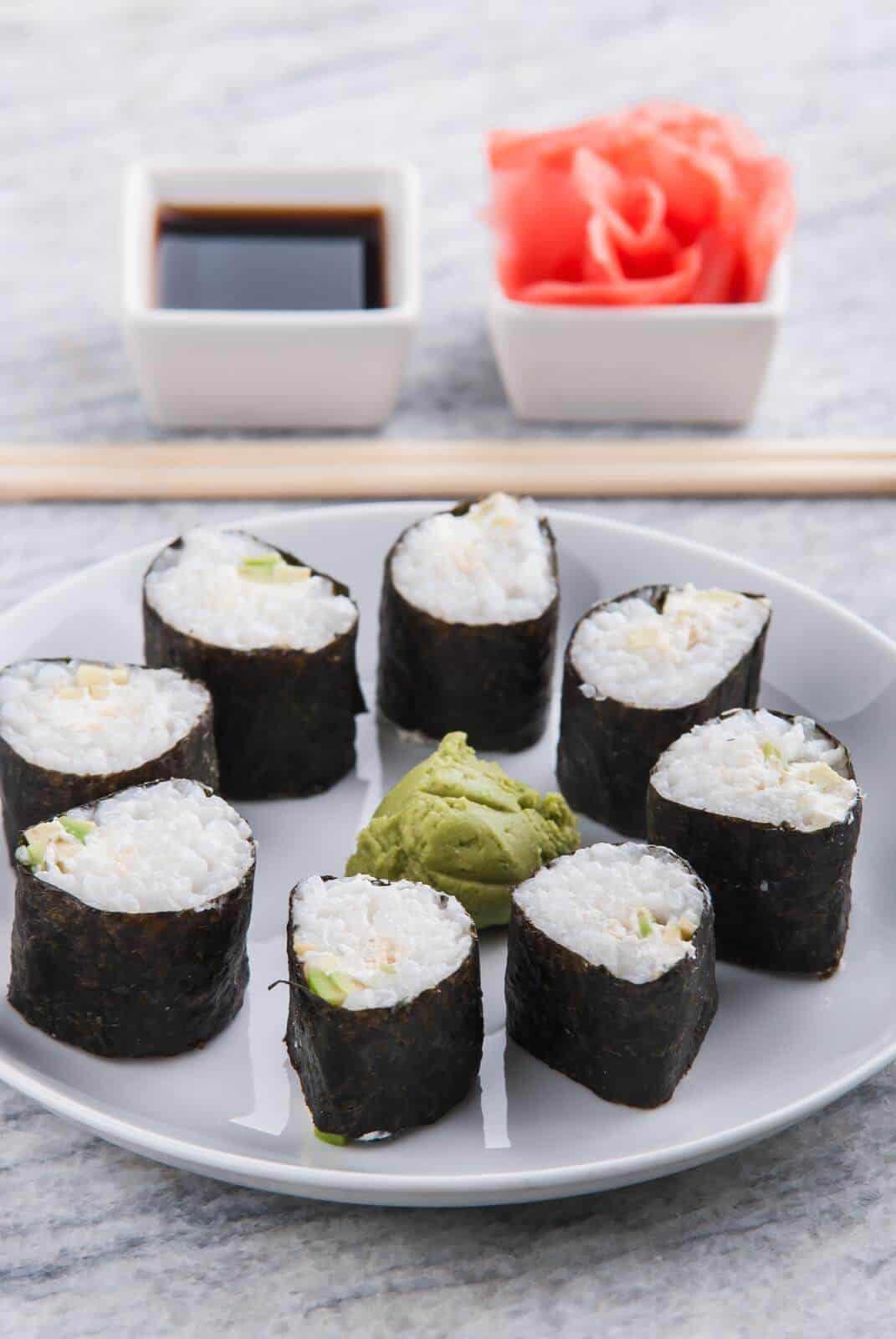
can you eat sushi pregnant in Japan
You will often hear that Japanese women will eat sushi while pregnant, but it is important to stress that is is not recommend for pregnant woman to eat raw or smoked seafood. Therefore we recommend choosing your sushi options in Japan very carefully.
If you do want to eat Sushi in Japan while pregnant then you should stick to vegetarian and vegan options and stick to low mercury fish that have been fully cooked.
Personally I avoided all sushi while pregnant, even vegetarian sushi but I did not feel like I missed out as there are so many other amazing types of Japanese foods such as tempura, udon, katsu curries and more.
Where to stay in Japan when pregnant
Capsule hotels when pregnant.
One of the types of hotels that Japan is famous for is capsule hotels but we recommend avoiding these when traveling to Japan when pregnant.
They are very compact, so it can be uncomfortable to stay in a capsule hotel while pregnant.
Staying in a Ryokan when pregnant
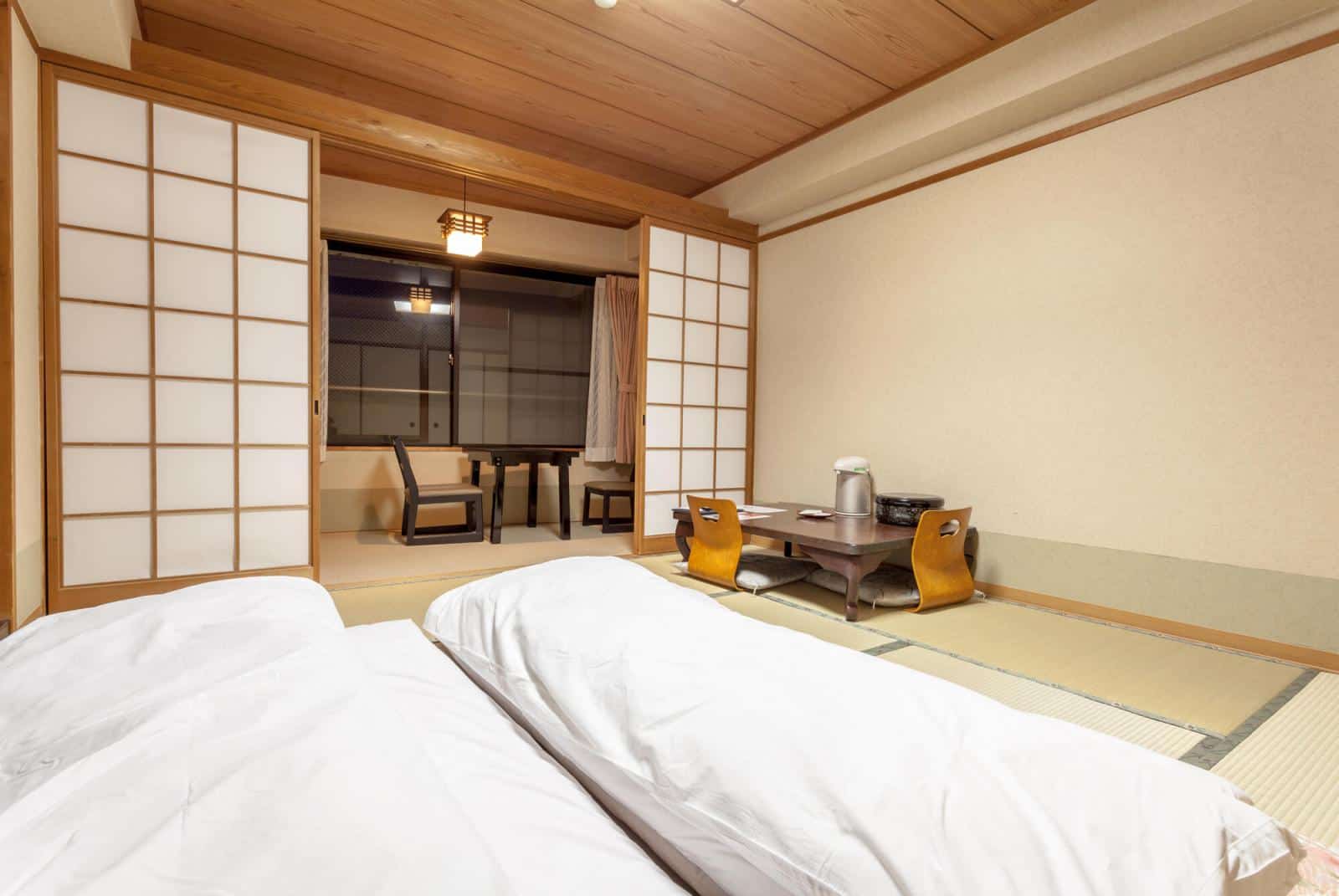
where to stay in Japan pregnant
Ryokans are another Japanese must do but should you stay in a Ryokan when pregnant? Ryokans are traditional Japanese accommodation and while a really special place to stay they might not be the best accommodation option when pregnant.
The reason for this is that the bed you get in a Ryokan is a futon that is laid directly onto the floor. Depending on how big you are, how mobile you are and how you are finding sleeping this may not be the best place for you to get a good night sleep but it really is a personal thing.
Also Ryokans usually come with delicious meals but the tables and seats here are likely to be low so you may want to consider if this will be comfortable for you in your stage of pregnancy.
Best things to do in Japan when pregnant
Japan is a country that is packed full of amazing things to do. Even our Japan 2 week itinerary only begins to scratch the surface of some of the amazing things that are on offer. In this section of the guide we will tell you some of our favorite cities in Japan to visit while pregnant and some of the best things to do in each one.
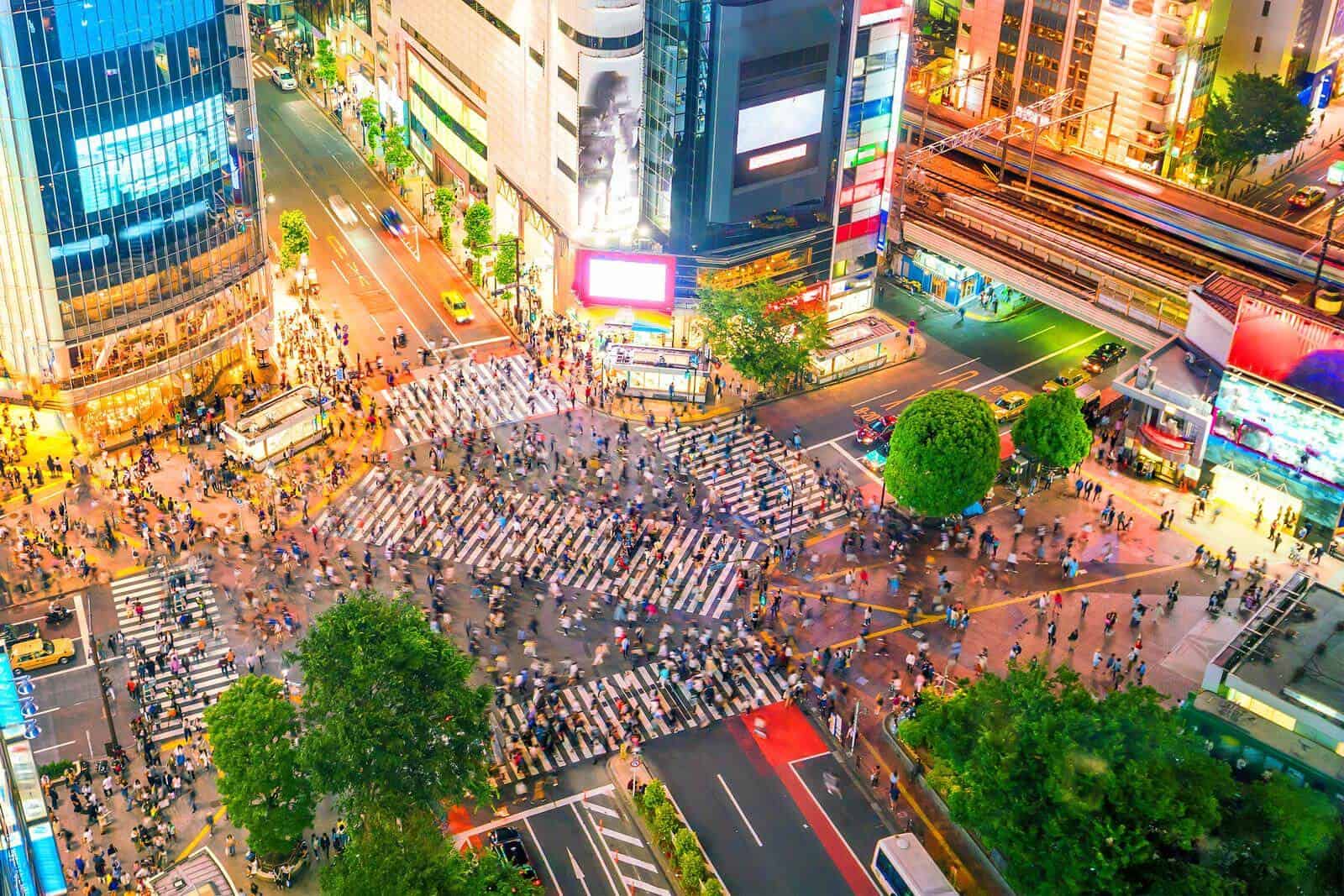
Traveling to Japan Pregnant
No Japan itinerary is complete without visiting Tokyo. Tokyo is the capital of Japan and the busiest place we went during our trip but not to be missed out.
It is also the most likely place you will fly into if visiting from Europe or North America and even Australia so is a great choice for when traveling to Japan when pregnant.
Some of our favorite things to do in Tokyo when pregant are Borderless Teamlab digital art museum, visiting the gardens and parks and of course visiting the famous Shibuya Crossing.
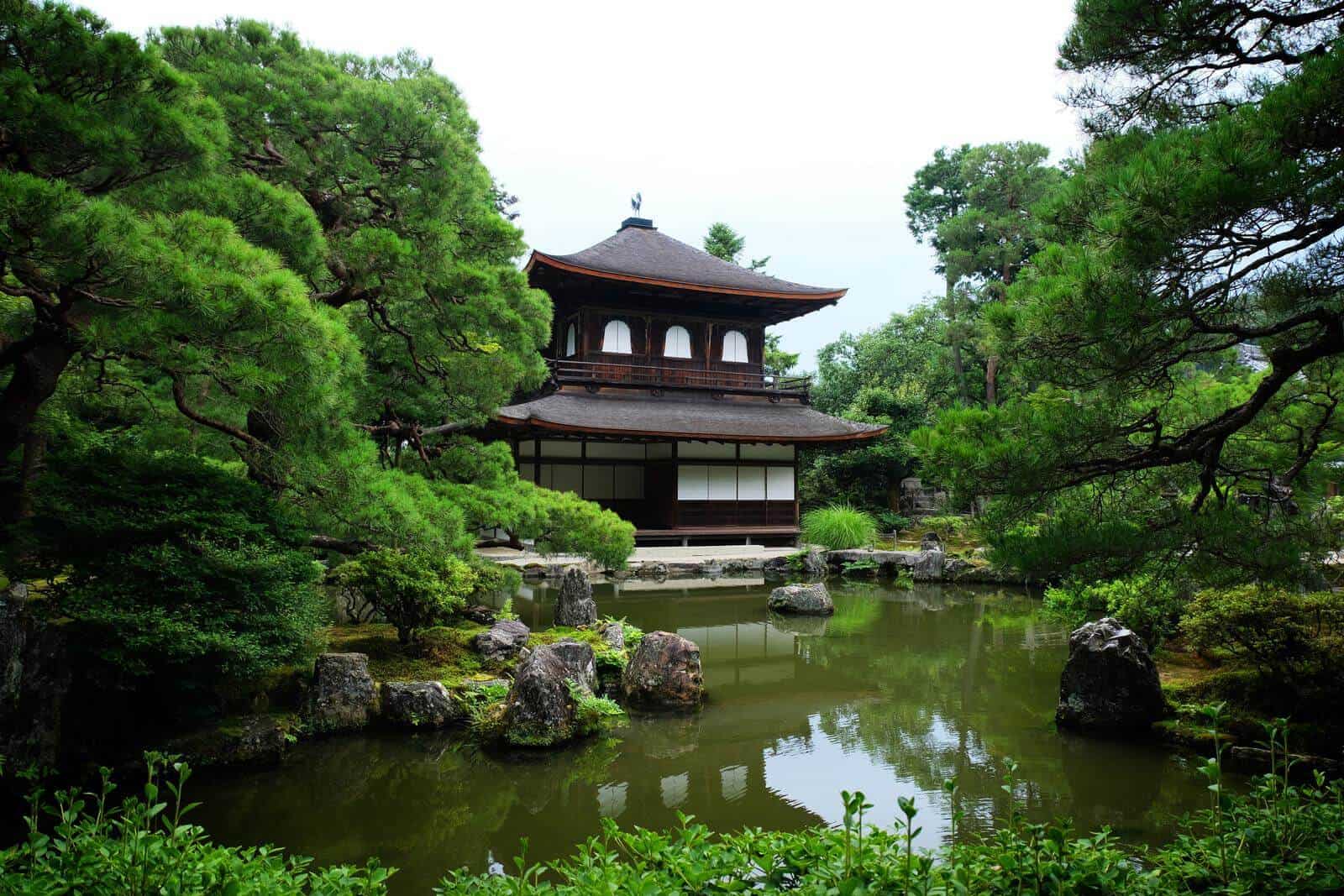
Like Tokyo, no Japan itinerary is complete without a visit to Kyoto.
Kyoto is the historic capital of Japan and the cultural heartland. I would personally that you should allocate a minimum of 4 days in Kyoto to make sure you cover all of the main cultural attractions. Some of our favorite things to do include Fushimi Inari Shrine, the Golden Pavillon, the Nijo Castle and the Gion District to name but a few..
It is also a great place to do day trips from as you can easily get to Osaka, Nara and the Bamboo forest from Kyoto.
Note : if you do go to Nara we would recommend not buying food to get and feed the wild deers. These deers can be quite fierce and it is not worth adding this risk into your itinerary esepcially when pregnant.
If you want a more relaxing babymoon then you might want to consider spending time in Okinawa for your babymoon.
Okinawa has some of the best beaches and resorts in Japan so if you want to truly want to relax on your Japan babymoon then Okinawa has to be on your list.
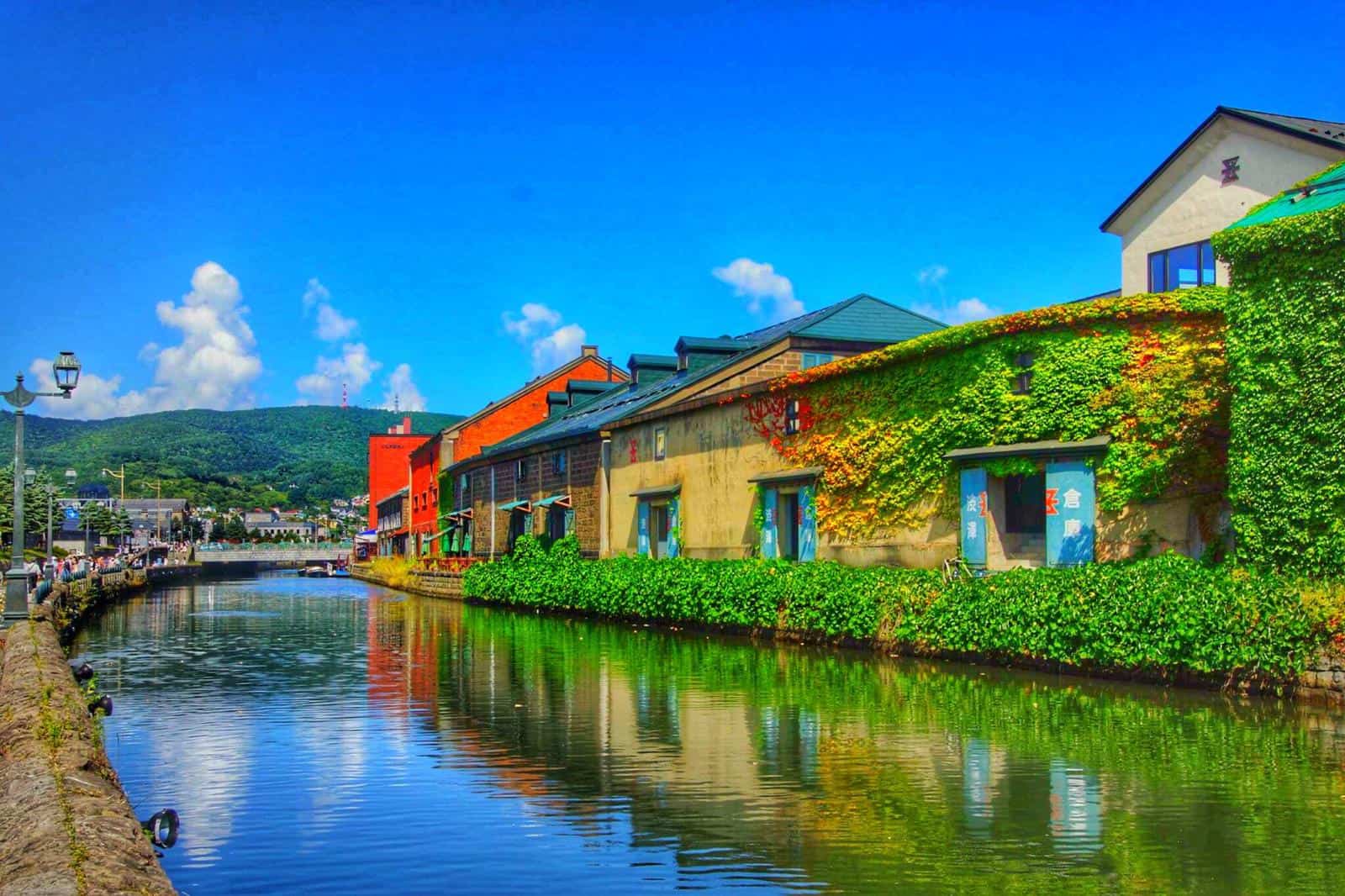
Otaru Canals Hokkaido with Kids – Hokkaido Itinerary
If you want to escape the summer heat in Japan or want to experience a lot of snow then you should consider heading to Hokkaido, the northern island of Japan.
I wouldn’t advise going to Hokkaido on your first visit to Japan especially if you are short on time but if you are a repeat visitor or like us are in the country for an extended amount of time it is definitely worthwhile. Check out our guides on the best time to visit Hokkaido and our Hokkaido itinerary for more information.
Have you traveled to Japan pregnant? We would love to hear what you did and how you found it in the comments

Being Pregnant While Traveling in Japan
You may happen to have long planned and booked a trip to Japan and be taken by surprise by an unexpected pregnancy. You may also be already pregnant when you decide to visit Japan . First of all, congratulations, this is the beginning of a great adventure!
Pregnant women are showered with all sorts of information, sometimes completely irrational and often stress-inducing, and it is important to sift through it with a critical eye and personal approach. It is no different when you travel abroad, especially to a far-away country and one that was hit by a major ecological disaster a few years ago.
However, provided that you comply with basic rules of precaution and act with proper common sense, it is quite possible for you to travel to Japan when you are pregnant. And since it may prove difficult to go again in the following years, you had better enjoy it to the full!
In Japanese, the word for pregnancy is 妊娠 ninshin . Let us mention in passing that Japanese women gain an average 8kg during their pregnancy.
A Useful Reminder of Basic Facts
Pregnancy can be broken down into three terms, which roughly correspond to the following stages:
- 1st term: intense fatigue and low resilience, higher risk of miscarriage and, in some cases, morning sickness.
- 2nd term: vitality recovered, lower risks.
- 3rd term: return of intense fatigue, freedom of movements restrained, risk of premature birth.
It is therefore best to plan a trip in the 4th and 5th months , possibly in the 6th. When you start your 7th month, some airlines will refuse to let you board the plane ✈️ anyway. Do not forget to follow the usual advice about wearing compression stockings and drinking plenty of water. You should also inform the cabin crew so that they are ready to assist you if necessary.
Of course you should avoid to plan long days of travelling or long hiking excursions with no breaks. It is actually best for you to take advantage of the safety, quietness and cleanliness of transport facilities in Japan, especially trains and taxis. You should wear loose-fitting clothes, carry a lightweight bag, use the excellent takuhaibin system to avoid carrying your luggage around, and drink a lot of fluids (water and tea, the latter more moderately on account of the theanine it contains).
Finally you should make a note of the contact details of hospitals where the staff will speak your language and keep them close at hand. In Tokyo for example, there is an international hospital called St Luke with an ER open around the clock (contact details: 9-1 Akashi-cho, Chuo-ku / Tsukiji station, exit #3 and then a 7-minute walk / phone 03-5550-7166 in English). Through your medical insurance or credit card 💳 supplier, you are probably covered for medical expenses abroad and you can also probably call a Helpline at all times. You should also keep the details of your country's Embassy in Japan handy.
Japanese Food and Pregnancy
Food requires the most attention. There are two main diseases which you must be careful not to catch when pregnant, wherever in the world you may be.
First of all, toxoplasmosis (トキソプラズマ症 toxoplasma-shô ), a parasitic disease to which over 50% of pregnant women are not immune. It may be passed to the fetus and cause serious brain damage (about six hundred births per year in France for example). In order to avoid infection by toxoplasma gondii, which may be transmitted by cat 🐈 scratch, when cleaning cat litter boxes or by contact with contaminated soil, it is strongly recommended to stay away from the following foods:
- Raw, marinated or smoked, i.e. undercooked meat (cooked rare or extra-rare, beware of surface cooking);
- Salads, raw vegetables, unpeeled or poorly washed vegetables and fruits.
Then listeriosis (リステリア症 listeria-shô ), a bacterial infection that can also be passed to the fetus and cause premature birth, infections and even death in 30% of cases. In order to avoid listeriosis, for which the contamination rate is 20% higher for pregnant women (fortunately there are only very few cases), stay away from the following foods:
- Raw or smoked fish or seafood, i.e. most sushi (for more information, read our article Eating Sushi during Pregnancy );
- Undercooked, therefore unpasteurized pork meat and pates, food products in aspic;
- Raw and/or non-pasteurized dairy products (milk, butter, cream);
- Most cheeses, in particular those with a natural crust and soft ones (although they are not very common in Japan);
- Food products whose “Best Before” date has expired.
Pasteurization may translate as パスチャライゼーション (pronounced the English way) or 低温殺菌 teion sakkin ( sakkin meaning sterilization), but unfortunately this information does not appear on all labels.
Other food products and drinks should also be ruled out:
- Alcohol consumption, from Sake to Japanese beers although they usually have low alcohol contents;
- Soybean in large quantities, because of its hormonal content, although it is harmless over a short period;
- Raw or undercooked eggs which may contain salmonella;
- Excessive salt consumption, a risk factor for pre-eclampsia.
Despite the above restrictions, Japanese cuisine is, however, sufficiently rich and diverse to offer you a large choice of delicious dishes!
If you are not sure how a particular food has been prepared or cooked, especially in a restaurant or at an outdoor food stand, and there is no way for you to find out, you should probably not eat it out of precaution. The best option is definitely to be put up in a house or flat where you can prepare your own meals. Through a smart use of bento 🍱 boxes, you may avoid a lot of stress. Also drink bottled water rather than tap water even though water processing is generally excellent.
For those of you who are wary of possibly contaminated products from the areas affected by the nuclear disaster of March 2011, watch out for kanji 福島 (Fukushima) and 宮城 (Miyagi) generally followed by 県 ( ken , prefecture).
If you have any questions or things you want clarified, do not hesitate to contact your Doctor, gynaecologist and/or obstetrician before leaving, or even from Japan (although remember the time difference).
Japanese Specificities
Of course you cannot very well choose the season for your trip to Japan if you are pregnant. You should follow the advice given to all travelers and take extra precautions. However, it is not advisable to travel in summer because of the very hot and humid weather. In the winter , you may wear a 腹巻 haramaki to protect your tummy : it consists of a padded belt which allegedly goes back to the time of the Samurai. We strongly advise you against onsen ♨️ where water temperature rises well over 40°C, which is very bad for the heart and bloodstream. You may occasionally visit sento which offer a large variety of baths. In any case, do not soak for too long and/or at temperatures higher than 37°C.
Because of the variety of services provided in Japan, you will daily appreciate the comfort of travelling while pregnant. You will find konbini and other vending machines on every street corner, especially in urban areas, which will make it easier for you to buy a snack or drink on the run. There are lots of escalators, for example in stations, and you should make extensive use of elevators. The Japanese are very organized and helpful and will see to it that your wait in queues and for visits is kept to a minimum. Also avoid long and frequent rides on downtown buses as it may be difficult to find a seat (for example in Kyoto ) and because the stop-start driving can be quite tough on the future mother.
Another minor inconvenience of public transport: people typically do not comply with the signs posted by the reserved seats (for the old and disabled, for pregnant women and women accompanied by young children ) at the back of train 🚅 and subway 🚇 cars 🚙 . This is quite surprising given the supposedly all-encompassing Japanese politeness. Do not hesitate to carry a copy of the official logo (the picture at the top of this article) and request that one of the reserved seats be vacated for you if you feel tired. You can say, for example: すみません、妊娠していますから。。。 Sumimasen, ninshin shiteimasu kara ("Please excuse-me, I’m pregnant").
Finally, do not forget to bring your own first-aid kit and cosmetics : moisturizing and sun cream (especially in summer), face care cream and care for stretch marks. Japan obviously offers a large variety of all such products but it will hardly be the right moment for you to scrutinize labels or try new products, allowing, moreover, for the risk of allergies and intolerances.
If you plan to stay longer or even give birth in Tokyo, and you can visit the Tokyo Pregnancy Group website where you will find all the information you need.
- Flights and Airports
- Accommodation
- Transportation
- Internet & Phones
- Budget and money
- Japanese Food
- Visit with Kids
- Seasons: spring / summer / autumn / winter
- Weather forecast
- Time in Japan
- Holidays & Festivals
- Natural Disasters
- Customs and Duties
- Works and Closures
- September 16 -- Day of the elderly in Japan (Keiro no Hi - holiday)
- September 16 -- Tsurugaoka Hachimangu (Yabusame) Festival in Kamakura
- September 21 -- Autumn starts in Japan
- September 23 -- Autumn Equinox (Shunbun no Hi - holiday)
- From October 9 to 10 -- Hachiman Matsuri (the Autumn Takayama Festival)
- October 22 -- Jidai Matsuri Festival in Kyoto
- Tokyo : Shinjuku , Shibuya , Harajuku , Asakusa , Akihabara , Odaiba , Ikebukuro , Ueno , Roppongi , Chiyoda , Ryogoku ...
- Around Tokyo: Kamakura , Nikko , Hakone , Mount Fuji , Mount Takao , Yokohama ...
- Kansai: Kyoto , Nara , Osaka , Mount Koya , Himeji , Kobe , Kinosaki , Kumano Kodo , Ise ...
- Japanese Alps: Kanazawa , Matsumoto , Takayama , Shirakawa-go , Nakasendo ...
- West: Hiroshima , Miyajima , Shikoku , Onomichi , Naoshima , Izumo , Kurashiki , Matsue ...
- South: Kyushu , Okinawa , Yakushima ...
- North: Hokkaido , Tohoku ...

- Temples and Shrines
- Gardens and Parks
- Hiking and Trekking
- Observation Decks
- Public Baths (Onsen and Sento)
- Festivals (Matsuri)
- Amusement Parks
- Visit on a Budget / Luxury

Keikaku is a travel agency specialist of Japan and providing different kind of services:
- Japan Rail Pass
- English speaking Guides
- Pocket Wi-fi
- Japan Nightlife
- Working in Japan
- Religion and Spirituality
- Arts and History
- Movies / Animated Movies
- Japanese Music
- Studio Ghibli
- Photos / Videos
- Weird Japan
- Translations
- Kana & Kanji
- Japanese Swear Words
- Honorific Suffixes (san, kun, chan...)
- Introducing yourself
- Thank you / Apologize
- Count / Say Your Age
- Say the Date / Tell the Time
- Happy birthday
- Enjoy Your Meal
- Writing your name

Kanas are the much-needed basic characters of written Japanese language. Memorize them at a fast pace with our method.

Ask any kind of question and share your knowledge about Japan in Kanpai’s community space, our Q&A section Kotaete.

Isshoni means "together" in Japanese: share your trip details (dates, places you would like to visit) and find companions to travel in Japan.

Create your Kanpai account to manage your profile and view your participation history (questions, answers).
Tips for Visiting Japan while Pregnant
This post may contain affiliate links. when you click on these links we receive compensation, at no expense to you, that helps this blog run. all opinions are our own..
We traveled to Japan when I was 11 weeks pregnant, in the midst of some pretty challenging morning sickness in my first trimester. We booked the trip several months ahead knowing that if things worked out, I would be pregnant on this trip. Unlike a lot of destinations, there isn’t too much you can’t do while pregnant. However, there are definitely things to be aware of before making your trip to the land of the rising sun. Japan makes a perfect babymoon for the couple who isn’t too keen on spending day after day laying on the beach. Beautiful sights, amazing culture, excellent food. It is also a destination that might be more of a hassle with a little one, making pregnancy a perfect time to knock Japan off your bucket list.
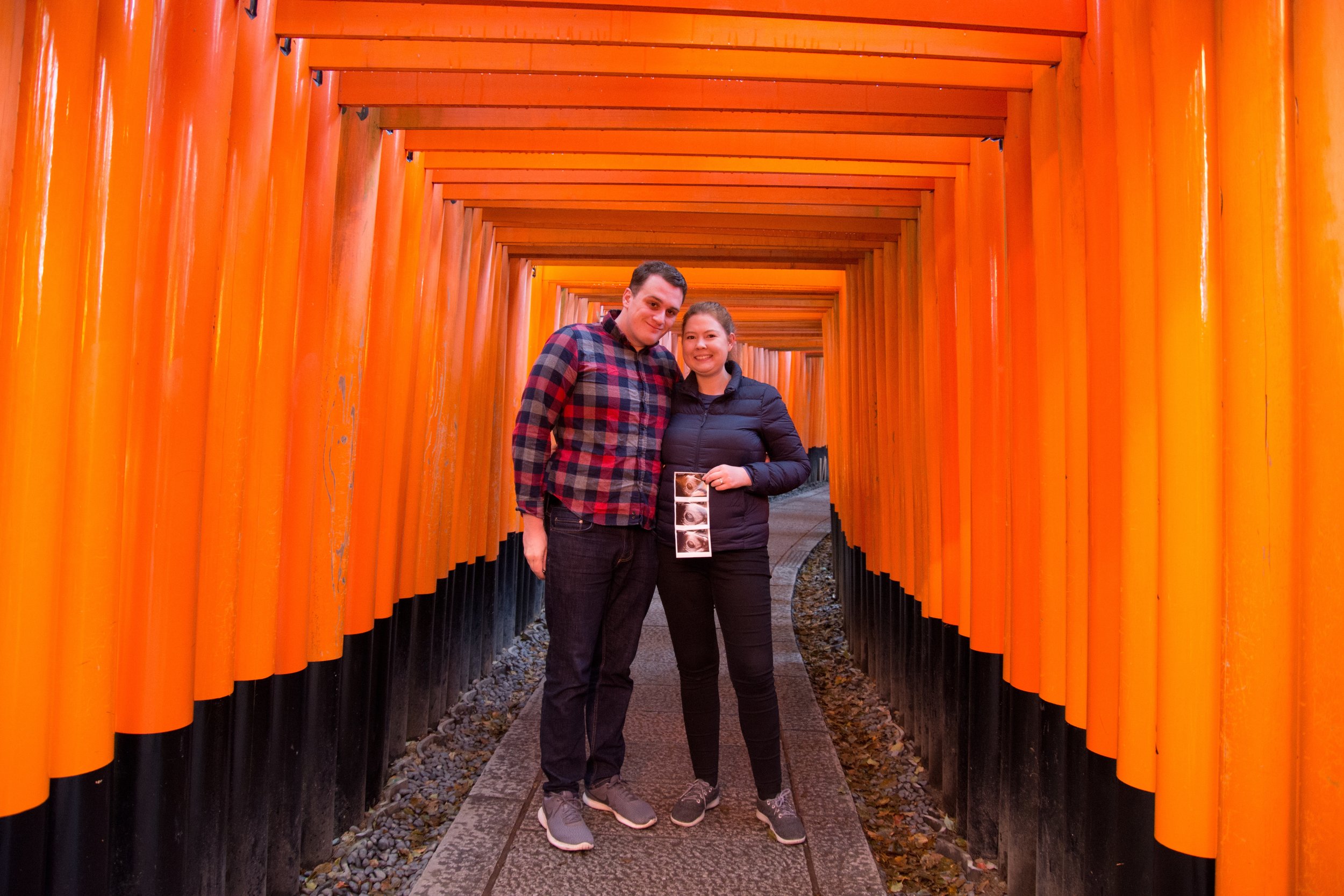
11 Weeks Pregnant at Fushimi Inari-taisha shrine in Kyoto, Japan
Plan for the Flights
Unless you are coming from somewhere else in Asia, you will likely have a pretty long flight before arriving into Japan. Long-haul flights while pregnant aren’t the most fun, but they don’t have to be daunting. Here are some basic tips to make the flight as painless as possible:
Bring your own food. With food aversions and the constant hunger, you will likely regret not having a stockpile of your favorite snacks to eat on the plane. If you are traveling on a Japanese airline, the meals they serve may not be the most appetizing or safe for you.
Fill up a reusable water bottle before boarding. To help manage your nausea and reduce swelling, drink lots of water. Ask for water anytime a flight attendant offers it to keep your water bottle full.
Get an aisle seat. With all that water you’re drinking and your growing uterus pressing on your bladder, you will likely need to make quite a few trips to the bathroom. As long as you are up walking every hour, you can help avoid swelling feet.
Take a baby aspirin . Obviously, ask your doctor first, but the blood-thinning properties of baby aspirin will help prevent clots and swelling. Make sure it is a low dose baby aspirin, as regular adult aspirin is not pregnancy-safe. Compression socks will also help prevent swelling.
Assume you won’t be able to sleep on the flight. Let’s face it, it is uncomfortable enough sleeping on a flat bed on stable land while pregnant. You may be able to get some sleep, especially if it is during your first trimester when you are extremely fatigued. However, don’t rely on it, even if you normally can sleep on flights. Bring headphones so you can spend your time watching movies. Plan a relaxed day when you arrive in Japan and an uncomplicated way to get to your hotel.

Arashiyama Bamboo Grove

Bring Snacks from Home
Traveling is often a time to be adventurous with food and sample all the local cuisine. Sometimes your pregnant stomach just won’t allow that. Food aversions are often stronger than food cravings. And if you are having a strong craving, you may not be able to find it while in Japan. Consider bringing some of your favorite snacks that you know you can tolerate and pack them with you. Note that not all food can be brought into the country. Do not bring any meat products, fruit, or vegetables. Packaged food will not give you any trouble when going through customs.
Stock up on Food from konbini
Hunger while pregnant doesn’t perfectly coincide with 3 regularly timed meals a day. Pregnant hunger is constant. While pregnant, I’ve been eating smaller meals every 2 hours. Many restaurants in Japan close mid-afternoon between lunch and dinner. This is a good 5-hour window with very limited food options. Convenience stores, or Konbinis, are not like the normal convenience stores you are used to at home. Most serve hot meals or ready to eat snacks. If you are running out of food that you brought from home or want to try some local snacks, stock up on food from one of the nearby 7-11s or Lawsons. This is a great option for when you are out exploring and don’t want to stop for a meal, for middle of the night hunger, or that dreaded 5-hour window when all other restaurants are closed.
Ask your doctor about Sushi and Onsens
Two of the most popular experiences tourists look forward to when traveling to Japan are the sushi and onsens. Both of which may not be the most pregnancy-safe. Japanese women eat sushi and bathe in hot onsens while pregnant – however, doctors from other countries might have different recommendations. Talk to your doctor prior to traveling to Japan to discuss their opinions.
I did not eat raw fish sushi or bathe in onsens, but my doctor did not absolutely restrict either. To get my sushi fix, I ate a great conveyer belt sushi restaurant with non-fish options (cucumber rolls, pickled carrot sushi, fried corn nigiri, avocado tempura). Onsens are natural hot spring baths and the major risk factor is your body temperature rising to unsafe levels for the fetus. As long as the onsen is below 100ºF (38ºC), your body temperature will not rise to an unsafe level. However, soaking in a hot bath can make you dehydrated. If you do visit an onsen, drink a lot of water to avoid a fainting spell or getting nauseous. If you feel like you are getting overheated, take a break and get out of the water. Check with the onsen prior to arriving to see the temperature of their water or if they have any restrictions for pregnant women.
Take it slow and Keep your Itinerary Flexible

Regardless of where you are in your pregnancy, you will likely be experiencing some level of fatigue and uncomfortableness. A recent research study found that pregnant women are essentially running a marathon just doing everyday tasks. Your blood volume increases, your legs have to hold up more weight, your abdominal ligaments are being stretched, your back is in pain as your center of gravity shifts, most of your body’s effort is working towards sustaining something that isn’t you, and you might even have a baby’s foot stuck in your ribs. Don’t feel bad if you have to walk slower than you normally do or if you have to take a couple of breaks walking up a set of stairs. Don’t feel bad if you have to take a taxi or the metro between sights that you would normally just walk between.
Listen to your body, if you are feeling like you want to call it quits for the day. Call it quits. It is not worth getting to the point of exhaustion. You might be spending more time in your hotel room or resting in a coffee shop than you normally do on trips, but you are still experiencing Japan. Plan out your itinerary to give yourself some free time at each city you visit in Japan. You might need to only do a half-day one day or if you are feeling great, you can fill that time with additional sights. Pregnancy lowers your immune system and traveling exposes you to a lot of illnesses, which means you might get sick on your trip. The only sickness I dealt with in Japan was morning sickness, but we traveled to Portugal a couple of months later in my pregnancy and I came down with a bad cold from the plane over there. As much as it sucks to be sick on vacation, the best thing you can do is to take a day or two off to recover. This is where flexibility or more free time in your itinerary is a lifesaver. You still have enough time to visit all your must-see spots without sacrificing the time you need to either recover from illness or general exhaustion from pregnancy.
Bring Nausea remedies
If your nausea is severe, talk to your doctor about possible prescriptions for nausea. If your nausea is only moderate, there are other non-prescription nausea remedies you may want to take with you. Even if you haven’t felt any nausea during this pregnancy, going to a new place with a lot of strong unfamiliar smells and a different cuisine may induce some nausea. Some of the easiest things to bring with you are sea-bands , ginger candies , or B6 vitamins . You may not have the best luck finding them in Japanese pharmacies or convenience stores, so bring your favorite remedy from home.
Consider spending more on ACCOMMODATIONS
When you think of Japanese accommodations, one of the first things you think of is capsule hotels. Even outside of the capsule hotels, the majority of hotel rooms in Japan are small with small beds. In order to get a larger bed (queen-sized or bigger), you will have to spend more money. A full-sized bed will get tight if you are traveling your partner and you have to accommodate them and your growing belly and extra pillows. Japan has a lot of business hotel that come at a lower cost but only offer full-sized beds. Look into western hotel chains or Airbnbs for a more comfortable sleeping arrangement. In Tokyo, consider the Hilton , Best Western , Hyatt , or Marriott .
Be aware of Japan’s Smoking laws
For all of the great things about Japan and all of their innovation, my biggest annoyance with the country is the high rates of smoking. Nearly 30% of Japanese men smoke (and 10% of Japanese women). We all know that second and third-hand smoke can be dangerous to pregnant women. We also know that it cannot be 100% avoided when out in public. Japanese laws make it even harder to avoid. Smoking is still allowed inside restaurants, bars, public areas, and some train cars. Some individual restaurants do ban smoking, but many don’t. If this is of major concern to you, look out for restaurants with a no-smoking sign on the door. More health-conscious restaurants are more likely to not allow smoking. When traveling by train, make sure you reserve a seat on a non-smoking car and one away from the inter-car smoking lounges. Some cities like Kyoto and Shibuya do have laws restricting smoking while walking on the sidewalks on most streets.

Shibuya Crossing

Row Boats at Chidorigafuchi Moat
Pack loose and comfortable clothes
It is hard to predict when exactly you’ll pop or how big you’ll get from week to week. Bring loose clothing that will be comfortable no matter if your belly seems to have doubled while you are in Japan and still looks good for the size you are now. More important than your clothes are your shoes. I switched between my comfy Allbirds and a more durable tennis shoe . If your feet get sweaty or you are traveling in the summer, I’d recommend the brand Ecco for sandals with good support.
Stay hydrated
Staying hydrated is important for your whole pregnancy, but especially when active and traveling. Carry a reusable water bottle with you at all times and fill it up the few times you come across a drinking fountain. Japan’s tap water is safe as well. If you are out and can’t find a water fountain where you are, you will definitely be able to find a water bottle at one of the ubiquitous vending machines.
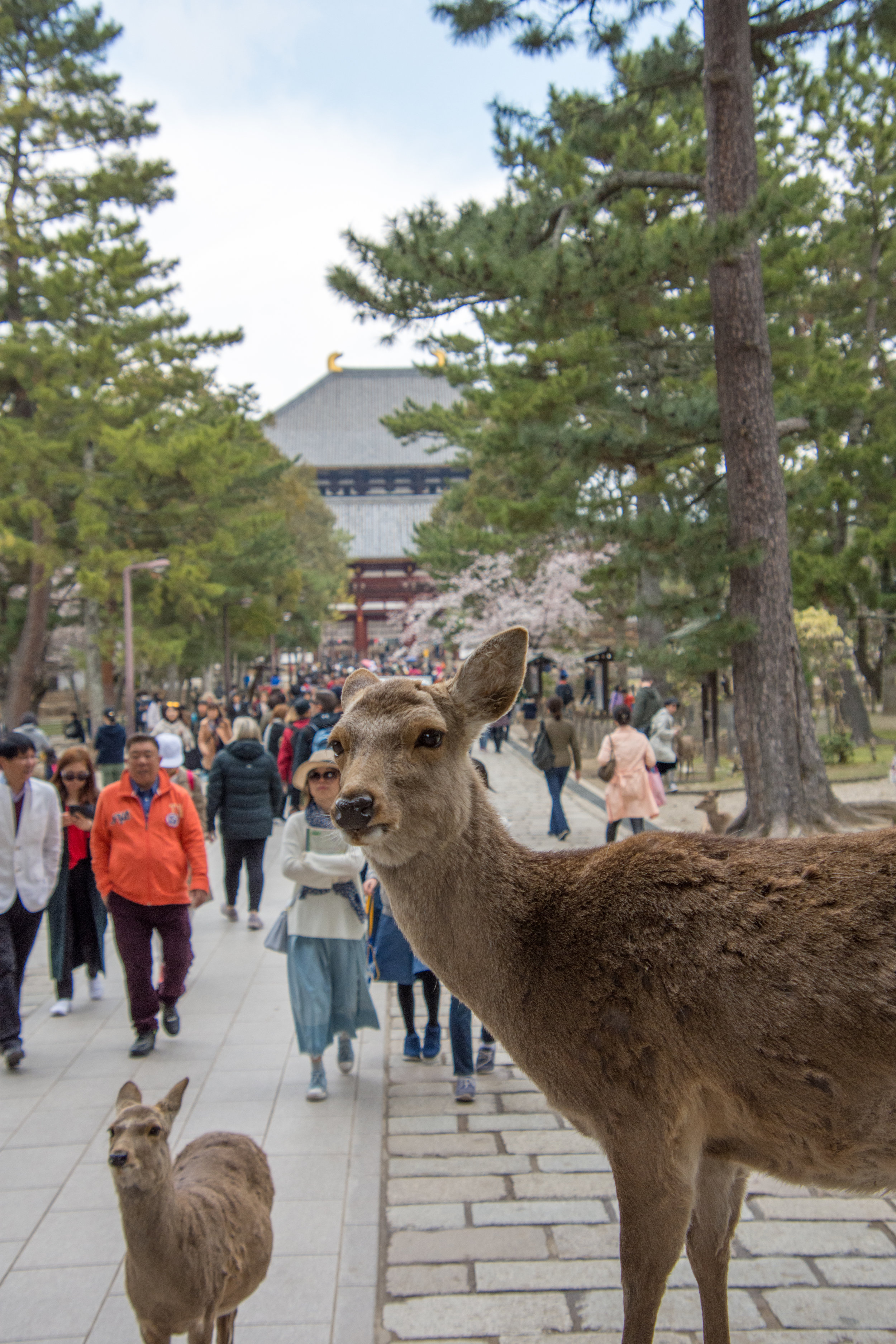
Pregnant Deer in Nara, Japan
Be cautious around Wild Animals
If you are visiting Nara or Miyajima, you will definitely encounter the large free-roaming wild deer populations. For both destinations, the deer add to the charm and are a must-see experience in and of itself. These deer are, on the whole, very friendly and accustomed to humans. However, they are still wild animals that can act out when frightened. They have been known to kick or bite visitors. That might be a bit of an understatement, some months a couple hundred people are injured by the deer. While you know to not intentionally provoke the deer, you don’t know if the deer you are approaching is already agitated from a previous tourist or fellow deer encounter. This is especially true during the fall, during the deers’ mating season.
While I wouldn’t say you need to avoid these places, especially since our day in Nara was one of my favorite. However, maybe not pay for the crackers to feed to the deer. Admire the deer but from afar. To keep things honest, I did feed the deer one or two crackers, prior to knowing the serious problem Nara has been having recently with deer-related injuries. I did not have any issues. Although, I also completely avoided touching the deer to avoid any potential diseases. There are also signs around the area warning against petting the deer. Focus on yourself and only photograph the deer from afar, and you will be fine.
Look closely at your Travel Insurance Policy
Not all travel insurance policies cover pregnancy or medical complications that may arise with pregnancy. Getting travel insurance that does cover those unexpected complications is very reassuring. You don’t want to be out thousands of dollars on a trip you had to leave early right before you are about to expand your family. Our favorite travel insurance, World Nomads , does cover pregnancy but only if you travel before you’re 26 weeks and have since had a low-risk pregnancy. It also only covers pregnancy-related issues that happen during your trip and not before. So if you get put on bed rest the week before you leave, the costs associated with canceling the trip will not be covered. Many other travel insurance policies will not cover pregnancy at all unless the coverage was purchased prior to becoming pregnant. We are still on the lookout for reputable travel insurance that covers all pregnancy complications both before and during travel, even if it was purchased after becoming pregnant. However, we feel it is still worth it to get a policy that at least covers you during your trip.
SO, NOW YOU KNOW THE DEAL, START GETTING INSPIRED WITH SOME OF OUR GUIDES TO JAPAN OR HEAD TO OUR JAPAN PAGE !

IF YOU FOUND THIS POST INFORMATIVE OR INTERESTING, SAVE IT ON PINTEREST TO REFER TO IT LATER!


Pregnant In Japan? Here’s What You Should Know
Last Updated on 2024-07-29 by Teni
Being pregnant is a life-changing event. And being pregnant in Japan? Here’s what you should know: You’ll discover that you knew absolutely nothing about Japan and Japanese culture by the time your tenth month is up! (Just kidding…kind of.)
Take comfort the fact that you can eat all the sushi that you want, because everything else is off the table (again, just kidding… kind of. ..)
Wanna wear cute flat sandals when it’s 32C out? Dame .
Wanna go to driving school? Dame .
(Seriously. I think it’s an insurance issue mixed in with a heaping of “women are more emotional when pregnant.” Here’s more about my experience going to driving school in Japan.)
Welcome to being pregnant in Japan.
Since this post was first published, it’s become of the most popular posts here on The Wagamama Diaries. I’ve since updated it to add useful items, clothing, and books that I used throughout my pregnancy.
Unfortunately, due to the pandemic and ongoing restrictions at medical facilities, some of the information presented in this post be not be applicable.
Confirming Your Pregnancy in Japan

There are two types, the First Response-type tests used the day of an expected period and tests that can be used a week after a missed period.
The tests that can be used a week after a missed period provide discretion as you simply take the box off the shelf, go to the register, pay, and leave.

On the other hand, First Response-type tests (早期妊娠検査薬 | shouki ninshin kensa yaku) while also found on the shelves, are merely a display of an empty box.
You must take the empty box to the pharmacy, fill out your name and address(!) to receive the pregnancy test. If there is no pharmacist on duty at the moment, you will not be able to make your purchase at that time. This is because these type of pregnancy tests are classified as “pharmacy drugs” (薬局医薬品) in Japan. (FYI: the same holds true for some kinds of cough syrups and even eye drops!)

HOWEVER, you can order First Response pregnancy tests online via Amazon Japan ! Most Japanese women avoid them (or are advised to avoid them) as the directions are not in Japanese and they are not manufactured in Japan therefore BAD .
Blood tests (血液検査 | ketsueki kensa) and urine tests (尿検査 | nyou kensa) to confirm a pregnancy can be done at a hospital or clinic.
Pregnant For 10 Months

Yet here, those 40 weeks become 10 months of 4 weeks each. Those ten months are further divided into three trimesters:
First trimester: 0 to 15 weeks (初期 | shoki ) Second trimester:16 to 27 weeks (中期 | chuuki ) Third trimester: 28 to 40 weeks (後期 | kouki ).
Anteiki (安定期) is a special word for the second trimester. It has no direct English equivalent but signifies the period in which the risk of miscarriage is less.
In the US, this period is after 12 weeks, but in Japan, it is at 16 weeks. Thus, pregnancy announcements in Japan are often made at the 16th week/5th month mark, which also coincides with Inu no Hi (戌の日) A Shrine Visit for Pregnant Women
Maternal and Child Health Handbook

They are available in English (other languages may vary by city). But, as each book/child is assigned a number, you can’t have a Japanese one and English one.
I want to point out one important thing: even though the book says “maternal,” it’s not an attempt to exclude fathers . The first pages simply contain all information about health of the mother throughout her pregnancy.
Clinics and hospitals in Japan record the results of your child’s physicals and dental checkups in the Maternal and Child Health Handbook as well.
In fact, the stickers on vaccine vials are affixed to the appropriate page so you’ll instantly know that vaccines your child has already taken.
Your child’s very first health entry will be the birth weight and length, and this book will be used up until your child is 6 years old. It’s a really fantastic journal of your child’s development which also has pages that parents can fill out.
I was a bit nervous having all of my child’s vital information in one place (what if I lose it?) but now I appreciate the convenience. I even carried my daughter’s boshi techo when we traveled abroad as it contains all of her health information.

Japanese mothers often purchase special boshi techo cases to store their handbook, hospital cards, insurance cards, cash, and other relevant items.
Pregnant in Japan — Maternity Badges

You’ll get one maternity badge when you register your pregnancy at city hall. I liked having extras so I didn’t have to worry about switching my badge when changing handbags.
They’re given out to help pregnant women find seats on public transportation . They go on handbags etc. with the idea that persons sitting will notice the pregnant woman and kindly offer her a seat.
The badges also serve as a means of communication for women who are too nervous or shy to speak up and request a seat. My advice is, if you really want to sit down, don’t be afraid to ask!
I don’t know if it’s people pretending not to see a pregnant lady or that they’re really just that oblivious to their surroundings. But please don’t make yourself suffer! For tips on getting around town see this post: Navigating Tokyo While Pregnant Or With A Baby.
I really want to stress the point of speaking up, (not being sassy, mind you, but speaking up for what you need.) Because you will need to use your voice to be your child’s advocate in the future!
Maternity badges are available for free at public health centers and some train stations. Pregnancy magazines often have specially designed maternity badges attached as a bonus gift with purchase. You can also get them when checking in at airlines, and of course on Amazon Japan.

Vouchers will help subsidize the cost of tests while vouchers for three ultrasounds free of charge are provided. Even with the vouchers you can expect to pay between 500 yen to 10,000 yen depending on the tests.
From 4 to 10 weeks, checkups are 2-3 weeks; From 12-23 weeks, checkups are every 4 weeks, then from 24 to 35 weeks, checkups are every 2 weeks, From the 36th week of pregnancy, checkups are weekly, and once you past the 40 week mark, check ups are twice weekly.
At every appointment, they’ll take your blood pressure and weight, and a urine sample. The doctor will check your ankles for swelling, measure your growing bump and check the baby’s heartbeat as well.
Pregnant in Japan — Checkup Schedule

2nd Month (4-7 weeks)
- Confirmation of pregnancy
- Transvaginal ultrasound
3rd Month (8-11 weeks)
- Cervical cancer screening
4th Month (12-15 weeks)
- Ultrasound if necessary
5th Month (16-19 weeks)
- Quad screen test (voluntary, done at 15 weeks)
6th Month (20-23 weeks)
- 4D ultrasound
7th Month (24-27 weeks)
- Glucose challenge test
8th Month (28-31 weeks)
- Blood test for anemia
- ATLA screening
9th Month (32-35 weeks)
- Gestational diabetes, chlamydia screening
- Medication and retest for those who tested positive for chlamydia
10th Month (36-40 weeks)
- Ultrasound and fetal measurements
- HPL screening
- Non-stress test
Pregnant in Japan — Weight Gain

You can forget about “eating for two” in Japan, but at least you won’t have to give up sushi !
My advice is: don’t let the doctors bully you or make you feel bad for the “excess” weight you again. I worked while pregnant, up until going on maternity leave in December.
My appointments were always in the afternoon, after work. I’d be there, 2 meals full, dressed in winter clothes, without a single care. I knew what the scale said in the morning, anyway!
Prenatal vitamins (プレナタルビタミン | purenataru bitamin) and folic acid (葉酸 | yousan) aren’t really suggested as doctors will encourage you to get nutrients through your diet.
However, if you have anemia (貧血 | hinketsu) like me, you’ll likely be prescribed iron supplements (鉄剤 | tetsuzai). I have a list of 10 Japanese Drinks Rich in Iron if you need the extra boost!
Pregnancy weight gain in Japan is based on BMI. For reference, please look at the following guidelines, which are from a handbook provided by my hospital. Please check with your healthcare provider on their weight gain guidelines.
Japan BMI & Pregnancy Weight Gain Guidelines
Underweight/BMI 18.5 and under: Suggested weight gain: 10-12kg
Average/BMI 18.5-25: Suggested weight gain: 7-10kg
Overweight/BMI 25 and over: Suggested weight gain: 0-5kg
Hospital Reservation

Keep in mind that some places may charge a deposit at the time of reservation, which can be used towards the final balance of your hospital stay .
There are many factors to consider when choosing a hospital. For example, distance and ease of attending appointments is a major factor. You may prefer a doctor who can speak English/your native language, as well as your level of comfort around staff. Your reasons for choosing your birth clinic/hospital are the only ones that matter .
In my case, I was already a patient at the OB/GYN where I gave birth, but I briefly considered changing hospitals.
What prompted me to stay was familiarity with the staff and facilities. Also, I planned to work up until maternity leave, so I needed a hospital within commuting distance from my home and kindergarten, as well as open on Saturdays.
Think about your birth plan (バースプラン | ba – su puran ) but be aware that hospitals and clinics may be unable to accommodate your desires.
Other questions to consider are:
Will my partner and/or children be able to attend the birth? (立ち会い出産 | tachi ai shussan )
Does the hospital give epidurals? (無痛分娩 | mutsuu bunmen )
Does the hospital provide private rooms? (個室 | koshitsu )
Will my partner and/or children be able to stay with me? (お泊り | otomari )
As it will be your birth , think about the facilities and services that best match YOUR needs . Don’t let any doctors or nurses push you around. Be the best advocate that you can be for you and your child.
Pregnant in Japan – Useful Items
Here’s a very basic list of items that I found useful during my pregnancy and after giving birth:
I’m anemic, but the nutritionist at my OB/GYN swore up and down that I could meet the necessary daily intake of iron with a balanced diet. (She also told me to stay away from fruit because of all the sugar content, but anyway… #pregnantinjapan ね!) Well, I ended up needing to take iron tablets and even then, it wasn’t enough. I took 2 of these Pigeon iron-calcium-folic acid tablets daily, and I also kept citrus-flavored folic acid & iron lozenges in my desk at school.

These days, I still rely on supplements to boost my iron levels. These berry-flavored UHA iron and folic acid gummies are my favorite!
Compression Socks

These compression socks are designed with the needs of pregnant women in mind. Wear at home or in the office to soothe your legs of tension, restlessness and to prevent/relieve swelling.
Kyusoku Jikan Leg Sheets

Nursing Camisole

I wasn’t sure if I would breastfeed or not, but purchased several of these tops just in case (and also because regular bras just weren’t cutting it any more!). I found these useful in the summer because I could layer them with jeans or a midi skirt and cardigan and be out the door. Available on Amazon Japan .
Maternity Underwear

I didn’t pay heed to the “keep your belly covered!” superstition, but as my bump grew in the winter months, so I really appreciated these high-waisted panties. I continued to wear them even after giving birth, too! Available on Amazon Japan.
Maternity Bras

I liked these m aternity bras because they are simple and provide support without irritating sensitive breasts. I tended to wear nursing bras instead of nursing camisoles when sleeping.
Maternity Girdle Set

Maternity Jeans

My sister-in-law had some of her maternity clothes in storage and she gave me a pair of these stretchy maternity jeans! I worked up until going on maternity leave, and these held up well in the classroom and on field trips (like potato digging !) Available on Amazon Japan . Winter version (with a warm, fuzzy lining) available here .
Postpartum Underwear Set

These look like regular nursing bras and high-waisted maternity panties at first glance. But, the panties have a Velcro crotch so you’ll be able to change your maternity pads and go to the toilet with ease. Definitely worth having a few pairs of these in the weeks after delivery! Available on Amazon Japan .
Postpartum Sanitary Napkins

I got several packages of these Dacco postpartum sanitary napkins from my hospital. They measure 41cm long, are very absorbent and have large wings to keep them in place. Regular sanitary napkins are not enough for the postpartum discharge, not even the extra flow ones , so do yourself a favor and stock up accordingly!
Nursing Pads

Postpartum Girdle

These look super intimidating, and I clearly remember the midwife strapping me into one after delivery . This belt has several major roles: to ease the uterus, organs and muscles back into place; to relieve back pain; to ease postpartum discomfort.
For baby registry inspo, check out this post: 20 Best Amazon Japan Finds For Babies and Toddlers
Pregnant in Japan — Reading Resources
These are the English and Japanese books that I used throughout my pregnancy. I supplemented the information in English books with real-life experiences/vlogs, etc. online. And, I used a Japanese pregnancy book so I could follow along during checkups and prenatal classes.
What To Expect When You’re Expecting

Ina May’s Guide to Childbirth

Good luck on your journey! Please check out the following related posts on being pregnant in Japan, giving birth in Japan, taking maternity leave and daycare information:
Birth in Japan: Natural or Epidural?
Birth In Japan: Hospital Stay
Maternity Leave, Childcare Leave, and Paternity Leave in Japan
The Cost of Giving Birth in Japan and How to Pay For It
Japanese/English Baby Names For Boys and Girls
An Inside Look At Daycare in Japan
And, take a peek at some of the Japanese celebrations that await your little one:
Omiyamari: Baby’s First Photo Shoot and Shrine Visit
O-kuizome: An Elaborate Feast for Baby
Hatsu Sekku: Momo no Sekku and Tango no Sekku
Share this:

Related Posts

All About Gakudo: A Guide for Parents Navigating After-School Care in Japan

From Kindergarten To Kanji: Your Guide To First Grade in Japan

10 Tips To Make Your Japanese Apartment Kid and Dog-Friendly
Leave a reply cancel reply.
AKA Everything I wish I knew before my daughter entered first grade!
From private school exams, public school curriculum & fees, to daily grind and yearly event calendar, food allergies, PTA memberships, and after school daycare options, I’ve got you covered:
READ IT HERE
- Tips for Living
10 Things to Prepare if you Become Pregnant in Japan
A basic guide about pregnancy in Japan.

Whether it is wanted or by surprise but desired, a pregnancy is always a mixture of emotions. Joy and euphoria but also nerves and fears, especially if it is the first time. And those nerves are even more so if you are also in another country, completely different from your country of origin and without your family (especially your mother). Pregnancy and childbirth is universal, but the way of managing the pregnancy process, the treatment or practices in hospitals, economic aid from the government, etc. can be very different in countries with different cultures or ways of life.
Future foreign mothers in Japan have to deal with the hormone revolution and what this implies on an emotional level, the physical discomforts that pregnancy can cause (nausea, dizziness, etc.) on many occasions without the support of their family, with their partner having to going to work every day, which leaves them alone with the pregnancy. It’s hard enough to also have to deal with cultural differences. So with this article we want to help a little to facilitate the process of being pregnant in Japan for foreign women (especially those who do not speak the language).
1. Take a pregnancy test at the hospital
(recommended 5th to 6th week of pregnancy)
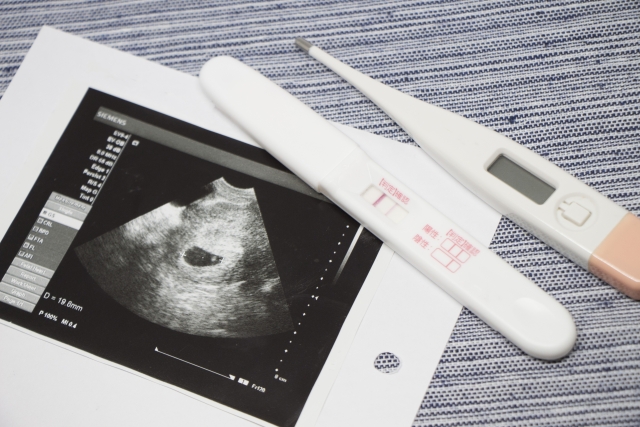
It may seem obvious, but the first thing to do is confirm the pregnancy. That your period does not arrive on the scheduled date can be a great joy or make you panic, depending on the situation of each one. But in any case, before letting yourself be carried away by one feeling or another, you have to make sure.
If your period is a week late than expected, the first step would be to buy a pregnancy test at a pharmacy. Although it may be difficult to have to spend a week with these feelings and doubts, almost all pregnancy tests in Japan warn that they are only 99% effective after a week of your missed period. If you do not know how to order these tests at the pharmacy, in Japanese they are called 妊娠検査薬 ( ninshin kensayaku ) but if you say 妊娠判定テスト ( ninshin hankie tesuto ) they will also understand you. In fact, on some sites they have it written in the second way. For who does not know, 妊娠 ( ninshin ) means pregnancy.
If the result is positive, the next step is to go to a clinic or hospital as soon as possible for a doctor to confirm or not the result. If the result is negative, but your period still does not show for several more days (sometimes your own nerves due to insecurity can delay your period), it is also highly recommendable to visit a doctor (it could be a false negative, or it could be someone other medical problem that needs to be looked at). In either case, it will always be a doctor who must confirm the pregnancy.
For those who do not want to wait a week there are an early pregnancy test called 早期妊娠検査薬 ( souki nishin kensa-yak u). However, they are not so easy to access (you need a pharmacist and not a simple drug store and fill in various personal information, like your name and address).
2. Get your Mother and Child Health Handbook
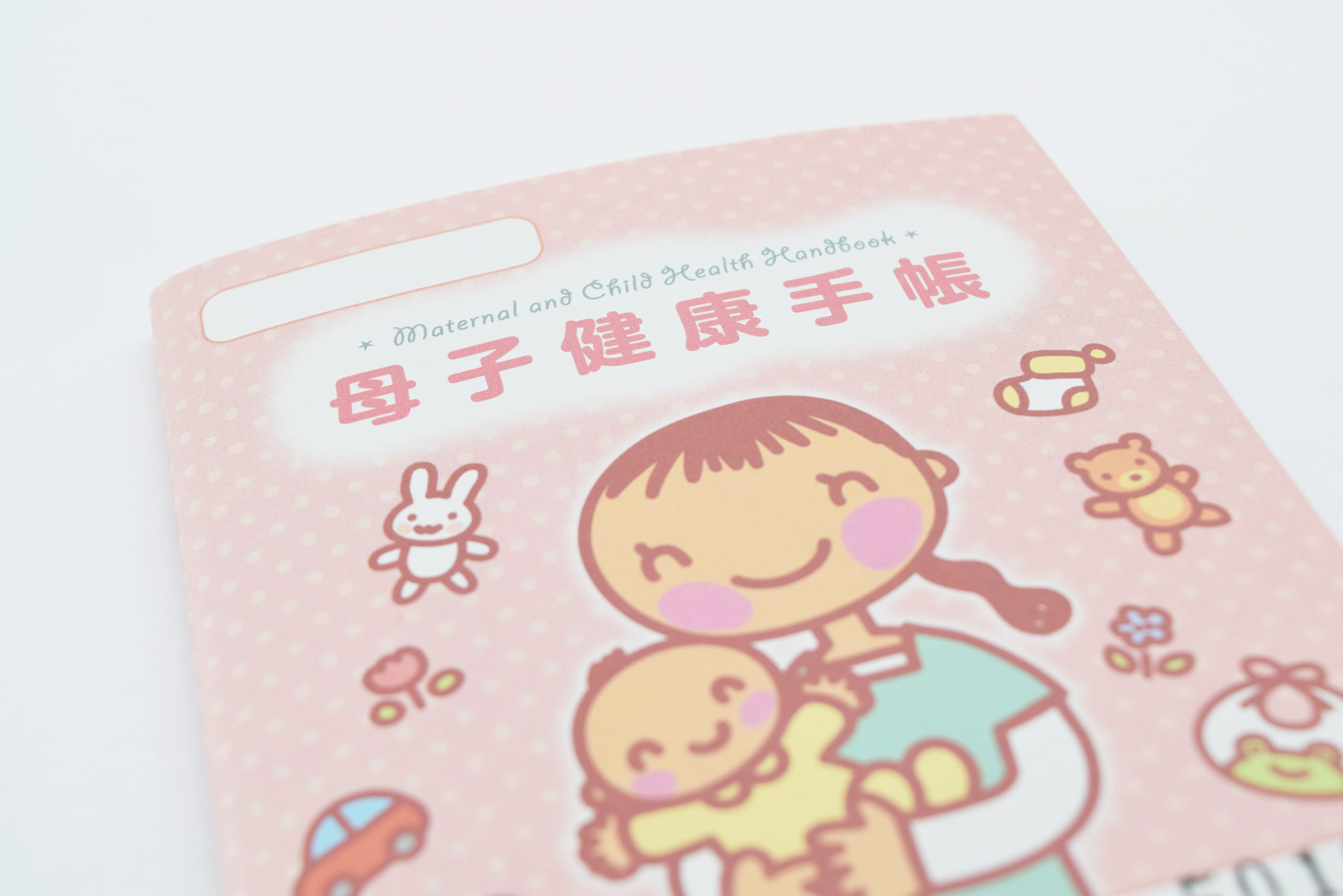
Once the pregnancy is confirmed, it must be registered in your city hall. It is usually done around the 11th week of pregnancy, when the doctor can confirm the baby’s heartbeat. When you notify your city hall about your pregnancy, they will give you the 母子健康手帳 ( boshi kenko techou ) or Mother and Child Health Handbook and some discount coupons. You can use them on your visits to monitor your pregnancy at the hospital or clinic of your choice. The book is used to record the results of your visits to the clinic or hospital and the tests that you may need, as well as the first month postpartum check up.
Once the baby is born, this book is also used to record the results of all the children’s medical check-ups and vaccinations that are taken up to 6 years. Therefore, it is an important document to follow the process of your pregnancy and that of your child. If you don’t feel comfortable with Japanese language, they can give you an English version. The Mother and Child Health Handbook contains a lot of important information about your child, so is better if you are sure that you understand 100% that information.
To register your pregnancy you need a 妊娠届出書 ( ninshin todokesho ), a pregnancy notification from the clinic.
Some municipalities also give a small amount of money (about 10,000 yen) to be able to use in things that the baby may need, but that depends on the municipality.
Also at this time, the city hall will give you what is known as a “maternity mark” or マタニティマーク (Matanitei Maaku) in Japanese. This mark is like a badge or keychain to hang from your bag to let others know that you are pregnant. In the mark you can read a phrase in Japanese that could be translated as “There is a baby in my belly”. Technically, it is for people to give you the reserved seats on trains or buses and treat you with carefully (however, many pregnant women complain that in Tokyo they rarely give you their seat and pretend to be asleep when they see the mark) .
3. Apply for the lump-sum allowance for childbirth
(If you are working, also apply for maternity and childcare leave)
One thing to keep in mind in Japan is that medical expenses for giving birth have to be paid. This may seem obvious to people who come from countries with similar systems, but it may come as a surprise to those who come from countries with free healthcare. The good part is that the Japanese government offers financial aid to people who decide to have children.
The general assumption is that mothers-to-be who are enrolled in the Japanese health insurance are eligible to receive a “lump-sum allowance for childbirth” for the amount of 390,000 yen-420,000 yen. There are two ways or systems to receive the money. One is that you must first pay the full cost out of pocket, and then you receive the money. The other system is a direct payment of this allowance by your health insurance provider to the hospital or facility at which you gave birth. Under this system, depending on the actual amount of expenses incurred, only actual expenses in excess of the lump sum are paid by the patient, or any unused amount of the lump sum is covered by the insurance provider. Procedures for taking advantage of this system should be conducted at the appropriate hospital or facility.
Also, if you are working it is advisable to notify your company about your pregnancy since if you wish you can take maternity and childcare leave. Not only regular employees, but also part-time workers and laid off workers can take maternity leave and childcare leave, so check with the company.
Maternity leave can be taken 6 weeks before the expected date of delivery (14 weeks for twins or more) at the person’s request. Child care leave can be taken up to the child’s first year. However, if you cannot find or get a place in a nursery school, you can extend it up to two years (an extension of 6 months is made first and another 6 months later if you have not found a nursery school). Many pregnant women on maternity leave are not paid. For these women there is a maternity allowance. If you apply to your company, you will receive two-thirds of your daily salary from your health insurance for the number of days you are absent for maternity leave.
4. Check vaccines you can take even pregnant

One of the biggest concerns for pregnant women is how what they put into their body can affect their baby. Almost everyone knows that taking substances with caffeine or nicotine for example can negatively affect the development of the baby. But what about medications or vaccines, if the mother needs them?
There are two types of vaccines depending on the manufacturing method: live vaccines cannot be administered during pregnancy, but inactivated vaccines can be administered. Typical inactivated vaccines that can be inoculated include influenza vaccine, hepatitis B vaccine, pneumococcal vaccine, etc.
Women who are currently pregnant may be concerned about the new vaccine for covid-19 infection. The Pfizer vaccine is a new type of vaccine called mRNA vaccine. Unlike live vaccines made by weakening the virulence of viruses, this vaccine does not require you to worry about becoming infected with the new coronavirus by inoculation.
Talk to your doctor about the vaccines that you may need to have better information.
5. Decide a hospital to give birth and make a reservation
Generally, when they want to confirm pregnancy, most women simply choose a gynaecological clinic near their home or work where they can easily get an appointment. But when we talk about giving birth and carrying the entire pregnancy, is recommendable choose carefully. There are many things to consider, such as the delivery options that the hospital or clinic offer or not, the cost of childbirth, possible cultural differences and communication with the doctor (whether they understand English or not, etc). Japanese doctors have a reputation among foreign mothers for being very strict about weight and not seeming to understand the differences between the bodies of women from other countries.
Also, it is better if it is a clinic near your home, since when the water breaks, no one wants to have to travel to the other end of the city.
IMPORTANT: NOT all hospitals and clinics in Japan offer epidurals. In fact, it is often said that very few offer this service and it is also very expensive. So think carefully if you want to have the option of an epidural or not, and if the answer is yes, ask the hospital or clinic if they offer it before making the reservation.
6. Calculate the cost of childbirth
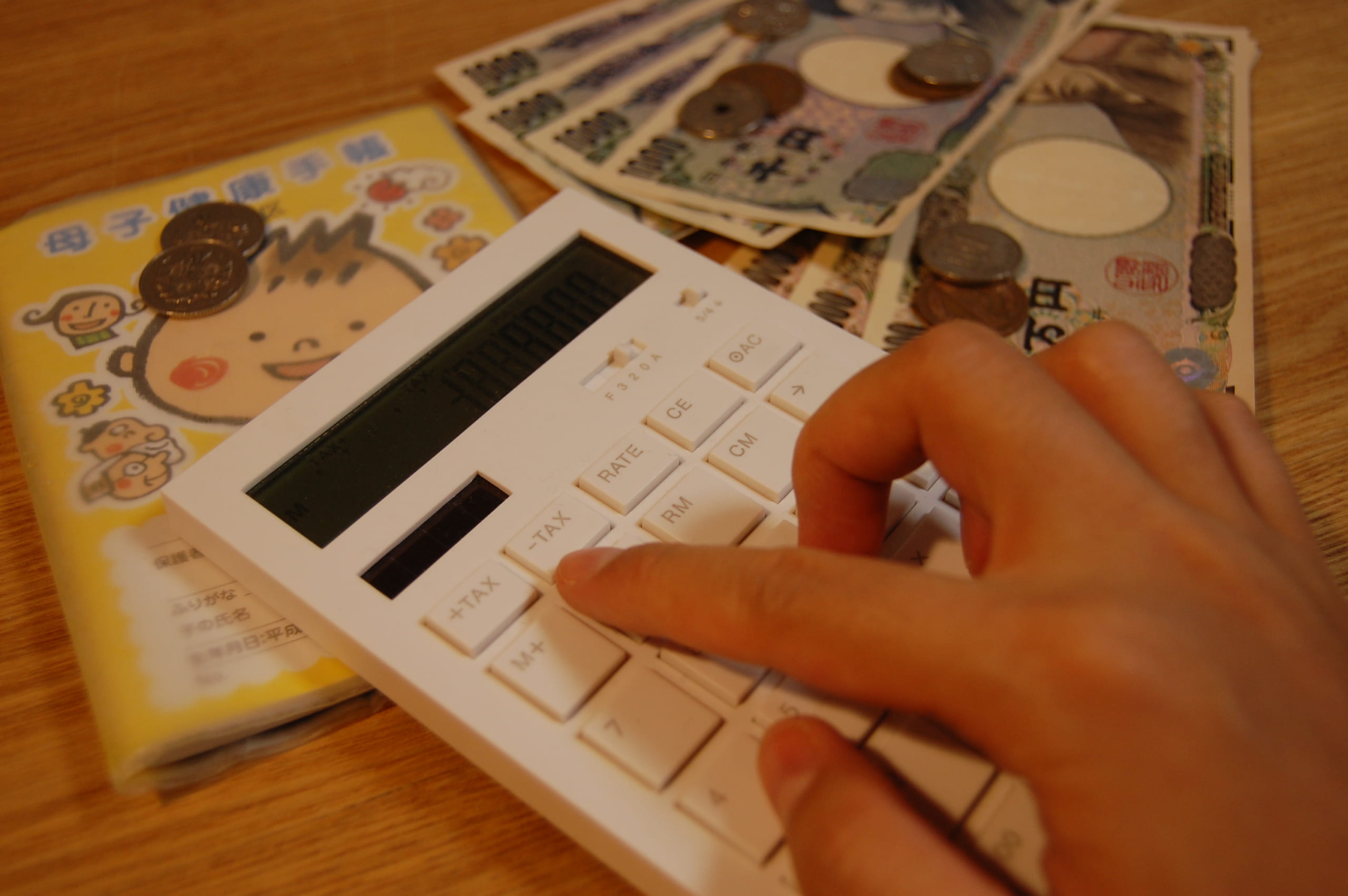
Once you have decided the hospital or clinic where you want to give birth and we have confirmation that we are going to receive help from the government (or not), it is advisable to calculate how much the whole process will cost us (and make sure that we have the necessary budget).
To be able to do this calculation it is also good to know that although Japan has a co-payment system and not a private system, not all hospitals and clinics have the same rates. The amount of childbirth costs varies depending on the type and region of the facility and the timing of childbirth.
7. Think about NIPT Test
Non-Invasive Prenatal Testing (NIPT) is a blood test for pregnant women to check their baby with a chromosomal disorder or not. There are three chromosomal abnormalities that can be detected by NIPT: trisomy 21 (Down syndrome), trisomy 18 (Edwards syndrome), and trisomy 13 (Patau syndrome).
The major difference from the conventional prenatal diagnosis is that it is a very light test that only collects blood from the mother, and that it can perform fetal chromosomal abnormalities with high accuracy of 96.5% sensitivity and 99.9% specificity. The conventional tests like amniocentesis and chorionic villus sampling (CVS) are more invasive and carry a very low risk of miscarriage. That’s why in recent years the NIPT test has become the most popular test method. In Japan it was introduced in 2013.
If you want to know more about the NIP Test I recommend you read this article:

8. Make a birth plan
The birth plan is a form to fill in what you want from your doctor / midwife if you have any wishes or requests regarding pregnancy or childbirth.
Some people think that they can only fill in their wishes for the delivery method, but in fact, you can also fill in your thoughts and wishes for childcare and how you want to spend you time during hospitalization.
9. Start looking for a nursery
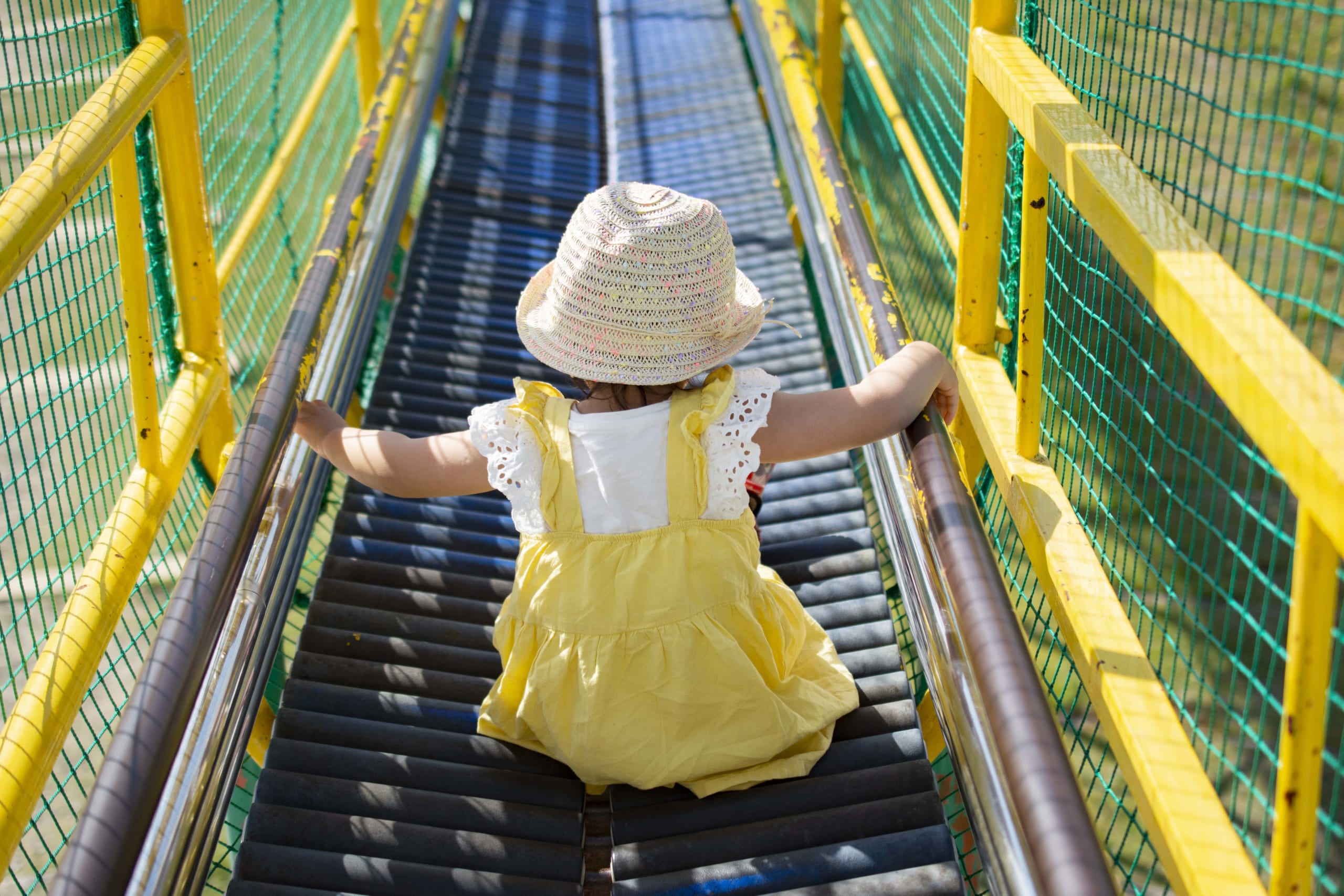
Until now, in Japan, the most common thing was that women stopped working when they became pregnant and began to take care of their children. Nowadays some women continue to choose this option, but more and more women want to continue working after becoming mothers (or who, due to their economic situation, have to work both in the family). That is why in recent years there have been more and more demands on nurseries, and in large cities like Tokyo, for example, there is a problem of free places. Other mothers do not return to work, but they prefer that their child go to a nursery for a few hours a day for other reasons (make friends, spending time outside, etc.)
So if you live in a big city, you better start looking at nurseries early. There are several types of nurseries, and which one is the best for you depends on your lifestyle and work style (and your budget). But for your information, if you want to enter an authorized (public) nursery, the situation of each family will be quantified and judged based on the working conditions of the parents.
10. Buy baby goods

One of the last but not least steps is to make preparations for when the baby is born and for the mother’s admission to the hospital. There are many things to buy, especially for first-time parents (if it is the second baby you can use things from the first baby).
It’s best to gradually prepare for hospitalization for childbirth when you’re feeling well (no pregnancy aches or pains), but as a general rule, this is usually done between the 8th and 10th months of pregnancy. As with childbirth preparations, it is safest to have only the minimum necessary items before being hospitalized. Although it is something that nobody wants to think about when they are pregnant, in every pregnancy there is a risk of miscarriage or that something will go wrong at the time of delivery. That is why it is often thought that buy things too soon can bring bad luck.
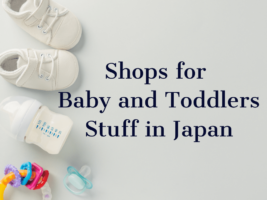
I hope this article has been able to help you prepare for your pregnancy in Japan. If you want more information about be pregnant in Japan, you can also take a look these articles.
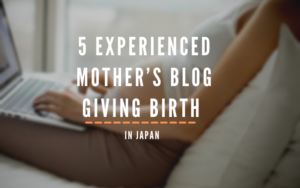
▽Related Articles▽

From Barcelona to Tokyo. Coffee & Adventure lover 🌏☕️
I started to like Japan because of the anime, music and doramas, but after my first trip to the country I found what I love the most: traveling around, the culture and history. I have travelled a lot in Japan, but I still have many places to discover that I want to share with you 🙋🏼♀️ Let’s discover Japan together!
Also, as a foreigner living in Japan for over 6 years I understand what kind of things are difficult when you move here and I want to help other people in the same situation that I have in the past.
Travel Blog by a Japanese Girl
Travel Guide, tips, info and cultural articles written by a Japanese Girl

Life in Japan · 10/14/2020
Being Pregnant in Japan – What to Do?
Being pregnant in Japan might be a very unique experience for someone if they and/or their partner is/are non-Japanese. I’d like to help non-Japanese people get ideas of what to do if they are pregnant in Japan.
What to Do If You Are Pregnant in Japan

Confirm the Pregnancy
Self pregnancy test.
If you notice that you might be pregnant, you can check with self-pregnancy test.
You can buy it at drugstore / pharmacy.
Doctor’s Appointment
Also you need to go to see a doctor as same as in other countries. Once the doctor confirmed you are pregnant, here are things you need to do.
Going to Ward/City Office
You need to go to the city hall and hand in Ninshin todoke (妊娠届、にんしんとどけ) which is telling your ward/city that you are having a baby.
In addition, I got a lot of things from them.
- Announcement for the class for parents to be
- Boshi techo
- Maternity mark keychain
Classes for Parents to be
There are some classes for parents to be, which you can learn how women’s body would change through pregnancy, what you need to prepare to welcome a baby / babies, how to raise a kid / kids, etc.
The ward/city office gives you an announcement of classes (if they have one).
There might be some differences for how to make a reservation, if your partner can join, what month of pregnant to attend the class depending on each ward/city.
I made a reservation online and attended a class in 2nd trimester with my husband.
Boshi Techou : Mother & Child Health Handbook
This is one of Japanese culture that I like. We have Boshi techou (母子手帳、ぼしてちょう) which is written when/what vaccines the baby got, food allergy, height/weight, and progress of baby’s growing. This is very important in Japan, and you can also get Japanese/English written one at book store if you are comfortable with that.
It depends on ward/city, if they have the ones in English. I called the office in advance to make sure if they can give it to me. If not, you can find it online.
Maternity Mark : Keychain
As i wrote on another article, we have a keychain called “maternity mark”. You can get it at station and other places. I got one from the ward office when I went there to hand in the paperwork.
You can hang it on your purse or somewhere people can see. People might give you a seat on the train, bus, etc. I wouldn’t say it happens all the time, but it happens.
Some people say that they got bad experiences like someone told them “you shouldn’t think you can be treated well because of pregnancy”, or something like that.. it’s very sad.
However, i assume (+ want to believe) it happens some times.. so far i have never heard of anything from my friends. Or I haven’t experienced it yet. (Yes I’m pregnant now after the fertility treatment!)
To Do & Not to Do During Pregnancy
In Japan, the doctor might warn you that you need to be careful for what to eat during pregnancy.
Here are some examples that we often say in Japan, however it depends on your body and condition so you should discuss with your doctor.
No Raw Fish
As you know, Japanese people eat raw fish as sushi/sashimi, however usually a doctor tells you not to eat during your pregnancy.
No Raw Meat
I don’t know if you know this, but Japanese people eat raw meat too. But this is also what you shouldn’t eat during your pregnancy.
Less Caffeine
Some doctors say that you should be careful for caffeine. My doctor doesn’t say anything, but I’ve been trying not to take more than 3 cups of coffee tea each day, due to what WHO says.
It’s been not too difficult for me, because I can easily find less-caffeine or decaf drinks.
No Smoking / No Alcohol
It could be same in other countries, you shouldn’t smoke and drink alcohol.
Balanced meal & Vitamins
in Japan, you cannot gain a lot during pregnancy.. it’s strict. For that, doctors and midwives recommend you eating healthy and balanced.
Folic Acid – In Japan, we often get told to take enough folic acid. But I was not told in the US. You should ask your doctor.
When To Tell People Your Pregnancy?
Usually you don’t tell anyone at work until 5-6th months of your pregnancy which is called Antei ki (安定期、あんていき). If you have strong morning sickness, or some problems which could affect your performance at work, you might need to tell your boss earlier than that.
You can tell your parents (& in-law) anytime, I think. People also tell their friends around 3-6th months depending on how close they are to them.
Sankyu & Ikukyu – Maternity & Parenting Leave
Sankyu and Ikukyu are maternity & parenting leave. Sankyu is for giving a birth, and Ikukyu is for taking care of a baby (or babies) after birth. A man can also use the system of Ikukyu.
Japanese law protects those rights for women and men.
Giving a Birth in Japan
Some of my friends asked me if it’s true that most of Japanese women give a birth WITHOUT painkiller, so i wrote about it too!
Giving a birth in JAPAN – natural/painless, cost, hospital, meals, support, etc.
I am pregnant now and have some experiences with paperwork and other stuff. I hope i could explain well about the system and what to do if you are pregnant in Japan.
You’ll Also Love

Follow @travelxgirl
travelxgirl

Search by Country
Destination in japan.
- Privacy Policy / Disclosure Policy

How to Travel Japan with a Baby
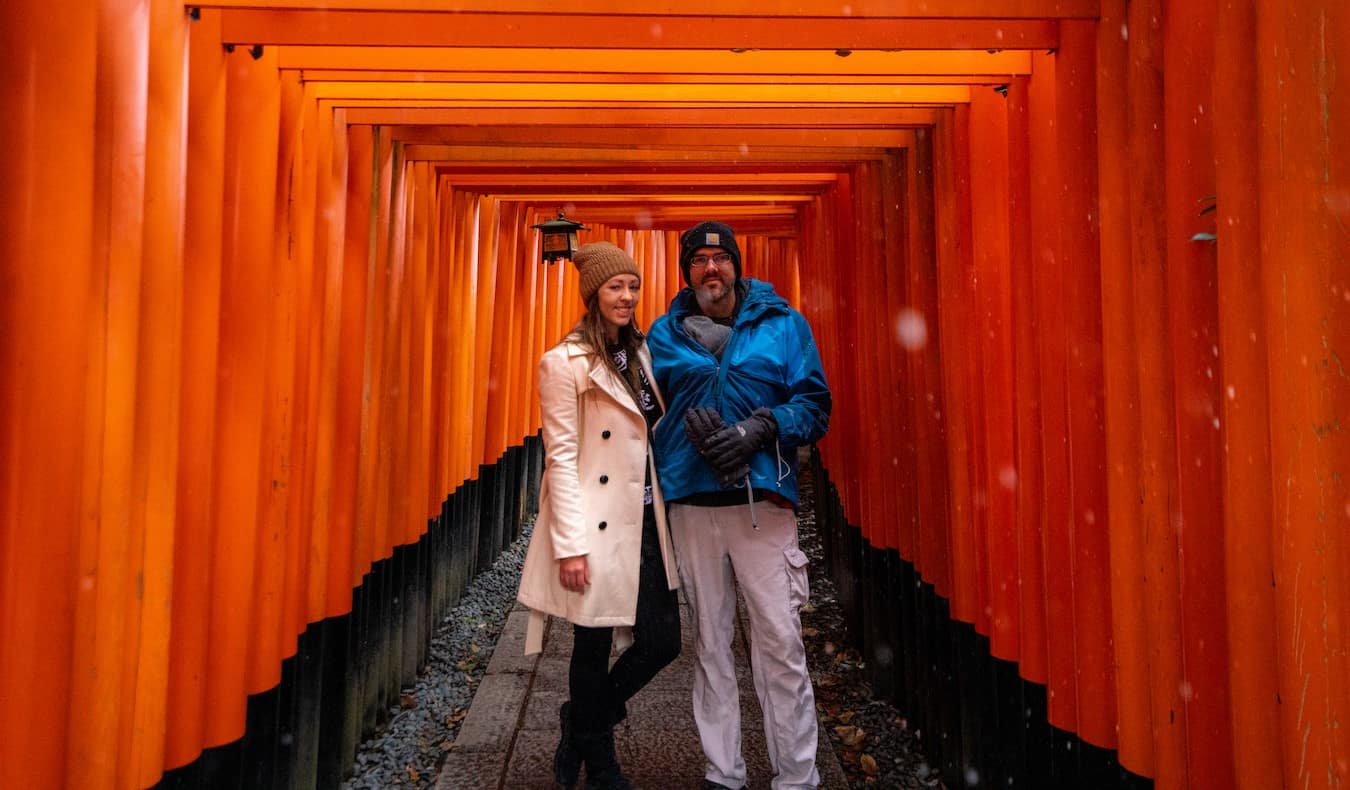
I love Japan. It’s one of my favorite countries in the world. But is it a suitable destination to visit with a baby? Solo female travel expert Kristin Addis from Be My Travel Muse was recently there with her baby and has tons of tips and advice for travelers thinking of taking a baby with them to Japan.
Japan was our first major international trip with our then six-month-old. I’d heard mixed things about how baby friendly Japan would be, from DMs telling me it wouldn’t be a great trip to the total opposite with people gushing about how baby friendly it was.
We decided to go for it, hitting four spots in two weeks, taking public transportation and staying in a mix of apartments and hotels. Traveling with a baby in Japan comes with some special considerations, but overall, it can be a great trip IF you plan it right. Here’s everything to know:
Table of Contents
Japan Baby and Toddler Friendliness
Getting around japan with a baby, packing light is wise for japan, renting baby gear in japan, buying baby essentials in japan, choosing where to stay in japan with a baby, baby sleep in japan, feeding and meals in japan, medical services in japan.
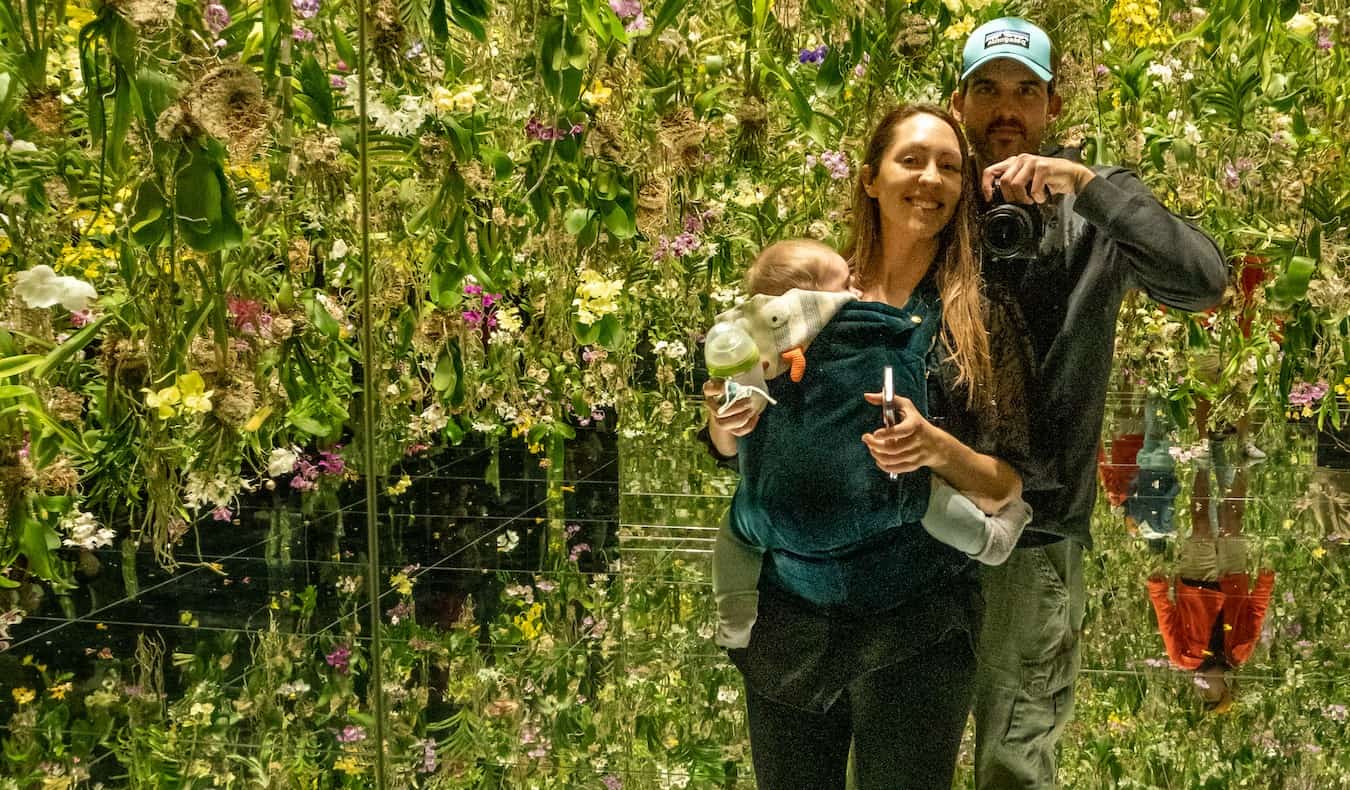
With a few strange exceptions, like the lack of cribs, Japan is one of the most baby and family-friendly places I have been. It all started when we were personally escorted to the aircraft by a Japan Airlines gate agent when boarding our flight to Osaka. They even offered me a place to sit with the baby while I waited. It felt like first class treatment.
Each time we encountered an airport queue in Japan, whether it was for security or boarding, they always had a family line, which is sadly missing from every US airport I’ve encountered.
There are family restrooms everywhere as well, and I really mean everywhere. Even the smallest metro and train stations had them, and I never encountered one that wasn’t sparkling clean. People respected that they were only meant for those with disabilities and young children, as well. I never had to wait to use one and never saw an able-bodied single person walk out of them, which I see all the time in the US.
The bathrooms are also full of useful items like a baby holder, which I’ve only otherwise seen in Singapore, changing tables, and padded benches for nursing. I’ve truly never seen a family bathroom as equipped as the ones in Japan.
The locals also LOVED our baby. Everywhere we went, people would play peek a boo with him, smile at him, and light up when they saw him. We felt very welcome everywhere we went with him.

Although they’re more expensive, we tended to prefer train travel to bus travel in Japan so that we could make use of the changing tables on the trains. They were more spacious, and the buses rarely had a place to change diapers.
If you’re traveling during high season, be sure to book train tickets ahead of time and reserve seats to avoid having to stand with your baby.
Alternatively, consider renting a car to get around. They can be pricey, and if you’re North American you’ll be driving on the opposite side of the road, but it also gives you ultimate flexibility.
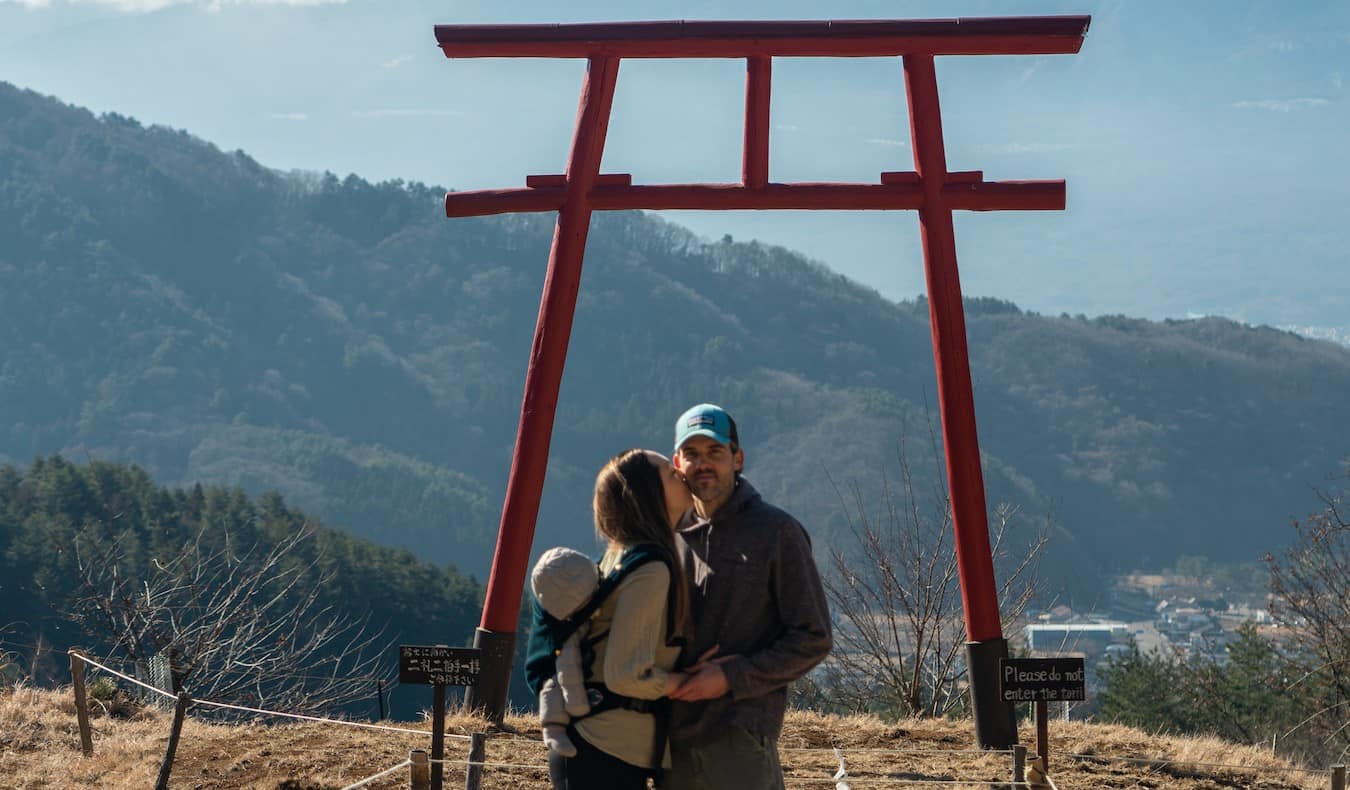
We opted to leave the stroller at home and just travel with a soft baby carrier . While a stroller can be helpful at times, Japan has a lot of stairs and some metro stations, even in Tokyo, don’t have elevators. We always found them at JR stations, though.
I have mixed feelings about this decision as we were aching by the end of the trip. If I were to do it with a toddler or older baby I’d probably opt for a hiking baby carrier instead. It distributes weight better and is a more comfortable experience, plus they have storage space. Just keep in mind that they’re bulky and you’ll most likely need to remove it when using public transport.
If you absolutely have to bring more than you can physically carry, there are luggage forwarding services in Japan that can help transport your luggage from hotel to hotel for you.
Since our baby was a bit younger and not yet mobile when we visited Japan, we felt OK with not having a dedicated sleeping space and utilizing the floor beds instead. However now that he’s older, he needs a dedicated sleeping space and ideally a stroller. If we were to visit now, I’d utilize rental services to keep our suitcases light and still have access to the items we need for safety and comfort.
It’s possible to rent strollers in various cities in Japan , depending on how remote you’re going. You can also rent other baby gear in some parts of Japan, particularly in the more major cities.
One way to pack lighter is to plan to buy baby essentials in Japan. It’s easy to find diapers, formula, and baby food if you know where to look.
If you’re doing baby-led weaning, which we were at the time, you can shop at any Japanese supermarket for fruit and veggies.
It was actually a treat to visit the grocery stores there since they had almost entirely different snacks and brands than I’ve seen elsewhere. The produce was also way better, as it was mostly locally grown. Even in the winter, we were eating perfectly ripe, locally-grown strawberries.
If you need diapers, baby food, or formula, you won’t find them at a grocery store. These items are for sale in drug stores only. Matsumoto Kiyoshi (with brown lettering) is the one we came across the most often.
Diapers were easy to buy. They will have the weight clearly displayed in kilograms. Jarred baby food and formula were in the same section of the store. If you need a specialized (non-cow) formula, that may be harder to find. Since we did for my baby, we brought enough with us from home for the whole trip.
Download the Google translate app so that you can hold your phone camera up to the Japanese Kanji and read what the ingredients and baby food flavors are. Don’t expect to see English translations in stores.
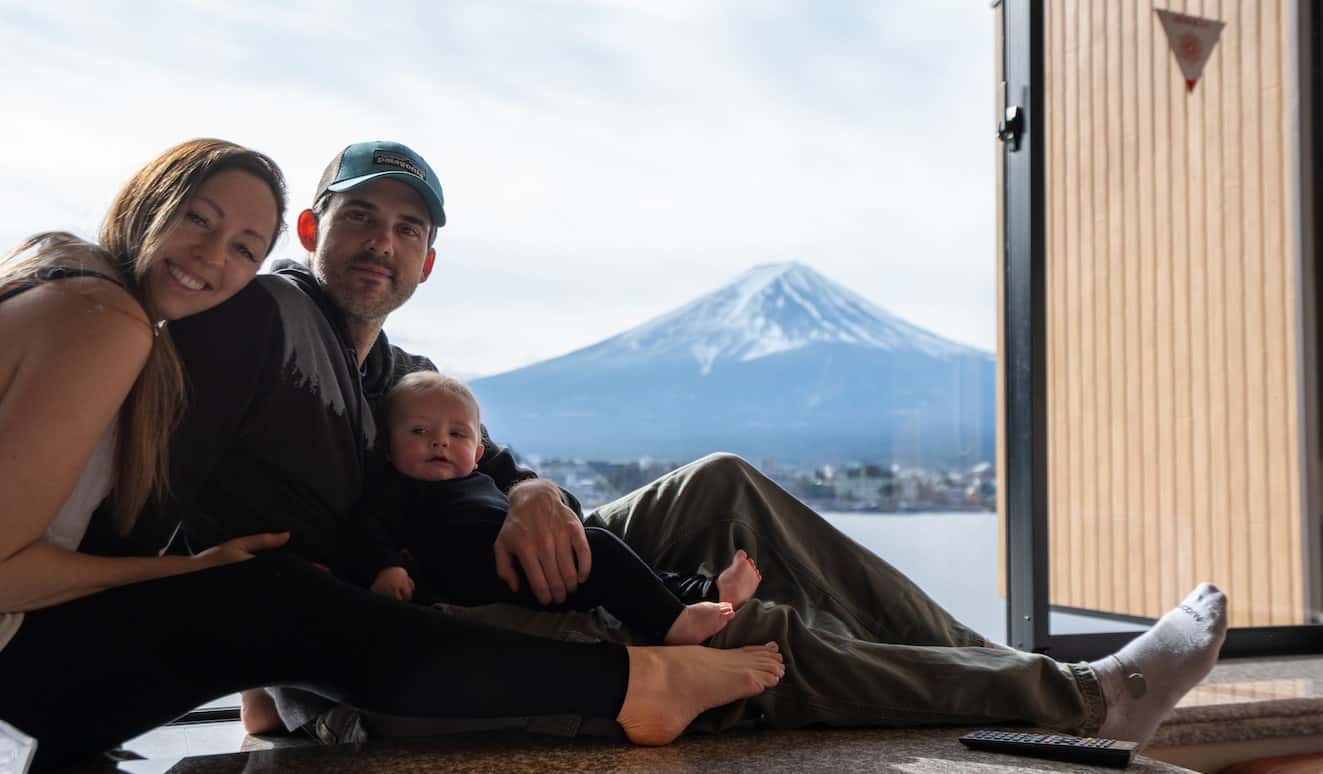
Unless you’re willing to pay up a bit more, especially in Tokyo, you can expect hotel rooms to be on the smaller side. However they tend to include breakfast, which makes life easier for parents with young children.
Apartments, which you can book on Airbnb, usually have two floors and a kitchen. The kitchen was helpful for food prepping for the baby, and the two we stayed in had microwaves. I travel with microwave steam bags to sanitize our bottles, so this was a nice surprise.
The two floors also gave us a place to hang out while he took his naps. Apartment rentals are almost always larger, and in my experience, more affordable than hotel rooms can be. Sometimes they have washers and dryers as well.
Hot water kettles are a nice feature whether you’re in an apartment or hotel room. They seem to be the standard in Japan, which makes sanitizing, washing, and heating water for formula easier. Tap water in Japan is generally safe to drink and wash with.
The most bewildering and disappointing thing about traveling in Japan with our baby was the lack of cribs. Even in the 5-star ryokan we stayed at in Kawaguchiko , there was no baby crib on offer. It made me wonder what locals do. Do they bring their own? Do they co-sleep?
In half of the places we stayed, the beds were traditional-style mattresses on the floor, so it was fine for our baby to sleep on the floor mattresses, however now that he’s more mobile, I’d want to bring along our travel bed.
One of the negative things I heard was that we’d be turned away from restaurants in Japan with our baby. While I’m sure it happens, I didn’t encounter this, even at kaiseki (which is the highest level of dining in Japan) restaurants. Sometimes they even had toys they’d bring out for our son.
We were told that the lounge in the hotel we stayed at in Tokyo wouldn’t be available to the baby in the evenings when alcohol was served, however. Some restaurants, including the Michelin star ones you might be hoping to eat at, could hold the same policy. There are some restaurants in Japan that are specifically geared towards families. The most common you’ll find are Bikkuri Donkey, Joyfull, and Gusto.
Most restaurants in Japan will have high chairs, but when at more casual ramen or yakitori restaurants, you’re less likely to come across them.
If you’re nursing, my sense in Japan was that it’s best done in private. I never saw anyone openly nursing in Japan, though I saw plenty of bottle feeding. The family restrooms are probably your best bet for a comfortable and private experience. I saw a nursing pod (a little room that offers nursing privacy, similar to the Mamava pods at US airports) at a few major train stations in Japan as well.
As a parent, I’m more concerned with the availability of healthcare services than I ever was before traveling with a baby. Thankfully Japan has a wonderful medical system with perfectly capable doctors.
I know this firsthand as I needed to visit a doctor in Kyoto when my asthma flared up. I was able to visit an international doctor at a clinic that services foreigners the same day. All of the medication the doctor prescribed was available there as well. In most cases they’ll want a cash payment which you can then submit to your travel insurance for reimbursement.
In non-emergency situations, look for a doctor that specializes in international patients as there can be language barriers. I was able to find mine easily on Google Maps. Otherwise, hospitals are widely available, even in smaller towns.
Overall, I loved traveling in Japan with our baby. The clean family bathrooms provided an easy place to change him, feeding and buying supplies were easy, and getting around was simple with such a well-connected rail system .
I was worried with so many stops and logistics that it might be a nightmare, but everything is so well-organized in Japan, it all worked out. Plus, the adorable interactions between our son and the locals made it a heartwarming experience.
Kristin Addis is a solo female travel expert who inspires women to travel the world in an authentic and adventurous way. A former investment banker who sold all of her belongings in 2012, Kristin has been traveling the world ever since. You can find more of her musings at Be My Travel Muse or on Instagram and Facebook .
Book Your Trip to Japan: Logistical Tips and Tricks
Book Your Flight Find a cheap flight by using Skyscanner . They are my favorite search engine because they search websites and airlines around the globe, so you always know no stone is left unturned!
Book Your Accommodation You can book your hostel with Hostelworld as they have the most comprehensive inventory so they are best for booking a hostel. If you want to stay in a hotel or guesthouse in Japan, use Booking.com as it consistently returns the cheapest rates for guesthouses and hotels.
Don’t Forget Travel Insurance Travel insurance will protect you against illness, injury, theft, and cancelations. It’s comprehensive protection in case anything goes wrong. I never go on a trip without it, as I’ve had to use it many times in the past. My favorite companies that offer the best service and value are:
- Safety Wing (best for everyone)
- Insure My Trip (for those 70 and over)
Looking for the Best Companies to Save Money With? Check out my resource page for the best companies to use when you travel! I list all the ones I use to save money when I travel — and I think they will help you too!
Be sure to check out the Japan Rail Pass if you’ll be traveling around the country. It comes in 7-, 14-, and 21-day passes and can save you a ton of money!
Looking for More Travel Tips for Japan? Check out my in-depth Japan travel guide for more ways to save money; information on costs; tips on what to see and do; suggested itineraries, reading, and packing lists; and much, much more!
Got a comment on this article? Join the conversation on Facebook , Instagram , or Twitter and share your thoughts!
Disclosure: Please note that some of the links above may be affiliate links, and at no additional cost to you, I earn a commission if you make a purchase. I recommend only products and companies I use and the income goes to keeping the site community supported and ad free.
Related Posts
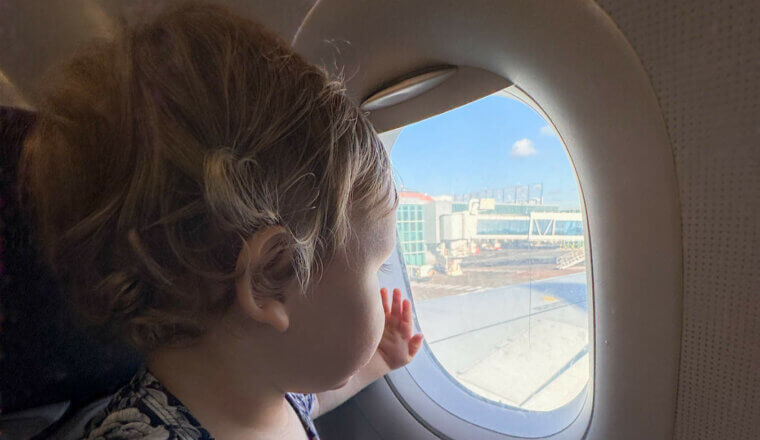
GET YOUR FREE TRAVEL STARTER KIT
Enter your email and get planning cheatsheets including a step by step checklist, packing list, tips cheat sheet, and more so you can plan like a pro!


My Experience Having a Baby in Japan as a Foreigner
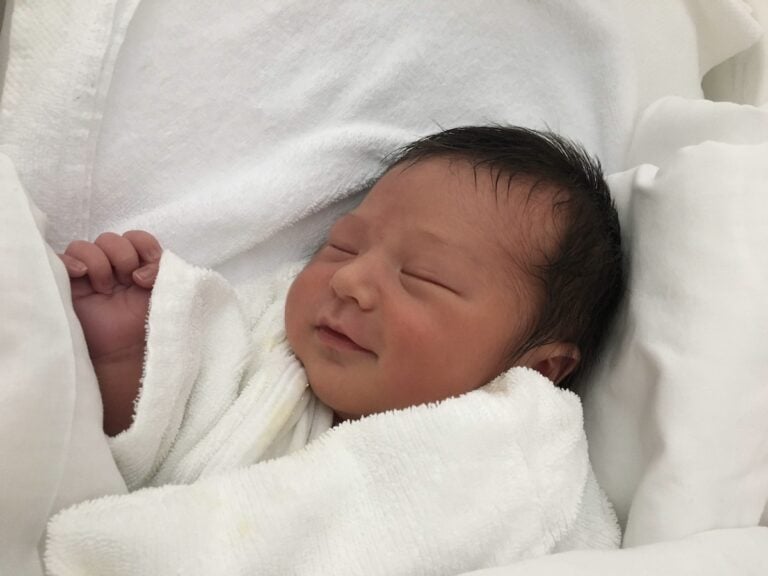
If you’re preparing to have a baby in Japan, you’re probably feeling a wild mix of emotions right now. If you’re feeling anxious or unsure, you’re not alone. Every new mom feels this way, especially when you’re in a foreign country like Japan.
In this article, I’ll share my experience having a baby in Japan (actually, 2 babies!). Along the way, I hope to calm your fears and arm you with some knowledge to help you have the best possible birth experience in Japan.
My Birth Stories
My two birth stories couldn’t have been more different.
I had my first baby in 2019. I was induced, but didn’t use an epidural or any pain medicine. I had him at a large general hospital in Tokyo. (And this was before the pandemic, so there were no restrictions.)
I had my second baby in early 2021. I was induced again. But this time, I had an epidural from beginning to end. This baby, another boy, was born in a private birthing clinic. And this was in the middle of the pandemic, so there were plenty of restrictions to deal with. The birth was easy, but the baby had to go to the NICU for a couple of weeks (luckily, he ended up fine!).
I’ll share my experience with both babies, starting with pregnancy tests and ending with post-partum care.
Finding Out I Was Pregnant
First baby:
I found out I was pregnant with an at-home pregnancy test.
Pregnancy tests in Japan don’t work before your missed period, so you need to wait 7 days after your missed period to use one. Those 7 days felt like forever!
At 6 weeks, I went to a nearby OB-GYN to confirm the heartbeat. We couldn’t hear anything. The doctor looked at the ultrasound and said, “Either it’s too early, or the baby isn’t doing well.” She said this without much emotion.
(It depends on the doctor, but some of my friends have gotten pretty bad news delivered without much emotional support. That doesn’t mean every doctor will do this. But it’s helpful to be emotionally prepared for this if you’re going to a Japanese OB-GYN.)
Luckily, the baby was just fine, and we heard the heartbeat at 8 weeks.
Second baby:
Same thing, but this time I waited a little longer to confirm my pregnancy at the hospital just to avoid the stress from the first time.
Choosing a Hospital
First Baby:
Call me naïve, but I wanted an unmedicated birth for my first baby just to see what it was like. Every hospital offers unmedicated births, so I just looked for a place that felt clean and safe.
I talked to a couple of friends and ultimately decided to go with a bigger general hospital near our apartment. I wanted to try breastfeeding, and they seemed to give a lot of support.
I also chose it because it had an all-female staff.
I liked that it had other specialists in the building in case something came up during birth. I wasn’t so happy that there were no private rooms, which meant I would be sharing my room with 3 other moms.
Second Baby:
After feeling every contraction for my first baby, I decided to get an epidural for the second one.
This narrowed my options because general hospitals don’t typically offer epidurals for birth. (It’s still rare for Japanese women to get an epidural.)
I searched online for birthing clinics that offered epidurals and chose mine based on reviews and photos from the website.
This one also had an all-female staff and a cozy, at-home feel that I loved. It also had private rooms and other amenities like a congratulatory steak dinner for new moms.
For this birth, I knew we wouldn’t have access to on-site emergency services if something went wrong, which was a risk. But I was willing to risk it so I could have an epidural.

What to Prepare When Having a Baby in Japan
There’s so much to prepare and learn before having a baby! Here was my experience:
- Counting 10 months instead of 9: I learned that Japanese moms count 10 months of pregnancy (40 weeks divided by 4 weeks in a month = 10), while Americans (like me) count only 9. So I needed to learn how to count the Japanese way.
- Tons of ultrasounds: I was pleasantly surprised that I could see the baby via ultrasound every time I went in for a checkup. It was nice to see the baby every time. For my second baby, they even had 3D ultrasound videos that I could download and send to family.
- Finding out the gender: My first hospital had a strict rule that they would only tell the gender at 23 weeks. So we didn’t find out the gender for 6 months. With my second baby, we found out around 19 weeks. It’s rare to do blood tests to find out the gender early.
- Gaining weight: I gained more than 10kg in my first pregnancy, and my doctors weren’t very happy about it. They told me to slow down or else I might not be able to have the baby vaginally. However, the baby came out fine and wasn’t overweight. The private birthing clinic was less strict about this.
- New parent classes: For our first baby, my husband and I took local new mom and dad classes run by the government. I found them really helpful, and that was the only place my husband could learn about pregnancy and birth. Otherwise, I was able to take lessons through the hospital and during my post-partum stay. Both of my hospitals required me to take lessons before I gave birth there.
- Getting nutrition advice: With my first baby, I was told, “Eat what you like, but don’t eat prosciutto.” (It can cause infections and complications.) Both hospitals had nutrition classes that told me how many calories and nutrients I should be getting. And both told me to take prenatal vitamins for the first trimester. I even ate sushi a few times while pregnant (but please, do this at your own risk!).
- Buying stuff: I went to Akachan Honpo and picked up their new baby shopping lists to figure out what to buy. I also asked friends, of course, and got some great hand-me-downs from other moms. Akachan Honpo gives you some good coupons if you register your baby’s due date and create a point card.
- Maternity taxis: I signed up for a maternity taxi service (はぴママサポートタクシー or Happy Mama Support Taxi) through the Keio Taxi company. If you create an account and register your due date, you can call them to pick you up for appointments or even to take you to the hospital during labor. This helped because I didn’t have a license and needed a way to get to the hospital in an emergency.
- Epidural prep: For my second baby, I had to take an epidural class to be able to get one. I also learned I would have to pay 100,000 yen out of pocket for the service.
- COVID: Because of COVID, my husband and first-born son couldn’t join me for check-ups, which was a bummer. I was also told that he probably wouldn’t be able to attend the birth. Luckily, near my due date, they started allowing partners to come in for the last 15 minutes. (We also got COVID during my third trimester, but that’s another story for another day.)
Giving Birth
At my 38-week checkup, my doctor noticed that I was leaking amniotic fluid. “You need to go home right away,” she told me, “Get your bags for the hospital, and then come right back.” I was already 3 cm dilated, which was a good start.
I was shocked—I hadn’t felt anything. I called my husband to tell him the news, then rushed home, grabbed my bags, and called the maternity taxi service to take me back to the hospital. That day and night, I stayed in a hospital bed, and nurses kept asking me if I felt any contractions. (I didn’t.)
I was wearing a hospital gown, maternity underwear that sticks shut with velcro, and compression socks that they require every mom to wear until birth is over. Unfortunately, the hospital gown was a little too small, so I remember struggling to keep it shut.
On the second day, they induced labor with Pitocin. We started at 9 am. I started to feel cramps and then more painful contractions, but I only progressed 1 or 2 centimeters the whole day. At 5 o’clock, the Pitocin ran out, and they told me to rest for the night. (I expected to just keep inducing labor until the baby came out, so I was surprised by this.)
The third day was more painful. Still, I barely progressed, and I was asked to rest for another night.
The whole time, I could hear other women giving birth in other rooms. I started feeling bad, like I was failing at giving birth somehow. As moms, we all feel inadequate sometimes, and this was one of those times for me.
Luckily, labor started that night, though it was still light. I stayed in the contraction room for the night.
On the fourth day, they induced me one more time. This time, it was a LOT more painful, and my baby was born in 3 hours. (I think I pushed for 4 or 5 contractions in total.)
The midwives whisked my son away to clean him up and do initial tests, then brought him back to us. After that, my husband and I got 2 hours of bonding time with our son before going back to my room.
My second baby’s birth was a scheduled induction. Epidurals aren’t available 24-7, so if you want an epidural in Japan, you’re better off scheduling it on a weekday.
That morning at the hospital, I put on a hospital gown (and those itchy compression socks again) and went into the operating room to get an epidural. It was nice to have it in before the induction started. The anesthesiologist was kind and attentive, and I felt well cared for.
Even though I couldn’t feel anything, labor progressed pretty quickly. They broke my water in the evening and wheeled me into the delivery room because the baby was on its way FAST. My husband tripped over his shoes, trying to pull them off so he could make it to the room in time.
As I held my new baby in my arms, I could tell his breathing was a little bit weird. Sure enough, he had some fluid lingering in his lungs. They monitored him overnight, had a specialist come in the next day, and then he was taken to a large university hospital to be admitted into the NICU.
We are grateful that it wasn’t a serious issue, and he came out 2 weeks later, happy and healthy!
Filming the birth: Neither of my hospitals allowed any cameras or recording equipment in the room during birth. I suppose you could ask them to make an exception, but it was a pretty hard rule. I’m sure there are facilities that allow you to do this, but mine did not.
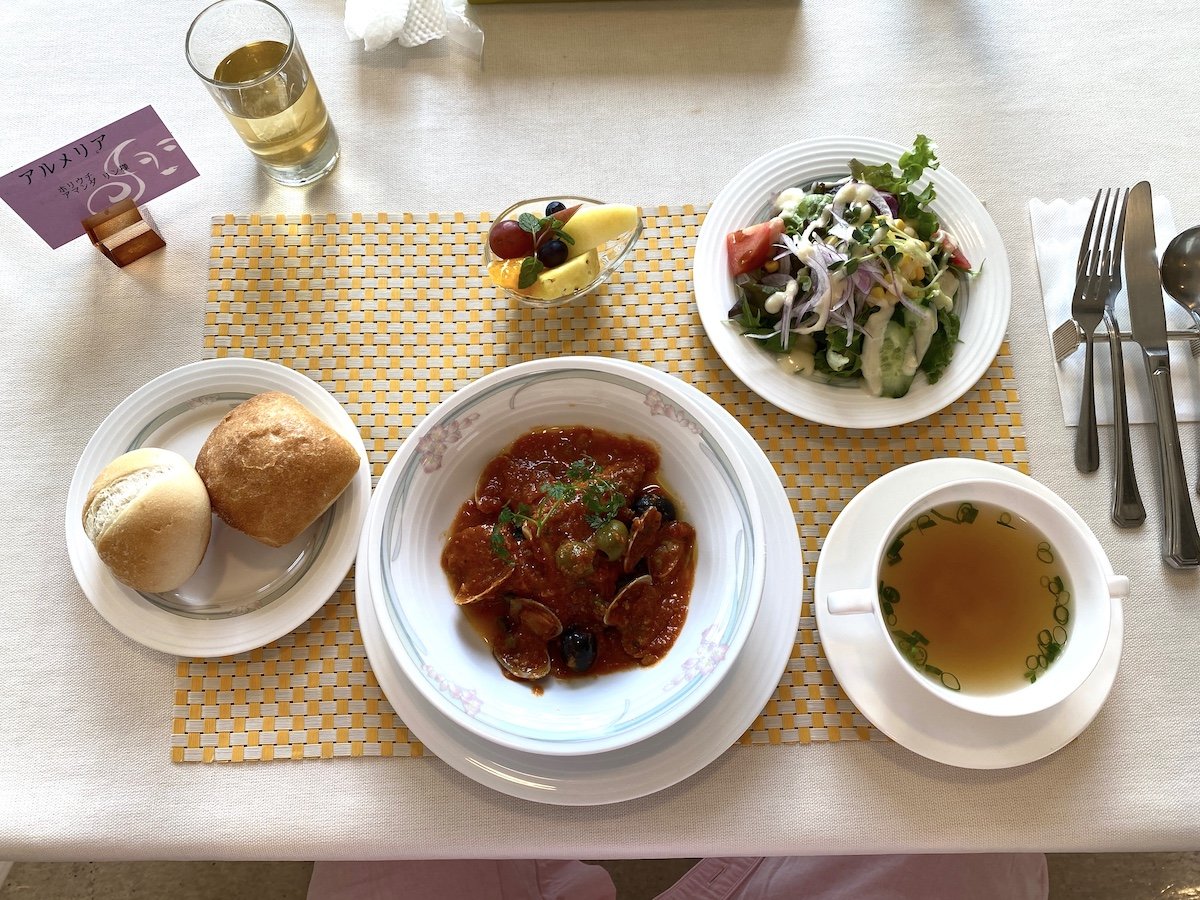
Support and Care After Birth
I learned that after having a baby in Japan, you’re required to stay in the hospital for 5 or more days. It sounds like a long time, but it was actually really helpful to me as a new mom.
My hospital was very pro-breastfeeding. So they had breastfeeding specialists in the ward at all times, and we could go into the breastfeeding room at all hours and get help whenever we needed. To be honest, it was painful, difficult, and tiring to stay in a 4-person room and try to breastfeed all night long.
I eventually got the hang of breastfeeding, but I never got any sleep. Between having visitors in our room all day and my baby waking up all night, I felt like a zombie after day two. (I had the option to give my baby to the midwives for a while to get some sleep, but I didn’t do it. I should have!)
The food was good, and the nurses were kind, but I was ready to come home.
At the same time, I felt very safe. My baby was hooked up to a monitor for the first couple of nights. I had around-the-clock support and midwives teaching me how to feed, dress, and bathe my baby. And they made sure I was healing and had no blood clots or other risks.
My private clinic also required a 5-day stay after birth, but since my baby was in a different hospital, I was there alone. In the end, I could leave a couple of days early.
This hospital preferred to watch the babies for the first couple of nights so the new mothers could sleep. But you could also request to keep the baby with you the entire time.
They also had an agreement with a formula company who offered us demonstrations and free formula.
This clinic had amazing meals, two scheduled massages, daily tea and cake sets delivered to my room, and other great amenities, but I missed my baby so much it was hard to enjoy it fully.
Besides the obvious downside of being alone for most of my stay, I really enjoyed this clinic and the amazing staff, and I’m planning to go back for any future babies I might have.
Cost of Childbirth in Japan
So, how much does it cost to give birth in Japan?
On average, you can expect to pay between 500,000 and 600,000 yen (roughly $3,000 to $4000 USD) for a single birth. However, the government provides a subsidy worth 420,000 yen ($2800 USD), which will cover most of the cost.
If you want an epidural, you will usually need to pay another 100,000 yen ($600 USD) out of pocket. Getting induced, staying at the hospital for extra days, getting a C-section, or staying in fancier birthing clinics will set you back even further.
Here’s what I paid for each of my kids:
To recap, I gave birth at a general hospital and had no epidural, but did have a longer stay and 3 rounds of Pitocin.
- Hospital Admission Fee: ¥160,000
- Birthing Fee: ¥265,000
- New Baby Care: ¥56,000
- Tests and Medicine: ¥40,205
- Treatment Fee: ¥21,150
- Obstetric Compensation System for Cerebral Palsy (covers fees in case the baby develops cerebral palsy—I didn’t really understand what this was when I signed up for it): ¥16,000
- Other: ¥22,713
- Total: ¥581,068
- Covered by Subsidy: -¥420,000
- Total Cost: ¥161,068
I had this baby at a private birthing clinic with an epidural (which was an extra ¥100,000), but I had a shorter stay and my baby was almost never there as he went to the NICU right away. (The NICU stay was completely covered by insurance, by the way.)
- Hospital Admission Fee: ¥99,000
- Birthing Fee: ¥500,000
- New Baby Care: ¥31,000
- Medicine: ¥100
- Injections: ¥610
- Tests: ¥1140
- Other: ¥30,800
- Documents: ¥5,300
- Money Back (I made a deposit for an epidural service): -¥1,000
- Total: ¥666,950
- Total Cost: ¥246,950
There’s so much more I could say on this subject, but I hope this article has given you some ideas and prepared you a little bit for giving birth in Japan. More than anything, I hope you know that you’re not alone in all the feelings you may be having right now.
If you have any questions for me, leave them in the comments—I’d love to answer them for you! Want to read more? Check out this article on what to do when you find out you’re pregnant in Japan .
Author: Amanda Horiuchi
- Jobs in Japan
Find a better job in Japan through Jobs in Japan.
More articles by Jobs in Japan
- How to Japan
- Company Spotlight
Living in Japan
- Starting a Language School
- Working in Japan
- Inside Japan Podcast
Recent Posts

Related Articles
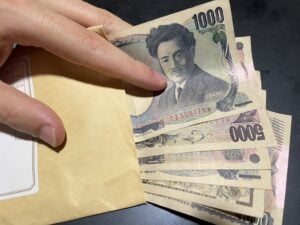
Genkin Kakitome: A Secure Way to Send Money in Japan
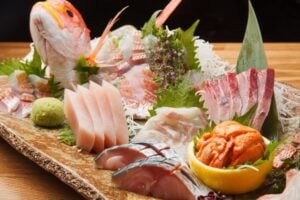
Kaiseki Ryōri: The Art of Japanese Haute Cuisine
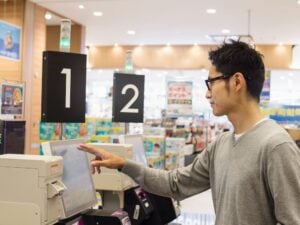
Useful and Fun Labor-Saving Techniques That Make Living in Japan Easier
Related jobs.

Blockchain Infrastructure Engineer (Server/Network)
Convenience store mid-night shift staff jlpt n2up visa support available only male.

Teach English in Okayama Prefecture – September 2024!
Teach english in tottori prefecture – september 2024.

Part-Time English Teacher in Saitama

Non-native Okay! *Immediate* Performance English Dispatch Teacher

English Teacher


Full-Time ALT: Western Ibaraki – September 2024
JOBS IN JAPAN
For Employers
- Users Guide
- Terms of Use
- Privacy Policy
- Commercial Act
Tokyo Office C/O Global Village Media 1-7-20-B2 Yaesu, Chuo-ku, Tokyo [email protected]
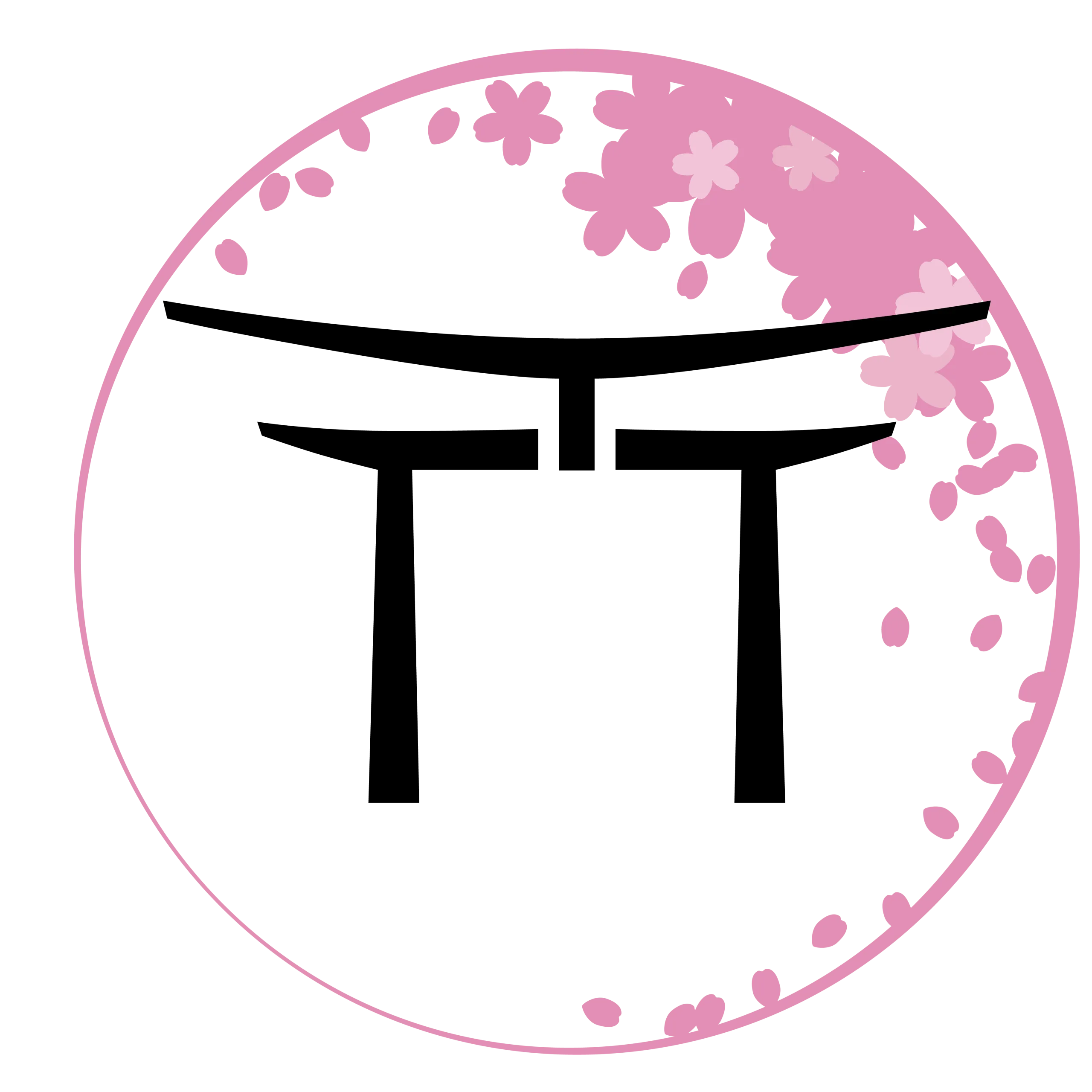
How to Have a Babymoon and Travel in Japan While Pregnant
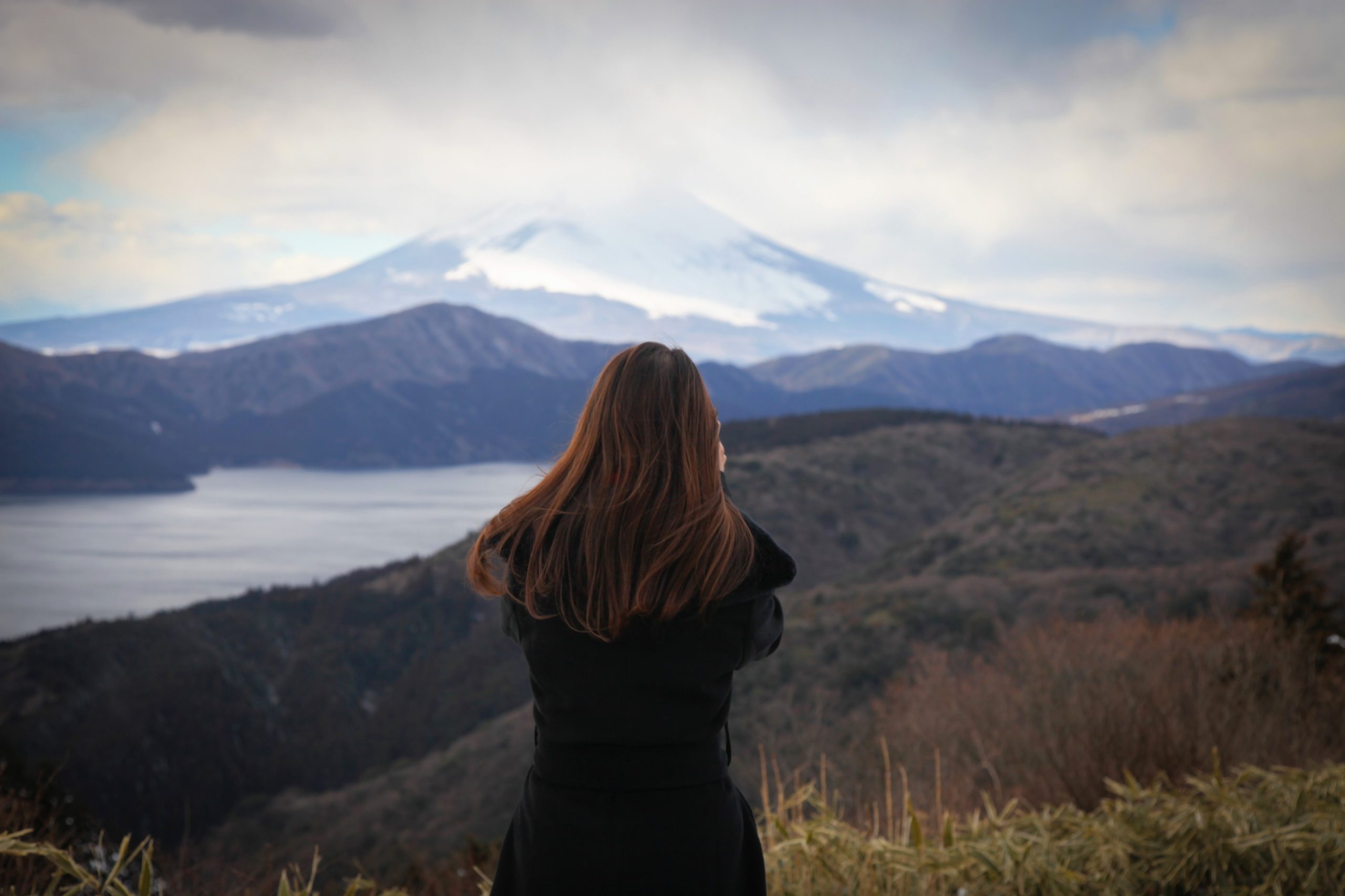
Last Updated on June 28, 2024 by Kay
This post may contain affiliate links, meaning I may earn a small commission on any purchases through those links at zero additional cost to you. Whatever I make goes to keeping this website running and I am forever grateful for the support. See my Privacy Policy for more information.
If you’re thinking about having a babymoon in Japan, then you’ve come to the right place.
A babymoon is perhaps the last vacation you will be able to take with your partner before the baby arrives. In the second trimester, you should have your energy back to be able to travel and hopefully enjoy food and sightseeing, so why not make the trip?
There are many places within Japan where one can travel and it is a very safe and hygienic country where travelers are unlikely to end up spending their vacation holed up in the bathroom (I’m looking at you, Bali belly, although it did make for a very memorable birthday trip).
Although Japan can be a very different country in terms of language and culture (depending on where you’re coming from), planning a babymoon in Japan doesn’t have to be stressful.
I never would have thought Japan to be a contender when it comes to a babymoon (especially since I ideally wanted to be lying on a beach) but now that I’ve done extensive research and had my babymoon (which was not tropical but still an amazing experience), I’d like to share my thoughts on having a babymoon in Japan for those of you who live here and even those who are thinking of making the trip over.
In this article, I’ll share points to keep in mind when planning your babymoon, places to go as well as accommodations that are perfect for a babymoon as they cater to mamas-to-be.
Table of Contents
How to Plan Your Babymoon and Travel in Japan While Pregnant
Best places for a babymoon in japan and recommended hotels and ryokan, pregnancy souvenirs in japan — omamori and baby clothes, wrap-up: babymoon in japan.

Location, Location, Location!
For me, it was important not to go too far and not engage in too much physical activity. Walking at this point hurt because my body wasn’t used to so much weight. This is something to keep in mind if planning your babymoon in advance.
We originally wanted to go to Okinawa at the end of May, which is the southernmost island in Japan, but now I can’t imagine how exhausting that may be while almost 8 months pregnant. Not to mention the chance that I might go into labor!
Consult with your Physician
Make sure to talk to your doctor about your babymoon ideas before booking anything. I Googled whether it was okay to travel at 34 weeks pregnant and most sites gave the green light. However, my doctor (who isn’t strict by any means) said no, because there is the possibility I may go into early labor (and that was the case with some of my July 2019 bumpers as well as some mom friends in Japan).
Depending on your pregnancy, there may also be additional risks involved with long travel times.
Consider Insurance and Medical Facilities
Make sure you have medical insurance if you’re going abroad because as mentioned above, you never know what will happen. The last thing you want is to end up at a hospital without insurance.
If you live in Japan and traveling within the country, make sure you have your insurance card and Mother and Child Health Handbook with you. You should also look into medical facilities near where you’re staying so that you do not have to search last minute for a hospital or clinic if there’s an emergency.
Get the JR Pass
Even if you’re not pregnant and visiting Japan, I highly recommend getting the JR Pass . This pass is absolutely magical as it gives you unlimited travel all over Japan using trains operated by the Japan Railways (JR) Group. This includes Shinkansen (or the bullet train)! I honestly wish I were able to use the pass because it would save me so much money.
And when you’re pregnant, you definitely want to sit and be comfy while traveling long distances.

Another tip is to try to rent a car to beat having to transfer trains/buses multiple times and potentially not being able to sit down, especially for locations that are not in a big city such as Kusatsu and Karuizawa. This will also allow you the freedom to explore some of the more rural and hidden areas of Japan.
Get a Maternity Mark

This is a helpful badge that you attach to your bag while you’re traveling in Japan to let others know that you’re pregnant. The Japanese text below the image translates to, “I have a baby in my belly!” By having this badge, you can sit in the priority seats on the train, or others (if kind enough) will give their seat to you.
Some restaurants and cafes have also started offering discounts to pregnant women who have maternity marks so keep an eye out for signs offering that as well.
You can get this badge for free from JR (Japan Rail) Midori no Madoguchi offices. Just show them this page and you’re good to go. If you’re still not sure, just ask a JR staff member at any station and they will be happy to help!
To read more about commuting while pregnant in Japan, including helpful terms in Japanese to ask for a seat, read this article .
Get an eSIM For Your Mobile Phone
If you don’t live in Japan and don’t speak Japanese, get an eSIM so that you’re able to use your mobile phone in Japan. This way you can easily use things like Google Translate, which will help you out a lot to communicate your pregnancy needs and dietary restrictions as the last thing you want to be doing is playing charades. It’ll also help when it comes to finding great restaurants and figuring out trains.
I used Airalo when I went to Canada and it was excellent, especially for such a low price. I was a little skeptical of Airalo because it was so cheap and easy to use for what they offered but I had no problems and even had data left over at the end of the trip! They offer eSIMs for Japan as well, so I highly recommend them.
In case you’re wondering what an eSIM is, here’s an overview from Airalo :
eSIM stands for an “embedded” SIM card. This means that the SIM is pre-built into the device and all that a user needs to do is scan a QR code and download an eSIM profile for the destination she is traveling to, onto the device. Installation is done instantly and the eSIM can be activated once the user reaches the destination. This way, travelers do not need to worry about connectivity when they land at their destination.
Look Carefully Into Hotels
Book a hotel that you’re comfortable with staying in for potentially the entire time. You might feel sick/tired or the weather might not be so great, which is why having an awesome room might help your babymoon feel wonderful even if you don’t end up going out and enjoying the scenery.
You should also your hotel know beforehand that you’re pregnant. This way they can prepare, be it food or for any medical emergency that may occur.
I’ll share some great hotels in Japan throughout the article that advertise having babymoon (in Japanese, the English site may not so keep that in mind!).
In Japan, the idea of a babymoon has caught on and is known as 妊娠旅行 (ninshin ryokou). There are a variety of packages available to pregnant women who want to take a trip before the baby arrives, which include things like all-you-can-drink decaffeinated teas and coffee, a rental maternity pillow, a souvenir photo with your spouse, and baby mittens or socks.
These packages can be found online on domestic travel websites like Jalan (じゃらん) and through travel agencies, but you can of course do something more à la carte . Also, note that the packages may not necessarily save you money, but may be worth it just to save time (which is of the essence!) and perhaps get some freebies or extra services.
That being said, here are some ideas of places to go in Japan while pregnant.
Babymoon in Tokyo
If you’re visiting Japan from another country, it’s likely that you’ll want to visit Tokyo (or you may be even flying into the city since it’s a major travel hub).
I was pregnant while living and working in Tokyo and I found the city to be overwhelming. But I think if you pace yourself and know to avoid rush hour, you should be okay.
Avoid Rush Hour
Rush hour is typically between 7:30 to 9:00 AM in the morning and 5:00 PM to 7:00 PM in the evening.
The trains are incredibly crowded during this time and it can be hard to get a seat despite that there are priority seats for people such as pregnant women .
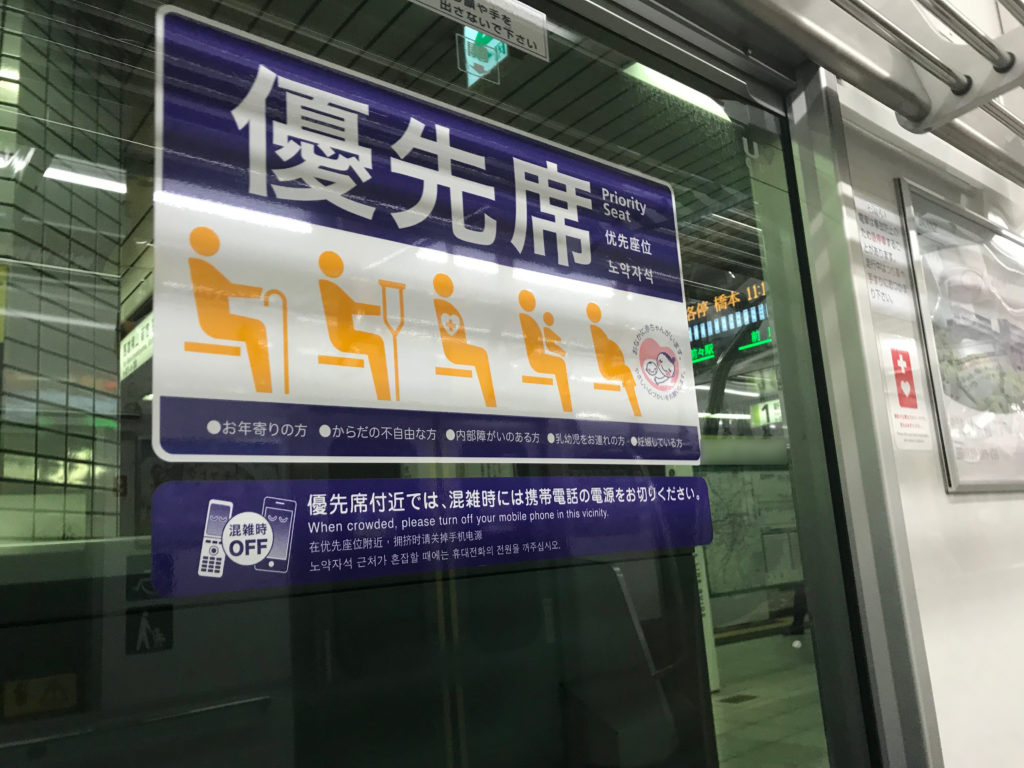
Visit Popular Attractions on Weekdays
Weekends are always very crowded in Japan when it comes to attractions like Tokyo Disneyland or DisneySea .
If you don’t want to spend a long time waiting in lines, visit on weekdays. The earlier in the morning, the better.
If you’re wondering what to see while pregnant in Japan, my suggestion is to check out places like the Ghibli Museum , Team Labs (I imagine you can get some pretty cool pregnancy photos there!), or SHIBUYA SKY .
It might also be worth it to book a tour so that you don’t have to worry about where to go. Let the tour guide know that you’re expecting and they’ll gladly accommodate your needs.
Visit Shrines in Tokyo for a Healthy Pregnancy and Safe Childbirth
There are quite a number of shrines in Japan that are famous for childbirth. Women who visit these shrines pray for a safe delivery and healthy baby.
In Tokyo, the most famous shrine that is visited by pregnant women is Suitengu Shrine (水天宮) , which has a statue of a mother dog and her puppy , called kodakara inu. It is believed that rubbing the head of your zodiac sign’s statue will help you have a safe delivery.
For a list of other shrines and temples to visit in Tokyo for childbirth as well as an overview of childbirth amulets in Japan, check out this article .
Recommended Hotels for a Babymoon in Tokyo
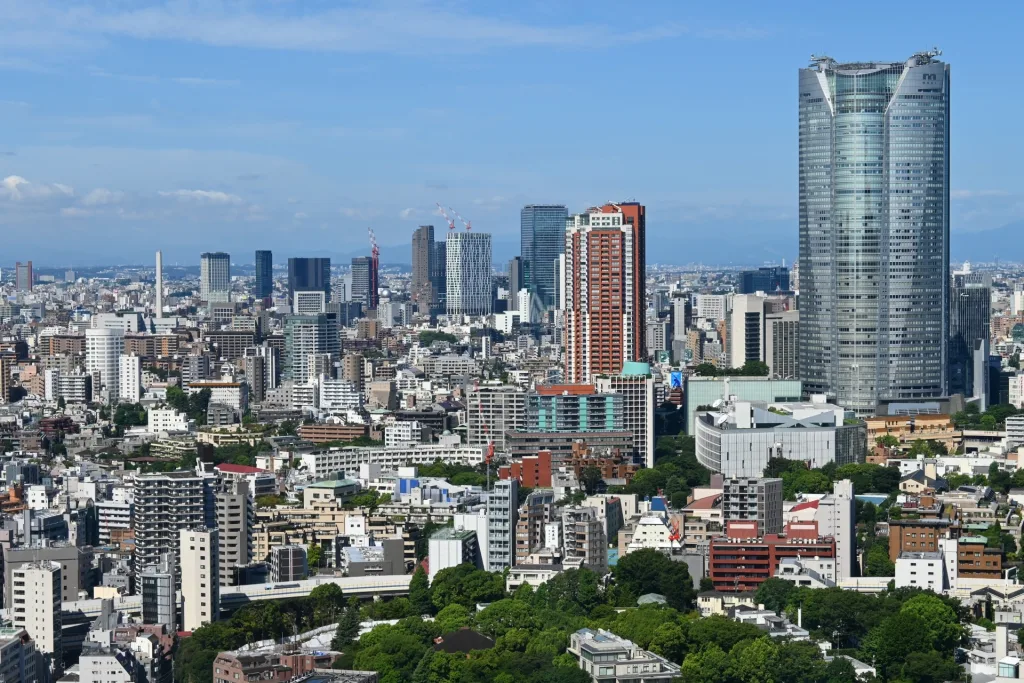
My main suggestion is to think about what you want to do in Tokyo and try to stay at a hotel in that area. ( Booking.com is great for this because they have a map function.)
Tokyo is a huge city so a lot of popular tourist spots are spread out. My recommendation is to look for hotels in places with excellent train access (especially along the Yamanote line), such as:
Tokyo Station
I’ve written an article about family-friendly ryokan in Tokyo so I suggest reading that if you want to stay at a traditional Japanese inn.
If you’re looking for specific hotels, here are my recommendations:
Hotel Chinzanso Tokyo
- Located in a quiet but beautiful area of Tokyo (I used to work in this area, actually!)
- Top-rated on Booking.com (9.2)
- If you let them know you’re expecting, they’ll provide you with maternity pajamas, a body pillow, and decaf tea.
🏨 Check availability
Four Seasons Hotel Tokyo at Otemachi
- Beautiful hotel that’s the perfect place to stay and relax if you don’t feel like going out
- Rated 9.2 on Booking.com
- Has a shared pool and onsen overlooking the city
Babymoon in Kyoto
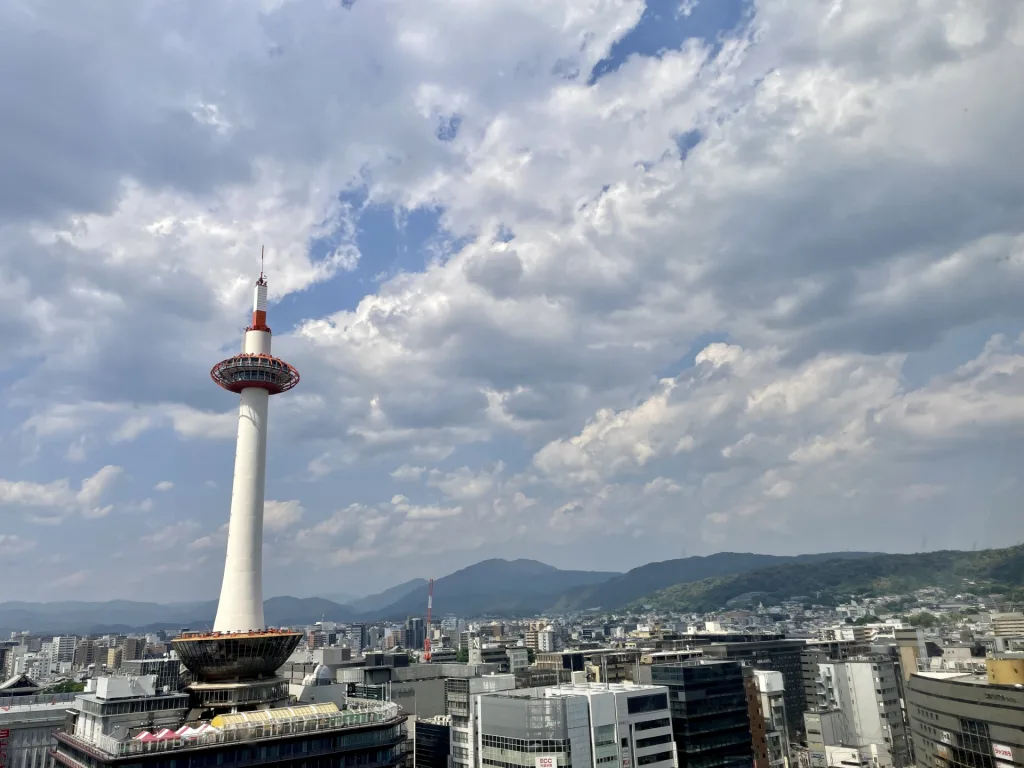
Similar to Tokyo, Kyoto can be very busy and crowded. In particular, it can be hard to get a seat on buses due to congestion.
But if Kyoto is on your must-visit list, I recommend reading this article to find hotels that are within walking distance of popular temples and shrines and this article for ryokan .
If you’re wondering whether you can rent kimonos while pregnant, it is possible but it depends on the kimono studio. So don’t be afraid to ask!
Babymoon in Okinawa
Okinawa is a little piece of tropical paradise south of the main island. A direct plane ride from Narita Airport in Tokyo to Naha Airport in Okinawa will get you there in about 3 hours and in a hop, skip, and a jump (okay, maybe you won’t be jumping while pregnant), you will be relaxing at one of the many hotels near the beach while listening to the sound of the ocean.
There are also other things to do if you want to be more active, like visiting Shuri Castle, which is very different from typical Japanese castles, looking at whale sharks at Churaumi Aquarium, going shopping at American Village , or checking out teamLab Future Park .
If you’re feeling up for it and want to completely escape from the city, you can travel a bit further down south to one of Okinawa’s other islands, such as Miyakojima or Ishigaki.
I’ve been to Okinawa five times in total and most recently stayed at a resort hotel on the main island with my family. It was a fantastic experience and would be a great option for those looking for somewhere to go for a babymoon, so check out my article all about the trip if you’re interested!
Recommended Hotels for a Babymoon in Okinawa:
Ana intercontinental manza beach resort.
- Beachfront hotel
- Has 6 restaurants inside
- Offers various activities
- Offers rental maternity swimsuits for free (make sure to check with the hotel before booking!), maternity body pillows, and maternity massages at their spa!
- Couples rated it 8.9 on Booking.com
Hyatt Regency Seragaki Island Okinawa
- A beachfront hotel with three swimming pools and six restaurants
- Offers maternity services at their spa
- Couples rated it 9.2 on Booking.com
Izu Peninsula
With various hot spring resorts, stunning ocean views, fresh seafood, and cherry blossoms in February, Izu is a great place to relax before the baby comes. As a bonus, it’s not too far from Tokyo.
Recommended Ryokan for a Babymoon in Izu:
This is the ryokan I stayed at for my babymoon in Izu. It was beautiful and they prepared food that I could eat, which was a huge help.
Read about my experience staying at Hamanoyu!
Babymoon in Hakone, Kanagawa
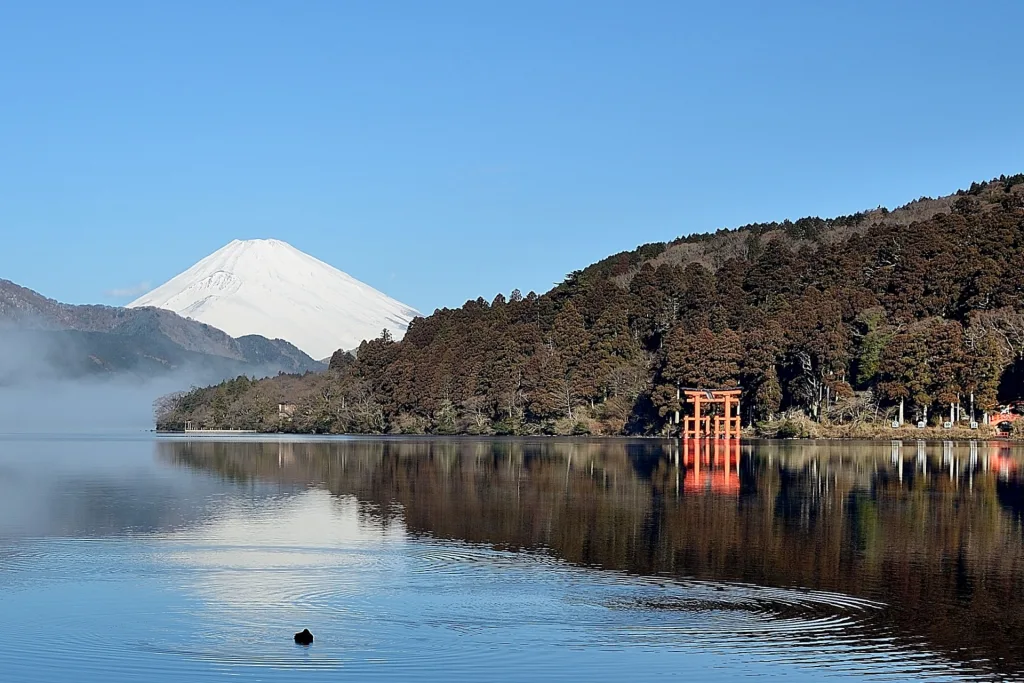
Hakone is a famous onsen resort town in the Kanto region of Japan. It’s a common place for Tokyoites to escape from the city to relax, making it a wonderful destination for a babymoon. You can also see stunning views of the ocean as well as Mount Fuji!
(Make sure to read my article about going to onsen in Japan because it includes information about visiting while pregnant!)
Recommended Ryokan for a Babymoon in Hakone:
Aura tachibana.
- Beautiful onsen baths
- Breakfast and dinner included in the price
- Ask about their maternity plan to see if you can get caffeine-free tea and other goodies
Hakone Nica
- Breakfast and dinner included
- Rooms have semi-open-air baths
- Ask about their maternity plan to have non-alcohol drinks ready for you when you check in
Babymoon in Hakata, Fukuoka
This city is considered one of the most livable places in Japan, and for good reason. It’s not too crowded or expensive yet has all the creature comforts of a city. It’s also right next to the ocean, which is always a plus for me.
Fukuoka is famous for food, such as ramen, motsunabe and mentaiko , making it perfect for a hungry mama-to-be.
Recommended Hotels for a Babymoon in Fukuoka:
Hotel parens onoya.
- Offers a maternity plan where you can use the private onsen bath with your spouse when available
- Kaiseki dinner and breakfast are made taking into consideration what you can eat
- Late check-out (make sure to ask about this and let them know you’re expecting!)
- Rated 8.5 on Booking.com
Babymoon in Chiba
I know what you’re thinking — really? Chiba?
Tokyo’s neighbor, Chiba is actually a great place to visit if you’re pregnant and want to relax and escape the city. There are many resort hotels that are right on the beach, in particular Onjuku, Katsuura, and Shirahama, so you can go in for a swim and then take a nap in the comfort of your own hotel room.
As it’s right near the ocean, Chiba also has a lot of fresh sushi. ( And yes, sushi gets the green light from doctors in Japan for pregnant women, as long as it’s not tuna! ).
Recommended Hotels for a Babymoon in Chiba:
- This beautiful hotel is located along the coast of Chiba
- Has both Japanese and Western rooms
- Some rooms have open-air baths
- Let them know in advance that you’re expecting and you’ll get a caffeine-free welcome drink
- Ask about the maternity massage
Babymoon in Hokkaido
Hokkaido is a great place in winter for those who love the snow and a welcome reprieve from the heat in summer. If you go in winter, although you can’t necessarily partake in winter sports, you can still see the many ice and snow sculptures in Sapporo during Yuki Matsuri (Snow Festival) in February or enjoy the many delicious winter dishes, such as soup curry or crab shabu shabu .
In the summer, you can rent a car and cruise the spacious roads around the island, which has some of the most lovely scenery in Japan, in particular, Furano .
Recommended Hotels for a Babymoon in Hokkaido:
Hotel naturwald furano.
- Great location
- Ask about their maternity plan to get a body pillow to use in your room and caffeine-free tea
Babymoon in Kusatsu, Gunma
Kusatsu is famous for onsen (hot springs) and is a popular spot for couples to visit during winter, especially for those who want an easy weekend trip from Tokyo.
Most ryokan have private hot spring baths either in the room or ones that guests can rent, where you can soak and stay toasty while gazing at the wintery wonderland around you. It’s nothing short of romantic.
Kusatsu also has an onsen field known as Yubatake, which is in the heart of the city. It is quite a sight to see and there are also lots of souvenir shops and restaurants surrounding it.
Recommended Hotels for a Babymoon in Kusatsu:
Kusatsu onsen ventvert.
- Let them know ahead of time that you’re expecting and they’ll prepare a rental body pillow, alcohol-free sparkling wine, and decaf drinks for you
Babymoon in Karuizawa, Nagano
For those who want to escape the muggy heat of summer in Tokyo but don’t want to go as far as Hokkaido, Karuizawa is a great option. It’s only about two hours away from Tokyo by train.
Located at a high altitude in the mountains, it is a refreshing and cool place to visit with plenty of sights like waterfalls, an old Edo-style town, and even a volcano. It’s also known for having some beautiful fall foliage, so autumn is a great time to visit as well.
There’s an outlet mall as well for those who like shopping.
Recommended Hotels for a Babymoon in Karuizawa:
Karuizawa hotel longing house.
- Quaint hotel that offers maternity plans so make sure to ask about it.
- Maternity plans include discounted massages, a free body pillow to rent, and free herbal tea.
- Pregnant women get priority for reserved private open-air baths.
There are also plenty of cute, unique baby-related souvenirs that you can buy in any of these places. In particular, keep your eye out for temples and shrines where you can grab an omamori , or an amulet, for your baby . These are meant to ensure a safe pregnancy and delivery.
Each temple/shrine has its own unique omamori and at a cost of about 500 yen (or about $4 USD), you can collect a few as a reminder of your trip during this special time.
While you’re in Japan on your babymoon, make sure you check out all the amazing stores that offer the cutest baby clothes and other essential items . These won’t only be amazing souvenirs, but they’re also things you won’t be able to get back home, and you will get a ton of compliments (judging from my experience when I visited Canada with my toddler!).
Wondering what exactly to get? Here are some ideas.
And if you’re wondering about maternity clothes in Japan, I have an article about that too .
I hope this information on having a babymoon in Japan has been helpful to you.
Japan is an amazing country and I would recommend it to anyone thinking about traveling here before their baby arrives. It’s clean, safe, and the customer service is impeccable. And of course, the food and sights can’t be beat. And now that you know what to prepare for and where to go on your babymoon, I think you’ll have a fantastic trip.
❀Read: Baby Registry in Japan and Free Baby Product Samples❀
If you’re interested in finding a photographer for your babymoon photos, I highly recommend using the site fotowa . This site is very easy to use and allows you to search for photographers in Japan for various occasions.
You can filter according to where you live and the time and date that works best for you. All photographers have ratings and best of all, they all charge the same rate:21,780 yen for weekdays and 26,180 yen for weekends and holidays. It’s something I wish I had known about much earlier so now I’m sharing it with all of you.
My husband and I used fotowa to take family photos when our daughter was two so if you want to read about our experience using the service, as well as other family photography services in Japan, check out this article .
JOIN THE MAILING LIST

As a small token of my appreciation, I'll also send you a FREE Japanese and English printable to help your little one learn all about words associated with Summer in Japan
Check your inbox or spam folder to confirm your subscription.
Tell us more about yourself: Take our user survey now!
Pregnancy In Japan

It’s amazing how two little lines popping up on a stick can produce such a range of conflicting emotions in a person. Hopefully, that range tends more toward elation rather than the shock-filled-terror end of the scale. Whatever the scenario, there is sure to be a healthy dose of fear in the mix somewhere.
For expats living in Japan, aside from the realization that you are expecting, that fear may be compounded even further by having to figure out prenatal care, doctors, official registration and the like. I can relate. Not to worry, Savvy Tokyo is here to help! After you’ve done your little happy dance, a few fist pumps and taken some deep calming breaths—read of the following tips.
Confirming the pregnancy
If you suspect you may be pregnant, you’ll be happy to know that simple, pee-on-a-stick type home pregnancy tests ( ninshin kensayaku ) can typically be found at any drugstore for a few hundred yen. To confirm your pregnancy head to your local hospital or ladies’ clinic for a checkup.
Hospitals and birth centers book up very fast, so you will want to get onto this fairly quickly.
I went for my confirmation appointment when I was six-weeks pregnant amid much ribbing from my husband—who thought I was being a little overeager—only to find that the delivery suite at Kawasaki Municipal Tama Hospital (my local) was already fully booked for anyone beyond the eight week mark. Note that you don’t need to go to the facility where you wish to give birth for this initial checkup, but depending on the hospital, it may mean your name gets pencilled in even before confirmation.
Your doctor will confirm your pregnancy via transvaginal ultrasound. This can be a blessing and a curse. While it’s exciting to have a scan and possibly see your tiny, flashing bean straightaway, it can also be unnecessarily concerning if no heartbeat can be found, since it’s not always possible at such an early stage. So if not, try not to worry—your doctor will likely ask you to return the following week to try again.
Once your doctor spies a heartbeat, you will be issued with a certificate declaring the pregnancy confirmed ( ninshin todoke ).
Registration at your local health center
After confirmation, take the ninshin todoke and your foreign residence card to your local health center to register the pregnancy. Upon registration you will receive a pregnancy goodie bag which includes:
- Boshi kenkou techou (mother and child health handbook)
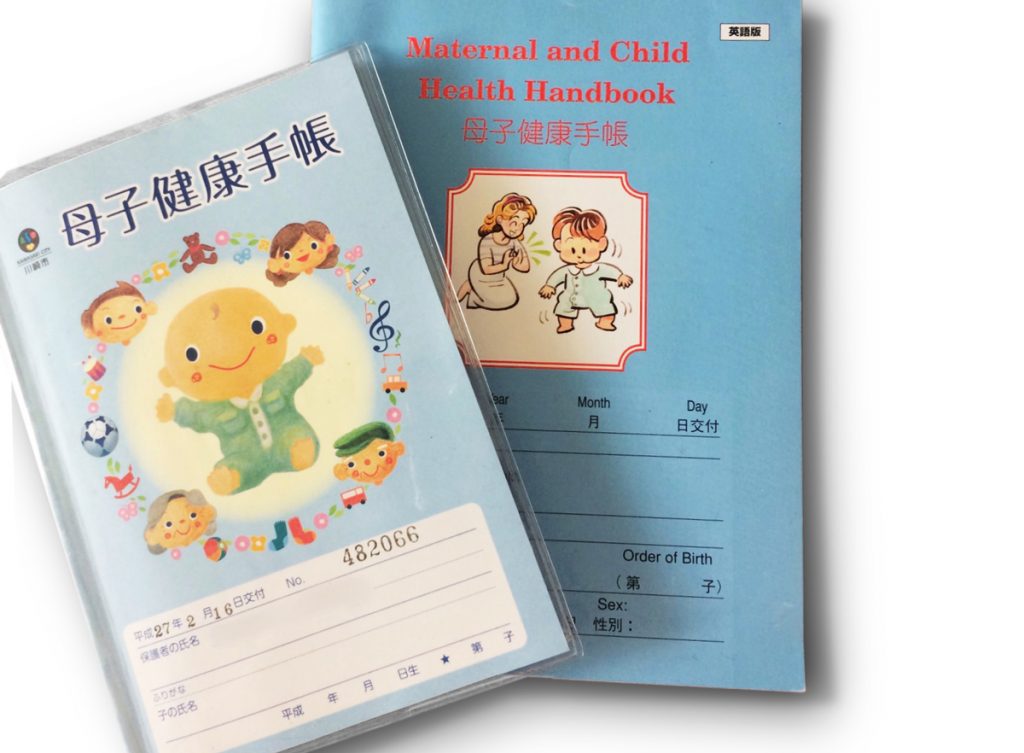
You will need to take this to all of your prenatal appointments, child’s health checkups and vaccinations in the future for medical staff to record and refer to your medical information. Many foreign language translations of the handbook are also available.
- Ninshin kenkou shinsa jushin hyou (pregnancy health checkup coupon book)
Prenatal care in Japan is not covered by the National Health Insurance. However, according to your ward’s policies, you can receive discount coupons for checkups. Note that (at my hospital, at least) the fees for your initial confirmation appointment(s) can be reimbursed after the pregnancy is confirmed and the coupon book is obtained.
- Mataniti māku (maternity mark, or pregnancy badge)
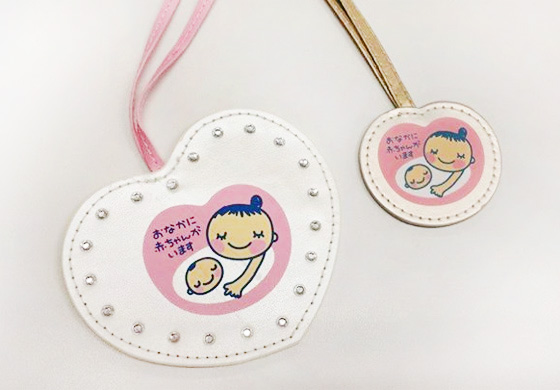
This badge, which charmingly reads “there is a baby in my belly,” provides you with an all-access pass to priority seating areas on public transport and disabled car parks. Attach it to your bag so that other passengers know you are pregnant and will (in theory) offer you their seat. In reality, I found that its efficacy varies according to the time of day and crowdedness of the train or bus.
- Lots of booklets and other goodies

This will depend on where you live. In my bag, I found guidebooks about child health and facilities specific to Kawasaki City as well as other sponsored booklets and coupons for baby products. In Minato Ward, residents are issued with a free bus pass for use on Chii buses until the end of the month in which the child turns one.
Generally speaking, your prenatal checkup schedule will look something like this:
- First and third trimesters—appointments every other week
- Second trimester—monthly appointments
- Beyond 40 weeks/10 months—appointments every two days
This corresponds to around 15 checkups total—heaps compared to that in other countries. Additionally, ultrasounds are performed each time, which means you end up with quite the collection of pictures of your child from long before he/she is born. While it’s nice to have the constant reassurance, it also adds to the cost and can be a little inconvenient, especially if you are working (although employers are required to allow you the time off for appointments). If you find it too much, you may be able to request to space the appointments out more.
While you might find your first appointment pretty daunting with all the people scurrying about, hospital noises and forms to be completed, be assured that each checkup will likely follow the same pattern so you will quickly get the hang of it. If your Japanese abilities are limited, I would suggest bringing a translator with you on your first visit at least.
At my hospital each checkup took the following course, and took between one to 2 1/2 hours:
- Electronic check-in at reception.
- Urine test and (if previously requested by the doctor) blood test at the laboratory department.
- Self weigh-in and blood pressure check using the machines at the OB/GYN department.
- Doctor’s examination including ultrasound and brief discussion (about 10 minutes total). My husband was not allowed in the examination room for the ultrasound, although he could come in for the discussion afterwards. Instead we could book a one-off comprehensive ultrasound in the radiology department.
Maternity leave and notifying your workplace
According to Japan’s Labor Standards Act, employers are required to allow mothers maternity leave from six weeks (for one baby and from 14 weeks for twins and more) prior to the due date until eight weeks after delivery. In addition, the Act on Childcare Leave provides for childcare leave until the child turns one (and until the child reaches one year and six months of age, if the parents take turns). During this time, labor and social insurance will cover up to 66 percent of the mother’s base salary, but every company will have their own regulations—so please make sure you confirm all details with your employer.
The best time for announcing your pregnancy to your employers will, of course, depend on your company’s culture, size and your relationship with your direct supervisors. You will also want to factor in whether you will need time off for prenatal appointments, morning sickness and when your precious baby bump starts to show. It goes without saying that your boss should find out privately and directly from you—this is particularly important in Japanese work culture.
I worked at a tight-knit office of seven workers and was the only person in my role. I also suffered from terrible morning sickness, so I told my boss quite early on—at around 13 weeks as soon as the initial “danger zone” of the first trimester had passed. He was very gracious and quick to give me time off as necessary, saying that I needed to prioritize my health.
In future articles on giving birth in Japan, we will provide an overview of birth options and the birth experiences of a number of other women in Japan. If you have any specific questions, please leave a comment and we’ll be happy to address it.
Leave a Reply Cancel reply
Your email address will not be published. Required fields are marked *
Save my name, email, and website in this browser for the next time I comment.
This site is protected by reCAPTCHA and the Google Privacy Policy and Terms of Service apply.
This Week(End)
Tokyo events for september 2024.

Peace and Love
Peace day 2024.

Cultural Adventures
Peru national festival 2024.

A Mid-autumn Festival
Ueno de panda 2024.

Akasaka's Antique Market

Seafood Diet
Norwegian seafood festival 2024, 50 ways to see, feel and taste tokyo.

Your Guide To The Best Things To Do In Tokyo!
Other articles by rosie.

10 Pointers For Choosing A Birth Facility In Japan

5 Uniquely Japanese Events In A Child’s First Year

Dealing With Postpartum Depression

Prenatal Classes in Japan

6 Tips For Saving Money In Tokyo
Contribute To Savvy Tokyo
Share your voice with savvy tokyo’s readers.
@savvytokyo What convenient apps do you use living in Tokyo?💧📲 #mymizu #freewater #lifeintokyo #lifeinjapan #ecofriendly ♬ やってみよう - WANIMA
Related Articles You Might Like
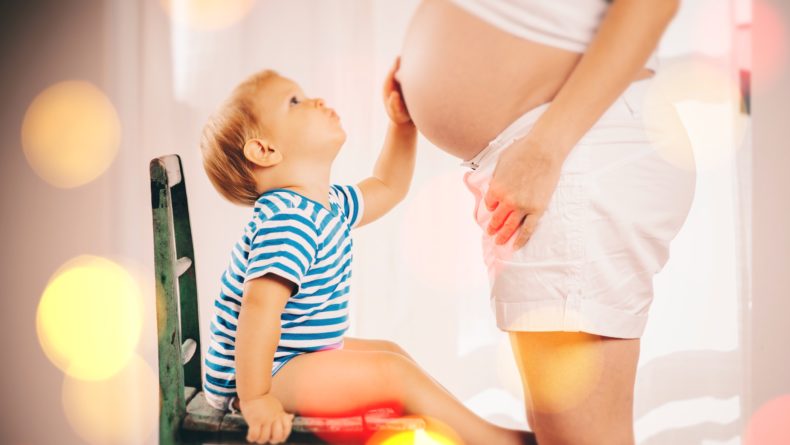
14 Articles You Should Read If You Are Pregnant In Japan
How much does it cost to give birth in Japan? How to find the right hospital? And where the heck do I find new mom...
By The Savvy Team
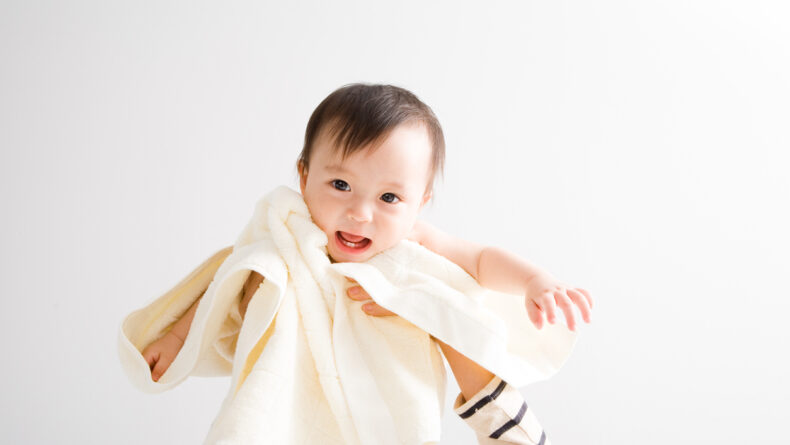
Five Of Our Favorite Japanese Baby Products
As we all know, Japanese companies make some fantastic products that not only make our lives easier, but often have a very unique "kawaii" factor...
By Joanna Pearce
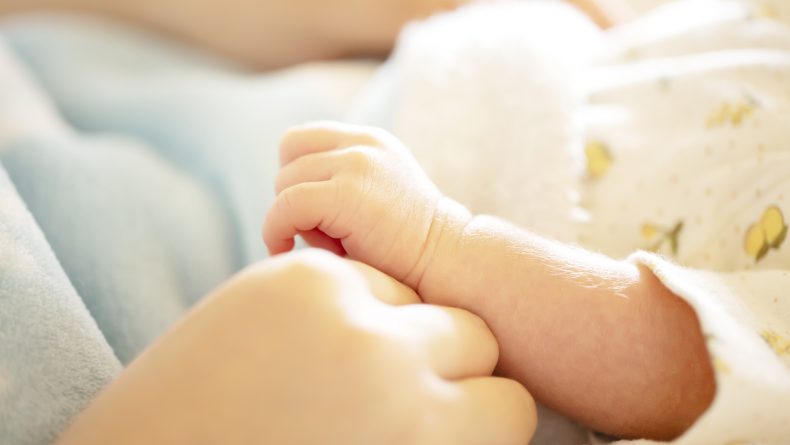
Giving Birth In Japan: A Salubrious Hospital Stay
Childbirth and pleasant hospital confinement do not exactly go together but in Japan, the two somewhat dovetail.
By Fairuz Emran
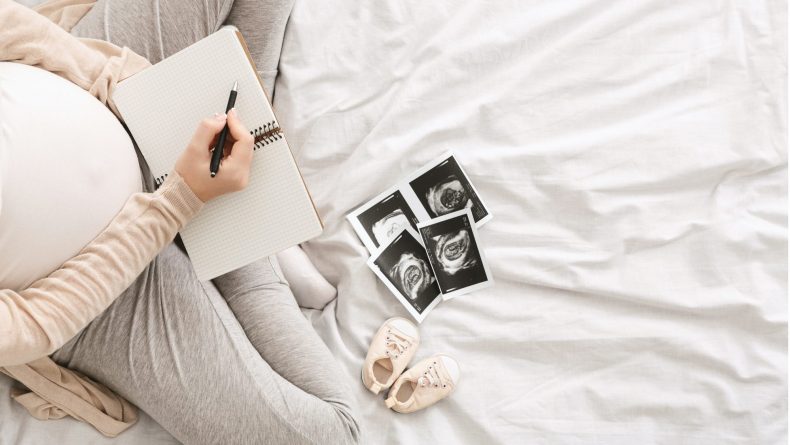
What’s In A Name? Baby Naming As An International Family In Japan
Whether you are looking for a Japanese name, an international name, or one from your home culture, read on for helpful strategies to bestow the...
By Elizabeth Sok
FAQ (International Flights / JMB Program / JAL Vacations)
- Screen Reader users press Enter to select a . Filter by Category
Q&A Result
International Special Assistance
I'm an expectant mother when I travel. How can I put this information to my reservation?
Answer ID:25522
Was this answer helpful?
- Media & Industry
- Meetings & Events
- Select Language 简体中文 繁體中文(香港) 繁體中文(臺灣) India (English) Bahasa Indonesia 한국어 ภาษาไทย Tiếng Việt Singapore (English) Philippines (English) Malaysia (English) Australia/New Zealand (English) Français Deutsch Italiano Español United Kingdom (English) Nordic countries(English) Canada (English) Canada (Français) United States (English) Mexico (español) Português العربية Japan(日本語) Global (English)
- India (English)
- Bahasa Indonesia
- Singapore (English)
- Philippines (English)
- Malaysia (English)
- Australia/New Zealand (English)
- United Kingdom (English)
- Nordic countries(English)
- Canada (English)
- Canada (Français)
- United States (English)
- Mexico (español)
- Global (English)
- Fujiyoshida
- Shimonoseki
- Ishigaki Island
- Miyako Island
- Kerama Island
- Tokyo Island
- Koka & Shigaraki
- Hida Takayama
- Ginza, Nihonbashi
- Beppu & Yufuin (Onsen)
- Ginzan Onsen
- Nagasaki Islands

- Kumano Kodo
- Shikoku Karst
- Amami Oshima
- Hachimantai
- Omihachiman
- Aizuwakamatsu

- Diving in Japan
- Skiing in Japan
- Seasonal Flowers in Japan
- Sustainable Outdoors
- Off the Beaten Track in Japan
- Scenic Spots
- World Heritage
- Home Stays & Farm Stays

- Japanese Gardens
- Japanese Crafts
- Temple Stays
- Heritage Stays
- Festivals and Events
- Theater in Japan
- Japanese Tea Ceremony
- Cultural Experiences in Japan
- Culture in Japan

- Local Cuisine Eastern Japan
- Local Cuisine Western Japan
- Local Street Food
- Japan's Local Ekiben
- Japanese Whisky
- Vegetarian and Vegan Guide
- Sushi in Japan Guide
- Japanese Sake Breweries

- Art Museums
- Architecture
- Performing Arts
- Art Festivals
- Japanese Anime and Comics
- Japanese Ceramics
- Local Crafts

- Scenic Night Views
- Natural Wonders
- Theme Parks
- Samurai & Ninja
- Iconic Architecture

- Wellness Travel in Japan
- Japanese Ryokan Guide
- A Guide to Stargazing in Japan
- Relaxation in Japan
- Forest Bathing (Shinrin-yoku)

- Experiences in Japan
- Enjoy my Japan
- National Parks
- Japan's Local Treasures
- Japan Heritage
- Snow Like No Other
- Wonder Around Japan

- Visa Information
- Getting to Japan
- Airport Access
- COVID-19: Practical Information for Traveling to Japan
- Anime Tourism
- Countryside Stays
- Accessible Tourism
- Hokkaido Great Outdoors
- Scenic World Heritage in Tohoku
- Shikoku’s Nature and Traditions
- Southern Kyushu by Rail

- Traveling by Rail
- How to Travel by Train and Bus
- JR Rail Passes
- Scenic Railways
- Renting a Car
- Sustainable Travel in Japan
- Travel Brochures
- Useful Apps
- Online Reservation Sites
- Eco-friendly Accommodation
- Luxury Accommodations
- Traveling With a Disability
- Hands-free Travel
- How to Book a Certified Tour Guide
- Volunteer Guides
- Tourist Information Center

- Japanese Manners
- Spring in Japan
- Summer in Japan
- Autumn in Japan
- Winter in Japan
- Cherry Blossom Forecast
- Autumn Leaves Forecast

- Japan Visitor Hotline
- Travel Insurance in Japan
- Japan Safe Travel Information
- Accessibility in Japan
- Vegetarian Guide
- Muslim Travelers
- Safety Tips

- JAPAN Monthly Web Magazine
- Arts & Cultures
- Nature & Outdoor
- Festivals & Events
- Insider Blog
- Things to do
- Local Guides
- Food & drink
- Traditional
- Hokuriku Shinetsu

My Favorites
${v.desc | trunc(25)}
Planning a Trip to Japan?
Share your travel photos with us by hashtagging your images with #visitjapanjp
GUIDE Vaccines for Japan Are you up-to-date with your routine immunizations?
- Stories & Guides
- Vaccines for Japan
Generally speaking, visitors to Japan do not require any special vaccinations
However, to be on the safe side, any routine immunizations should be kept up-to-date. Rubella, measles and even dengue fever (for which a vaccine is unavailable) have all made appearances in recent years.

Routine immunizations should be kept up to date
What are routine immunizations?
The United States Centers for Disease Control and Prevention advises that visitors to Japan should have all their routine immunizations up to date. Such immunizations include:
Measles-mumps-rubella (MMR) vaccine Diphtheria-tetanus-pertussis vaccine (DTaP) vaccine Varicella (chickenpox) vaccine Polio vaccine
Some travelers should also consider getting vaccinations or booster shots dependent on their activities in Japan:
Hepatitis A (potential food and water contamination)
Hepatitis B (if you get a tattoo, have a sexual relationship with a new partner or undergo any medical procedures)
Rabies shots (if you plan to go caving or are planning outdoor adventure activities where bats are present)
Japanese Encephalitis (see below)
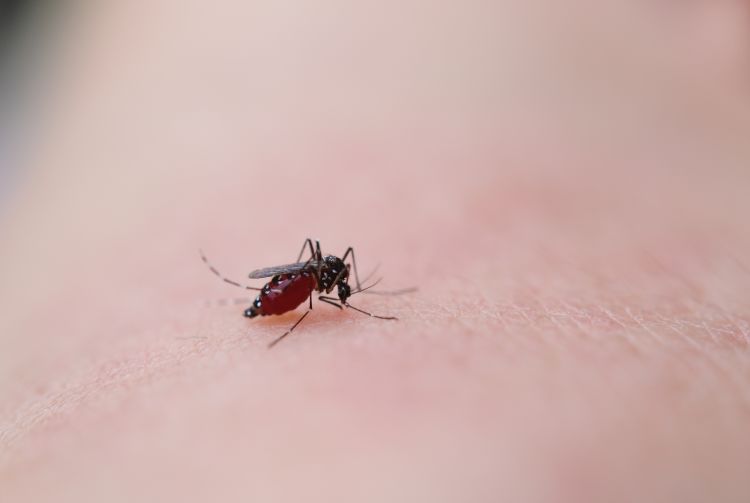
Take precautions against mosquitoes
What is Japanese Encephalitis?
Japanese encephalitis is a mosquito-borne viral disease prevalent in Western Japan with peak transmission occurring during the early summer and fall seasons. Because the virus is spread via mosquitoes feeding on infected animals, birds and mammals, those most at risk are people visiting or working in and around rice fields, irrigation systems and in similar rural areas.
Symptoms may include fever, severe headache, diarrhea, vomiting and general lethargy but not everybody will show symptoms. In rare cases, the disease can be fatal. The best prevention against Japanese encephalitis is vaccination and insect bite prevention. Vaccinations need to be timed appropriately before traveling. For further information, consult your medical practitioner.
Have there been any outbreaks in Japan?
Japan has occasional outbreaks of infectious diseases. In recent times these have mostly included rubella and measles, while a now contained incident of dengue fever was traced to mosquitoes found in Tokyo's Yoyogi Park in 2014.
Visitors to Japan are advised to take precautions and keep routine vaccinations up-to-date to prevent any unnecessary transmission of these diseases. Pregnant women planning to visit Japan who have not been vaccinated against rubella should consult with their medical practitioner before traveling.

Crowded public transportation can be a breeding ground for viruses
What about cold and flu season in Japan?
Japan's flu season runs through the winter months (December-March). Japan's urban centers are densely populated, and the influenza virus is known to spread rapidly. A flu epidemic hit the country in 2018 with over 2.8 million people affected. The CDC recommends visitors to Japan get an annual flu shot, especially if visiting during winter months, to reduce any severity of the illness if contracted.
What is Norovirus?
Norovirus, otherwise known as "noro" or stomach flu, is another transmissible disease common during winter. Symptoms include vomiting, diarrhea, and in severe cases, dehydration. Frequent handwashing is the best way to prevent the transmission of norovirus.
* The information on this page may be subject to change due to COVID-19.
- Story & Guide
- Travel Tips
Did this information help you?
out of found this information helpful.
Thank you for your feedback.
Recommended for you.

Please Choose Your Language
Browse the JNTO site in one of multiple languages
You are using an outdated browser. Upgrade your browser today or install Google Chrome Frame to better experience this site.
Japan Traveler View
Travel health notices, vaccines and medicines, non-vaccine-preventable diseases, stay healthy and safe.
- Packing List
After Your Trip
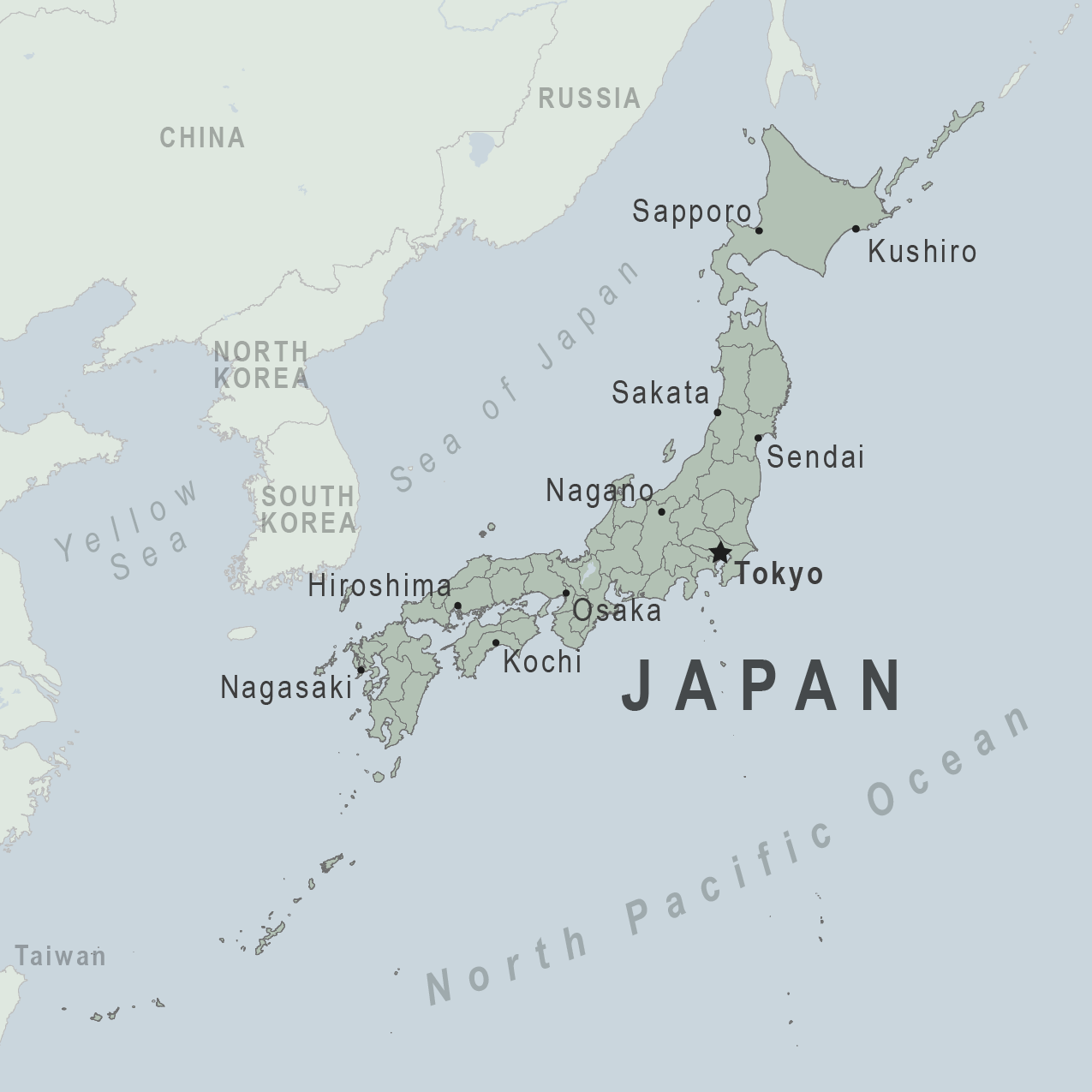
There are no notices currently in effect for Japan.
⇧ Top
Check the vaccines and medicines list and visit your doctor at least a month before your trip to get vaccines or medicines you may need. If you or your doctor need help finding a location that provides certain vaccines or medicines, visit the Find a Clinic page.
Avoid contaminated water
Leptospirosis
How most people get sick (most common modes of transmission)
- Touching urine or other body fluids from an animal infected with leptospirosis
- Swimming or wading in urine-contaminated fresh water, or contact with urine-contaminated mud
- Drinking water or eating food contaminated with animal urine
- Avoid contaminated water and soil
- Avoid floodwater
Clinical Guidance
Airborne & droplet, avian/bird flu.
- Being around, touching, or working with infected poultry, such as visiting poultry farms or live-animal markets
- Avoid domestic and wild poultry
- Breathing in air or accidentally eating food contaminated with the urine, droppings, or saliva of infected rodents
- Bite from an infected rodent
- Less commonly, being around someone sick with hantavirus (only occurs with Andes virus)
- Avoid rodents and areas where they live
- Avoid sick people
Tuberculosis (TB)
- Breathe in TB bacteria that is in the air from an infected and contagious person coughing, speaking, or singing.
Learn actions you can take to stay healthy and safe on your trip. Vaccines cannot protect you from many diseases in Japan, so your behaviors are important.
Eat and drink safely
Food and water standards around the world vary based on the destination. Standards may also differ within a country and risk may change depending on activity type (e.g., hiking versus business trip). You can learn more about safe food and drink choices when traveling by accessing the resources below.
- Choose Safe Food and Drinks When Traveling
- Water Treatment Options When Hiking, Camping or Traveling
- Global Water, Sanitation and Hygiene | Healthy Water
- Avoid Contaminated Water During Travel
You can also visit the Department of State Country Information Pages for additional information about food and water safety.
Prevent bug bites
Although Japan is an industrialized country, bug bites here can still spread diseases. Just as you would in the United States, try to avoid bug bites while spending time outside or in wooded areas.
What can I do to prevent bug bites?
- Cover exposed skin by wearing long-sleeved shirts, long pants, and hats.
- Use an appropriate insect repellent (see below).
- Consider using permethrin-treated clothing and gear if spending a lot of time outside. Do not use permethrin directly on skin.
What type of insect repellent should I use?
- FOR PROTECTION AGAINST TICKS AND MOSQUITOES: Use a repellent that contains 20% or more DEET for protection that lasts up to several hours.
- Picaridin (also known as KBR 3023, Bayrepel, and icaridin)
- Oil of lemon eucalyptus (OLE) or para-menthane-diol (PMD)
- 2-undecanone
- Always use insect repellent as directed.
What should I do if I am bitten by bugs?
- Avoid scratching bug bites, and apply hydrocortisone cream or calamine lotion to reduce the itching.
- Check your entire body for ticks after outdoor activity. Be sure to remove ticks properly.
What can I do to avoid bed bugs?
Although bed bugs do not carry disease, they are an annoyance. See our information page about avoiding bug bites for some easy tips to avoid them. For more information on bed bugs, see Bed Bugs .
For more detailed information on avoiding bug bites, see Avoid Bug Bites .
Stay safe outdoors
If your travel plans in Japan include outdoor activities, take these steps to stay safe and healthy during your trip:
- Stay alert to changing weather conditions and adjust your plans if conditions become unsafe.
- Prepare for activities by wearing the right clothes and packing protective items, such as bug spray, sunscreen, and a basic first aid kit.
- Consider learning basic first aid and CPR before travel. Bring a travel health kit with items appropriate for your activities.
- If you are outside for many hours in the heat, eat salty snacks and drink water to stay hydrated and replace salt lost through sweating.
- Protect yourself from UV radiation : use sunscreen with an SPF of at least 15, wear protective clothing, and seek shade during the hottest time of day (10 a.m.–4 p.m.).
- Be especially careful during summer months and at high elevation. Because sunlight reflects off snow, sand, and water, sun exposure may be increased during activities like skiing, swimming, and sailing.
- Very cold temperatures can be dangerous. Dress in layers and cover heads, hands, and feet properly if you are visiting a cold location.
Stay safe around water
- Swim only in designated swimming areas. Obey lifeguards and warning flags on beaches.
- Do not dive into shallow water.
- Avoid swallowing water when swimming. Untreated water can carry germs that make you sick.
- Practice safe boating—follow all boating safety laws, do not drink alcohol if you are driving a boat, and always wear a life jacket.
Keep away from animals
Most animals avoid people, but they may attack if they feel threatened, are protecting their young or territory, or if they are injured or ill. Animal bites and scratches can lead to serious diseases such as rabies.
Follow these tips to protect yourself:
- Do not touch or feed any animals you do not know.
- Do not allow animals to lick open wounds, and do not get animal saliva in your eyes or mouth.
- Avoid rodents and their urine and feces.
- Traveling pets should be supervised closely and not allowed to come in contact with local animals.
- If you wake in a room with a bat, seek medical care immediately. Bat bites may be hard to see.
All animals can pose a threat, but be extra careful around dogs, bats, monkeys, sea animals such as jellyfish, and snakes. If you are bitten or scratched by an animal, immediately:
- Wash the wound with soap and clean water.
- Go to a doctor right away.
- Tell your doctor about your injury when you get back to the United States.
Reduce your exposure to germs
Follow these tips to avoid getting sick or spreading illness to others while traveling:
- Wash your hands often, especially before eating.
- If soap and water aren’t available, clean hands with hand sanitizer (containing at least 60% alcohol).
- Don’t touch your eyes, nose, or mouth. If you need to touch your face, make sure your hands are clean.
- Cover your mouth and nose with a tissue or your sleeve (not your hands) when coughing or sneezing.
- Try to avoid contact with people who are sick.
- If you are sick, stay home or in your hotel room, unless you need medical care.
Avoid sharing body fluids
Diseases can be spread through body fluids, such as saliva, blood, vomit, and semen.
Protect yourself:
- Use latex condoms correctly.
- Do not inject drugs.
- Limit alcohol consumption. People take more risks when intoxicated.
- Do not share needles or any devices that can break the skin. That includes needles for tattoos, piercings, and acupuncture.
- If you receive medical or dental care, make sure the equipment is disinfected or sanitized.
Know how to get medical care while traveling
Plan for how you will get health care during your trip, should the need arise:
- Carry a list of local doctors and hospitals at your destination.
- Review your health insurance plan to determine what medical services it would cover during your trip. Consider purchasing travel health and medical evacuation insurance for things your regular insurance will not cover.
- Carry a card that identifies, in the local language, your blood type, chronic conditions or serious allergies, and the generic names of any medicines you take.
- Bring copies of your prescriptions for medicine and for eye glasses and contact lenses.
- Some prescription drugs may be illegal in other countries. Call Japan’s embassy to verify that all of your prescription(s) are legal to bring with you.
- Bring all the medicines (including over-the-counter medicines) you think you might need during your trip, including extra in case of travel delays. Ask your doctor to help you get prescriptions filled early if you need to.
Many foreign hospitals and clinics are accredited by the Joint Commission International. A list of accredited facilities is available at their website ( www.jointcommissioninternational.org ).
Select safe transportation
Motor vehicle crashes are the #1 killer of healthy US citizens in foreign countries.
Be smart when you are traveling on foot.
- Use sidewalks and marked crosswalks.
- Pay attention to the traffic around you, especially in crowded areas.
- Remember, people on foot do not always have the right of way in other countries.
Riding/Driving
Choose a safe vehicle.
- Choose official taxis or public transportation, such as trains and buses.
- Make sure there are seatbelts.
- Avoid overcrowded, overloaded, top-heavy buses and minivans.
- Avoid riding on motorcycles or motorbikes, especially motorbike taxis. (Many crashes are caused by inexperienced motorbike drivers.)
- Choose newer vehicles—they may have more safety features, such as airbags, and be more reliable.
- Choose larger vehicles, which may provide more protection in crashes.
Think about the driver.
- Do not drive after drinking alcohol or ride with someone who has been drinking.
- Consider hiring a licensed, trained driver familiar with the area.
- Arrange payment before departing.
Follow basic safety tips.
- Wear a seatbelt at all times.
- Sit in the back seat of cars and taxis.
- When on motorbikes or bicycles, always wear a helmet. (Bring a helmet from home, if needed.)
- Do not use a cell phone or text while driving (illegal in many countries).
- Travel during daylight hours only, especially in rural areas.
- If you choose to drive a vehicle in Japan, learn the local traffic laws and have the proper paperwork.
- Get any driving permits and insurance you may need. Get an International Driving Permit (IDP). Carry the IDP and a US-issued driver's license at all times.
- Check with your auto insurance policy's international coverage, and get more coverage if needed. Make sure you have liability insurance.
- Avoid using local, unscheduled aircraft.
- If possible, fly on larger planes (more than 30 seats); larger airplanes are more likely to have regular safety inspections.
- Try to schedule flights during daylight hours and in good weather.
Helpful Resources
Road Safety Overseas (Information from the US Department of State): Includes tips on driving in other countries, International Driving Permits, auto insurance, and other resources.
The Association for International Road Travel has country-specific Road Travel Reports available for most countries for a minimal fee.
Traffic flows on the left side of the road in Japan.
- Always pay close attention to the flow of traffic, especially when crossing the street.
- LOOK RIGHT for approaching traffic.
Maintain personal security
Use the same common sense traveling overseas that you would at home, and always stay alert and aware of your surroundings.
Before you leave
- Research your destination(s), including local laws, customs, and culture.
- Monitor travel advisories and alerts and read travel tips from the US Department of State.
- Enroll in the Smart Traveler Enrollment Program (STEP) .
- Leave a copy of your itinerary, contact information, credit cards, and passport with someone at home.
- Pack as light as possible, and leave at home any item you could not replace.
While at your destination(s)
- Carry contact information for the nearest US embassy or consulate .
- Carry a photocopy of your passport and entry stamp; leave the actual passport securely in your hotel.
- Follow all local laws and social customs.
- Do not wear expensive clothing or jewelry.
- Always keep hotel doors locked, and store valuables in secure areas.
- If possible, choose hotel rooms between the 2nd and 6th floors.
Healthy Travel Packing List
Use the Healthy Travel Packing List for Japan for a list of health-related items to consider packing for your trip. Talk to your doctor about which items are most important for you.
Why does CDC recommend packing these health-related items?
It’s best to be prepared to prevent and treat common illnesses and injuries. Some supplies and medicines may be difficult to find at your destination, may have different names, or may have different ingredients than what you normally use.
If you are not feeling well after your trip, you may need to see a doctor. If you need help finding a travel medicine specialist, see Find a Clinic . Be sure to tell your doctor about your travel, including where you went and what you did on your trip. Also tell your doctor if you were bitten or scratched by an animal while traveling.
For more information on what to do if you are sick after your trip, see Getting Sick after Travel .
Map Disclaimer - The boundaries and names shown and the designations used on maps do not imply the expression of any opinion whatsoever on the part of the Centers for Disease Control and Prevention concerning the legal status of any country, territory, city or area or of its authorities, or concerning the delimitation of its frontiers or boundaries. Approximate border lines for which there may not yet be full agreement are generally marked.
Other Destinations
If you need help finding travel information:
Message & data rates may apply. CDC Privacy Policy
File Formats Help:
- Adobe PDF file
- Microsoft PowerPoint file
- Microsoft Word file
- Microsoft Excel file
- Audio/Video file
- Apple Quicktime file
- RealPlayer file
- Zip Archive file
- JAPAN ・English
- Help & Contact
International
- Shopping&Life
ANA Mileage Club
- SPECIAL ASSISTANCE
- Corporate Customer
Please select the card you wish to join
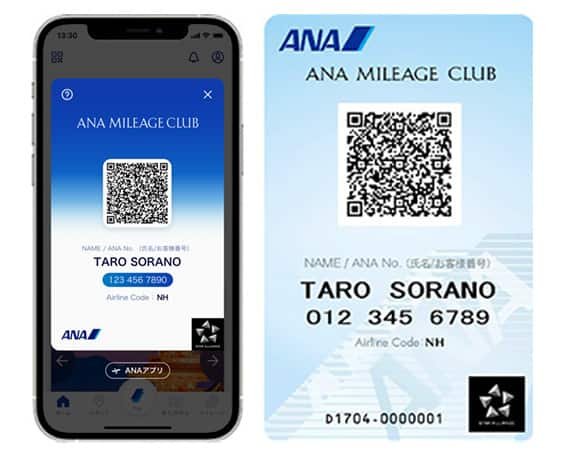
Get your digital card immediately No enrollment or annual fees ANA Mileage Club Card
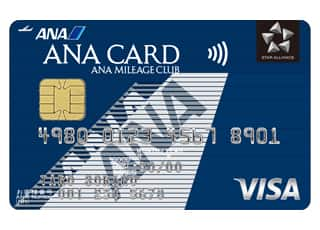
Earn more miles for your money With credit function ANA Card
What is the ANA Mileage Club?
- ANA Website
Pregnant women [Japan Domestic Flights]
We provide assistance for pregnant women.
Assistance for pregnant women
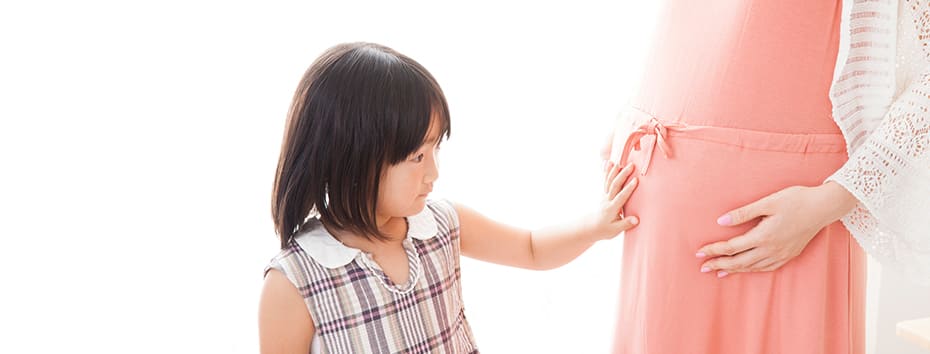
We provide assistance for pregnant women to make air travel more comfortable for these people.
For Passengers Traveling with Small Children
For pregnant women

How to make a reservation and other procedures
- Reservations
You can assign seats through ANA Website and at ANA Reservation and Information Center when you book and purchase tickets * .
When two days prior to departure date, passengers cannot choose seating until tickets have been purchased.
We may not always able to honor your seat request because the number of seats are limited.Please note that your assigned seat may change due to change in aircraft or other reasons.
Passengers seated in emergency exit row seats will be asked to assist during an emergency evacuation in accordance with the instructions of cabin attendants. Expectant mothers who are expecting delivery in less than 28 days may not be seated in emergency exits for security reasons.

Preparation for journey
Expectant mothers expecting delivery within 28 days including the departure date need to submit a medical information form.
Please fill in the required items in advance, print out and bring it with you to the airport.
Please download with the passenger's consent.

The medical information form is to indicate that the pregnancy is not complicated, and passenger is in good health for air travel and expected date of delivery. It must be issued by a physician no more than seven days (including the day of departure) prior to departure.
The medical information form will be accepted even if it is not ANA's prescribed form.
Adobe Acrobat Reader is required to view PDF format files.
At the Departure Airport
Electric carts (only in haneda airport terminal 2).
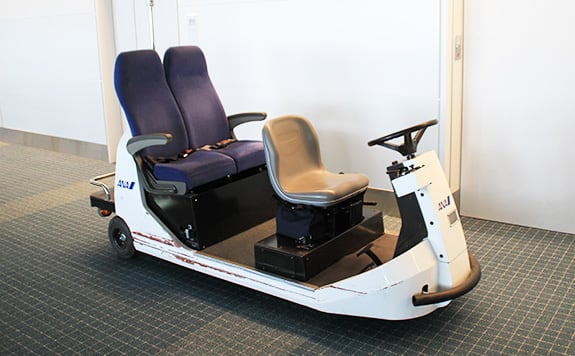
[Available time] 8:00-19:00
Expectant mothers who have difficulty walking to the boarding gate can use electric carts in the Departure Gate Area in Haneda Airport Terminal 2.Please ask counter staff for the service on the boarding date.
Number and use of electric carts is limited.
Priority boarding at the gate
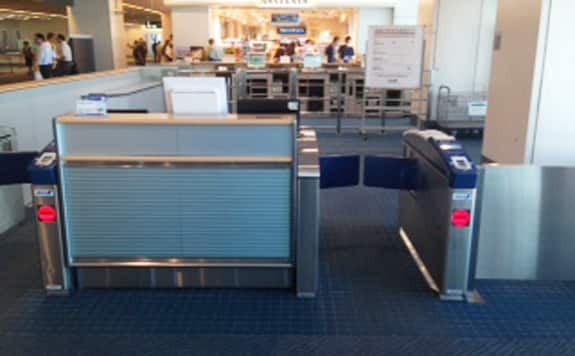
Expectant mothers and passengers traveling with small children under the age of three will be offered priority boarding. If you wish to priority board, please inform the staff at the boarding gate.
Please note that priority boarding may not be available depending on the flight conditions.
Maternity Mark tags
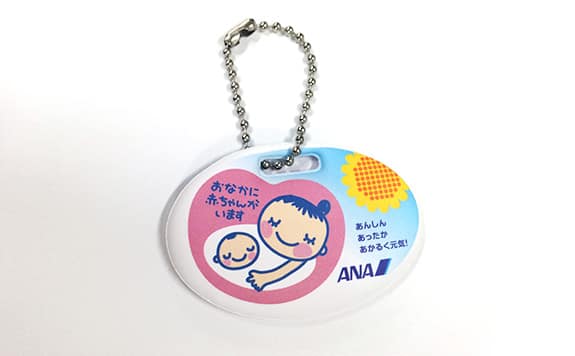
We hand out ANA original "Maternity Mark" tags to expectant mothers.
For those who need a tag, please let us know at the ANA airport counter.
Inside the Cabin
Reliable service in the cabin.
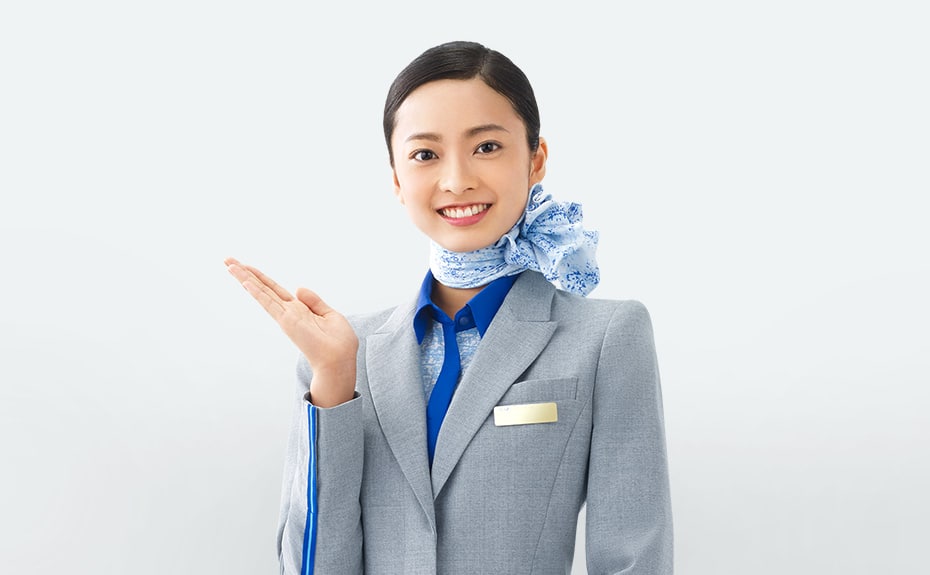
We will gladly assist you with stowing your luggage.Please feel free to ask our cabin crew.
Please do not hesitate to contact our cabin crew if you need further assistance.
We restrict travel for expectant mothers whose baby is expected within 28 days of delivery (including that expected delivery date).
Example: Passenger whose expected delivery date is April 30

Passengers expecting confinement within 7 days (Including expected delivery date): Medical information form is required. Passenger must be accompanied by a physician.
Passengers expecting confinement within 28 days to 8 days (Including expected delivery date): Medical information form is required.
The medical information form will be accepted even if it is not ANA's prescribed form.
Check in of expectant mothers is at least closed 30 minutes prior to departure.
Passengers expecting confinement within 28 days may accompany only 1 infant.In cases where a mother is accompanying other infant(s)/child(ren), a ticket needs to be purchased and he or she needs to sit by him/herself using a child seat .
(Children under 2 years of age can sit by themselves without using a child seat )
Pregnant women may not be allowed to travel if the flight might change the destination due to weather conditions, etc. or if the conditions may be considered to effect on the passenger's health during the flight.
0570-029-709
Business hours:6:30-22:00 (All year around)
Tokyo 03-6741-1120
Dial a number above and select "1" when the automated voice system is prompted.
Operator hours are currently different. Please see Contact Us for details.
For passengers who require assistance
The ANA Group provides assistance to passengers with physical difficulties such as sickness, injury, or disability, as well as passengers requiring other assistance (expectant mothers, elderly passengers, passengers with young children, unaccompanied minors, and passengers traveling with pets) so that they can enjoy a safe and comfortable flight.
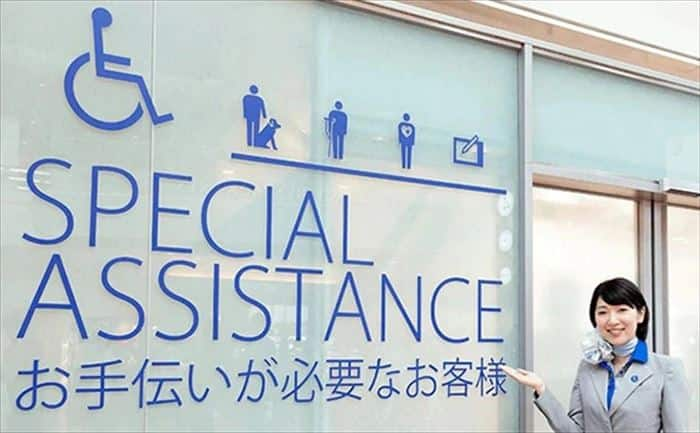
Counter for passengers who need special assistance at Airports
Haneda Airport 2F
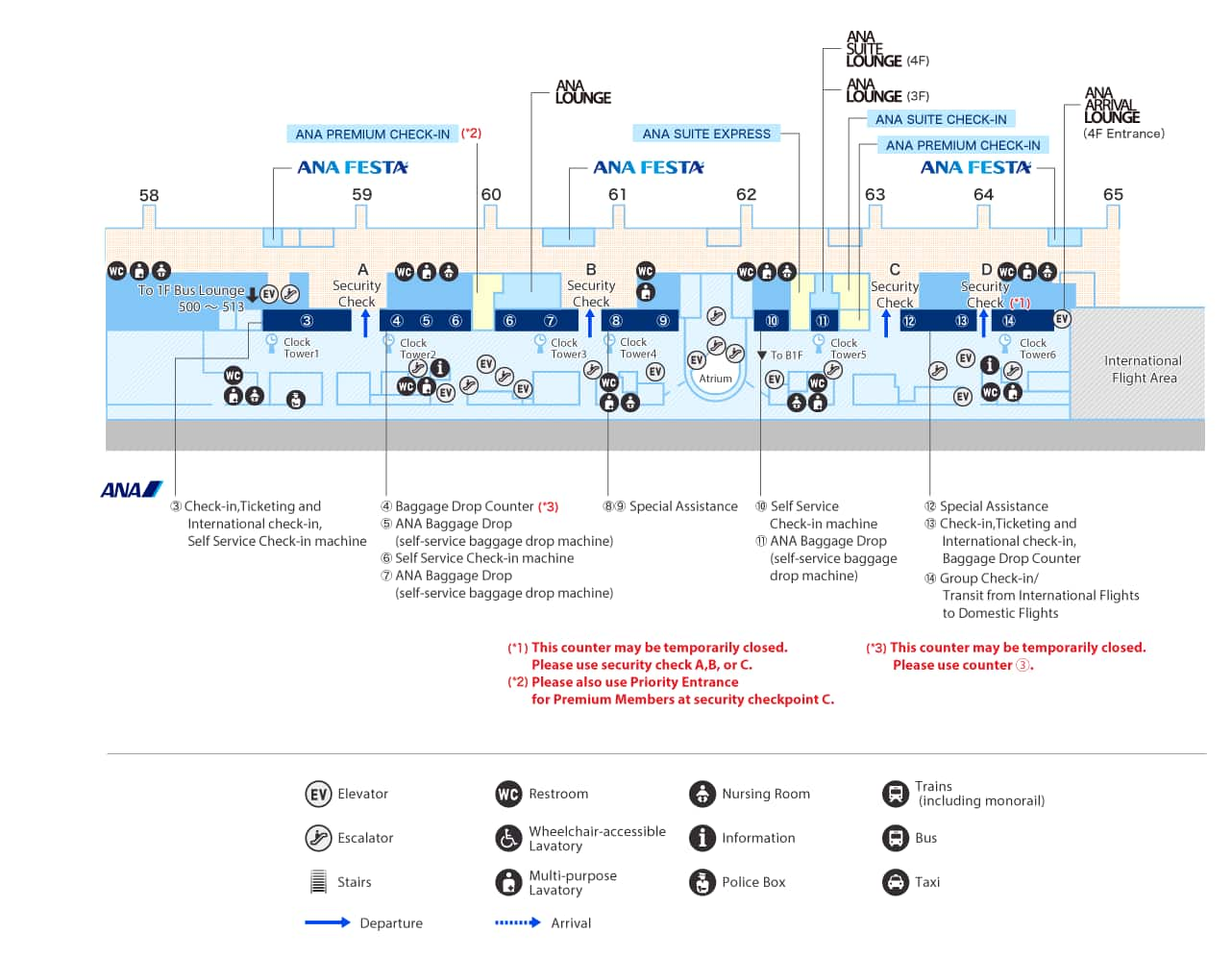
New Chitose Airport 2F
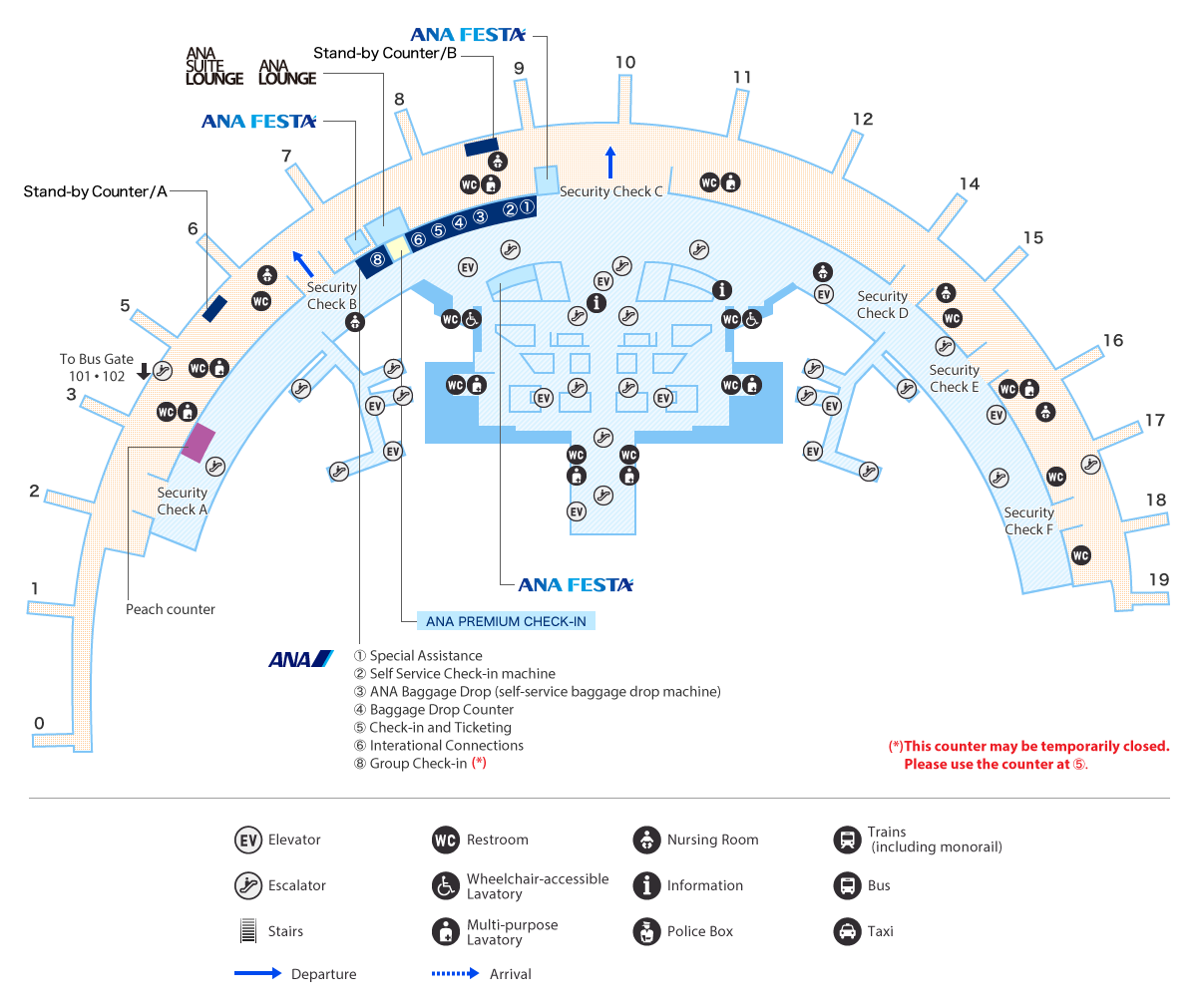
Chubu International Airport 3F
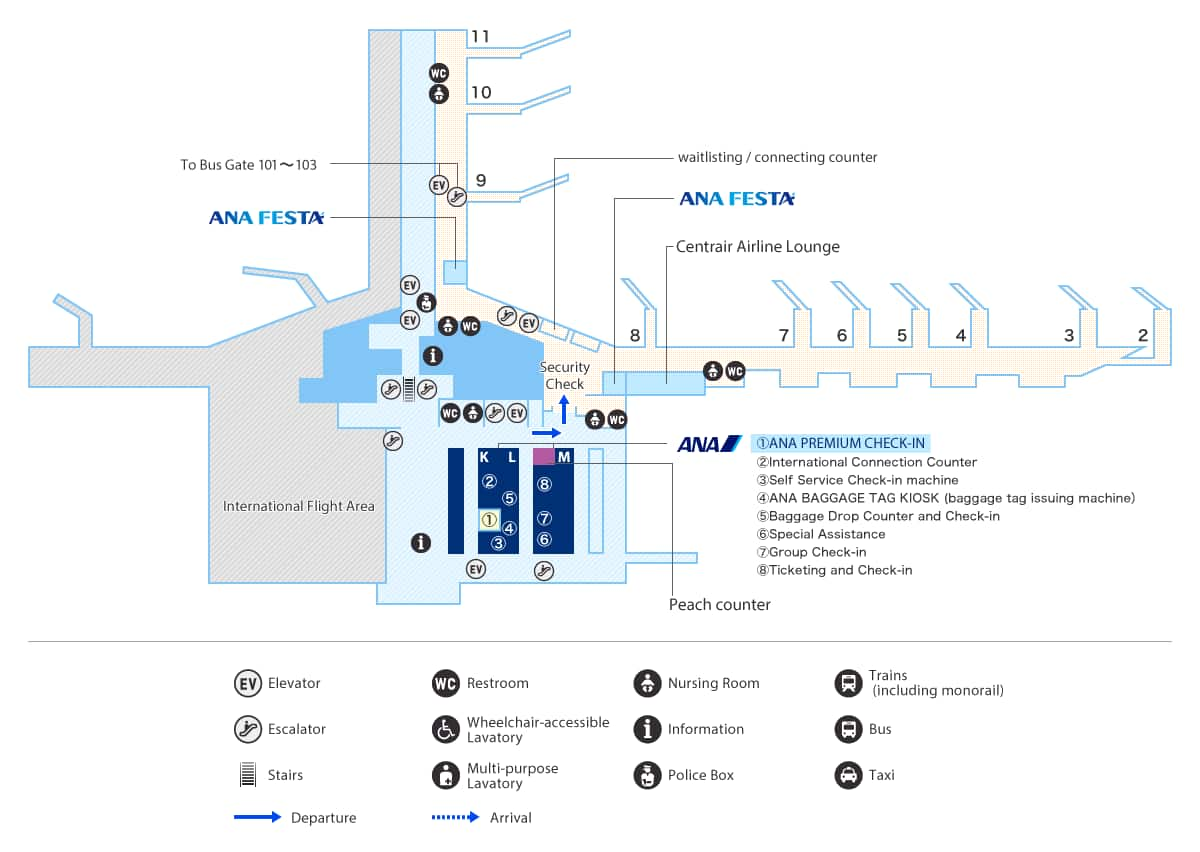
Itami Airport 1F
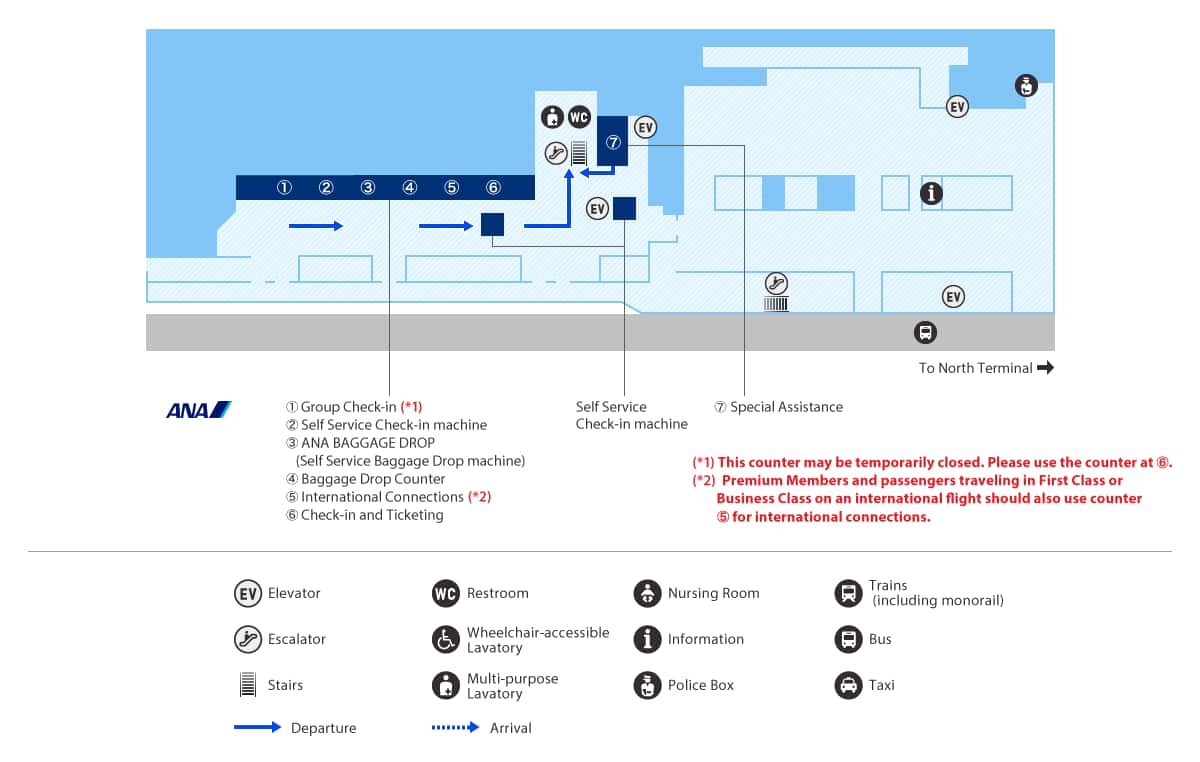
Fukuoka Airport 1F
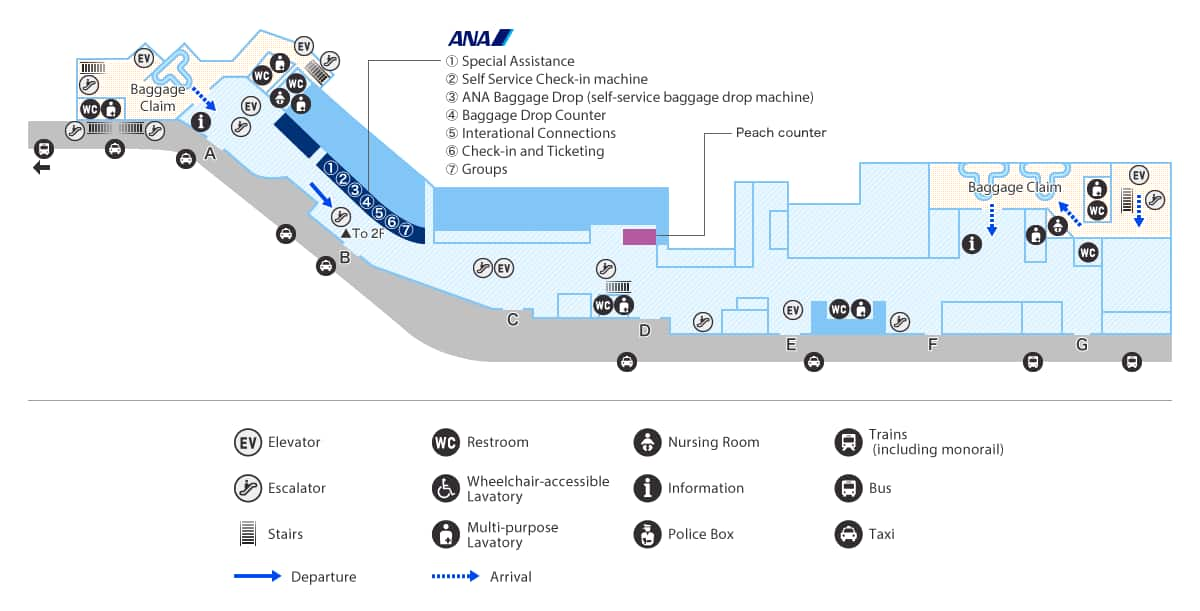
Naha Airport 3F
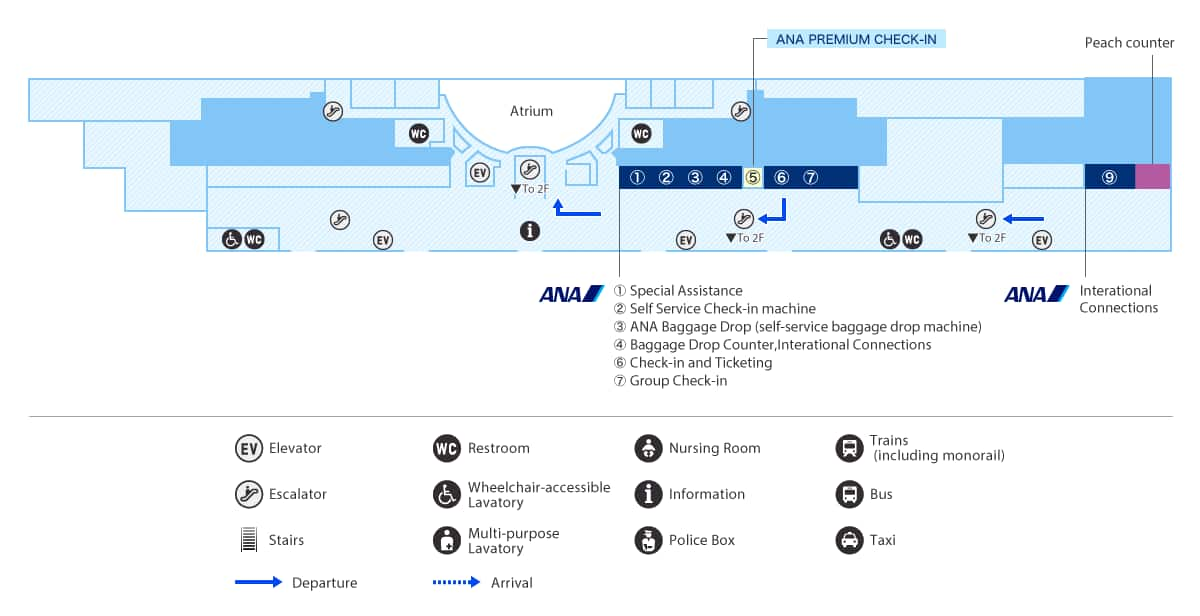
Related Tags
- Within Japan
Related Pages
Ana group ana group, official social media accounts.

For the 11th Consecutive Year, ANA Receives 5-Star Rating!

The Most On-Time Airline in the Asia Pacific for Five Consecutive Years!
- Privacy Policy
- Cookie Policy
- External Transmission of User Information
- Terms of Use
- System Requirement
- Web Accessibility Policy
- Conditions of Carriage for Domestic Flights
- Conditions of Carriage for International Flights
- Conditions of Carriage by Charter Flight
- ANA Mileage Club Terms and Conditions
Delete one character
Member Login
- Log In with Your AMC Membership Number
- ANA Biz Login
:Click on this icon to display the virtual keyboard.
- Before proceeding to log in, please be sure to read and accept the section on the purpose of using personal information in the ANA Privacy Policy .
About Logging In
Join ANA Mileage Club
Information for Members Logging In
- Points to note when using your AMC account.
Auto-Login with Cookies
By checking the Keep Me Logged In box on the login screen, you will not need to re-enter your membership number or password for subsequent logins.
- However, you will need to re-enter your password as a form of verification when making reservations, requesting awards, registering/revising personal information, and using other members-only functions.
Do you really want to log out?
- If you click "Log Out," you will be logged out even if you have selected "Save Login Status."
- Close all open browser windows if you want to quit your session without logging out.
ANA Biz is a business travel arrangement service.
Click here if you have forgotten your ID or password
Service Desk
Guidance of the diamond service
Guidance of the platinum service
Guidance of the bronze Service
Notices from ANA
View or update your profile, family usage.
Change address
Registration for mailed items
Change e-mail address
Change Password
Change your main card
List of your ANA Number
Reservation Information (Payment Method etc.)
Forgot your password?
Lost or damaged Card
Combining Mileage account
Change of Name
ANA Mileage Club Q&A
Award User Registration
Inheritance of Mileage
ANA Card Family Mile Registration
Edy Campaign Registration
Other(Procedures at the Service Center)
Membership Cancellation
Domestic Flights
ANA SKY COINS
Premium Point / Point on ANA /
View Mileage Account Balance
View ANA SKY COIN Balance
Choose your City and Language 都市・言語選択
Please enter your city and then choose the applicable option. 都市を入力後、選択してください
- 東京(全て)[TYO] / Tokyo(All)
- Assistance for Disabled Customers
- Help & Contact
- ANA Mileage Club Logout ANA Mileage Club Login / Join ANA Biz Logout ANA Biz Login

IMAGES
VIDEO
COMMENTS
the trimester you wish to travel and best time in pregnancy to travel for a babymoon, the best time to visit Japan in terms of crowds and weather. So firstly let us consider the best time to travel to Japan while pregnant. The second trimester is often considered the golden month to travel to pregnant. That is because:
2nd term: vitality recovered, lower risks. 3rd term: return of intense fatigue, freedom of movements restrained, risk of premature birth. It is therefore best to plan a trip in the 4th and 5th months, possibly in the 6th. When you start your 7th month, some airlines will refuse to let you board the plane ️ anyway.
We traveled to Japan when I was 11 weeks pregnant, in the midst of some pretty challenging morning sickness in my first trimester. We booked the trip several months ahead knowing that if things worked out, I would be pregnant on this trip. ... Two of the most popular experiences tourists look forward to when traveling to Japan are the sushi and ...
The Third Trimester. 3. Register Your Pregnancy in Japan. After getting the green light from your doctor, register your pregnancy and get a boshi kenkou techou (母子健康手帳), which means "Maternal and Child Health Handbook," as well as a coupon book, from your local municipal office.
2. Steps to Take After Your Baby is Born (1) - Procedures at the Municipal Office. (1) Submit a Notification of Birth to the Municipal Office. (2) Apply for Your Baby's Status of Residence at the Immigration Bureau. (3) Report to the Embassy/Consulate of the Parents' Nationality (Registration in the Home Country) 3.
Pregnancy in Japan is a 10 month affair. However, as I discovered, its a 40 week long event. Yet here, those 40 weeks become 10 months of 4 weeks each. Those ten months are further divided into three trimesters: First trimester: 0 to 15 weeks (初期 | shoki) Second trimester:16 to 27 weeks (中期 | chuuki)
1. Take a pregnancy test at the hospital. (recommended 5th to 6th week of pregnancy) It may seem obvious, but the first thing to do is confirm the pregnancy. That your period does not arrive on the scheduled date can be a great joy or make you panic, depending on the situation of each one.
The child discount cannot be applied to a trip in which a child is traveling as an unaccompanied minor from a Japanese airport. Please note that the adult fare will apply. Since the applicable fare varies depending on the country of departure, please inquire over the telephone if the child will be traveling from an airport outside Japan.
Being pregnant in Japan might be a very unique experience for someone if they and/or their partner is/are non-Japanese. I'd like to help non-Japanese people get ideas of what to do if they are pregnant in Japan. ... Traveling is my passion, I love meeting new people, going somewhere to learn history and culture, and widening up my point of ...
Generally, planning fewer things is easier than a packed itinerary when traveling with a baby anywhere in the world. This is especially true for Japan where you're most likely taking a mix of trains and buses around the country. The more remote you're going, the more connections you're likely to have as well.
There's so much to prepare and learn before having a baby! Here was my experience: Counting 10 months instead of 9: I learned that Japanese moms count 10 months of pregnancy (40 weeks divided by 4 weeks in a month = 10), while Americans (like me) count only 9. So I needed to learn how to count the Japanese way.
As you mentioned already, just listen to your body and pace yourself. You'll have a blast!! We also picked up tons of goodies for the baby (like bath soap, silicone bibs, silicone spoons, fever patches, baby powder, etc) while we were there. 36+2 now and can't wait to go back with baby next spring/early summer!! 3.
Rush hour is typically between 7:30 to 9:00 AM in the morning and 5:00 PM to 7:00 PM in the evening. The trains are incredibly crowded during this time and it can be hard to get a seat despite that there are priority seats for people such as pregnant women. Look for this sign above seats when riding the train in Japan.
Maternity leave and notifying your workplace. According to Japan's Labor Standards Act, employers are required to allow mothers maternity leave from six weeks (for one baby and from 14 weeks for twins and more) prior to the due date until eight weeks after delivery. In addition, the Act on Childcare Leave provides for childcare leave until ...
Prior to boarding, we will ask how many weeks you have been pregnant or your expected delivery date. If you have a reservation already, please contact JAL Call Centre. please select the "Travel during pregnancy" checkbox on the "Passenger Information" screen. and inform us your expected delivery date. Separated procedures will be required if ...
Visitors to Japan are advised to take precautions and keep routine vaccinations up-to-date to prevent any unnecessary transmission of these diseases. Pregnant women planning to visit Japan who have not been vaccinated against rubella should consult with their medical practitioner before traveling.
All international travelers should be fully vaccinated against measles with the measles-mumps-rubella (MMR) vaccine, including an early dose for infants 6-11 months, according to CDC's measles vaccination recommendations for international travel. Dogs infected with rabies are not commonly found in Japan.
0570-029-709. Business hours:6:30-22:00 (All year around) Tokyo 03-6741-1120. Dial a number above and select "1" when the automated voice system is prompted. *.
21,156 posts. 14 helpful votes. 2. Re: travelling to Japan while pregnant in second trimester. 3 years ago. I totally agree with Dave148. It is not a time to rush travelling during the pandemic. Your entry is not allowed at this time and no signs of lifting either. July would be too soon to expect that.
Kyoto forums. Glucose6p. 1 post. Pregnant and Travelling to Japan. 6 years ago. My Husband and I planned a dream trip to Japan and I just found out last month I am pregnant. I will be around 12-13 weeks during our 2 week trip. We had a few activities planned that I can't seem to find any information on if they are okay during pregnancy.
1. Re: Travelling to Japan , 31 weeks pregnant ( 7 month) 12 years ago. I don't think it's an issue to do with Japan's immigration policy - its more likely to be around the airline and whether they will allow you to fly. General rule as I understand it, is that it is ok to fly up to 27 weeks.
I imagine, many pregnant women in japan still eat sushi while pregnant. You can still travel after the baby is born, under 1 yr old is ideal since they can't run away but it is just a different way of traveling compared to before. Plenty of other things to eat ramen udon, soba, wagyu, curry, doburi, unagi, robata, etc. 6.
Travelling while pregnant. If you are pregnant, you can travel on Finnair flights with the following restrictions: Flying is allowed until the end of the 36th week (35 weeks + 6 days) in case of a singleton pregnancy if the flight duration is more than 2 hours. Flying is allowed until the end of the 38th week (37 weeks + 6 days) in case of a ...